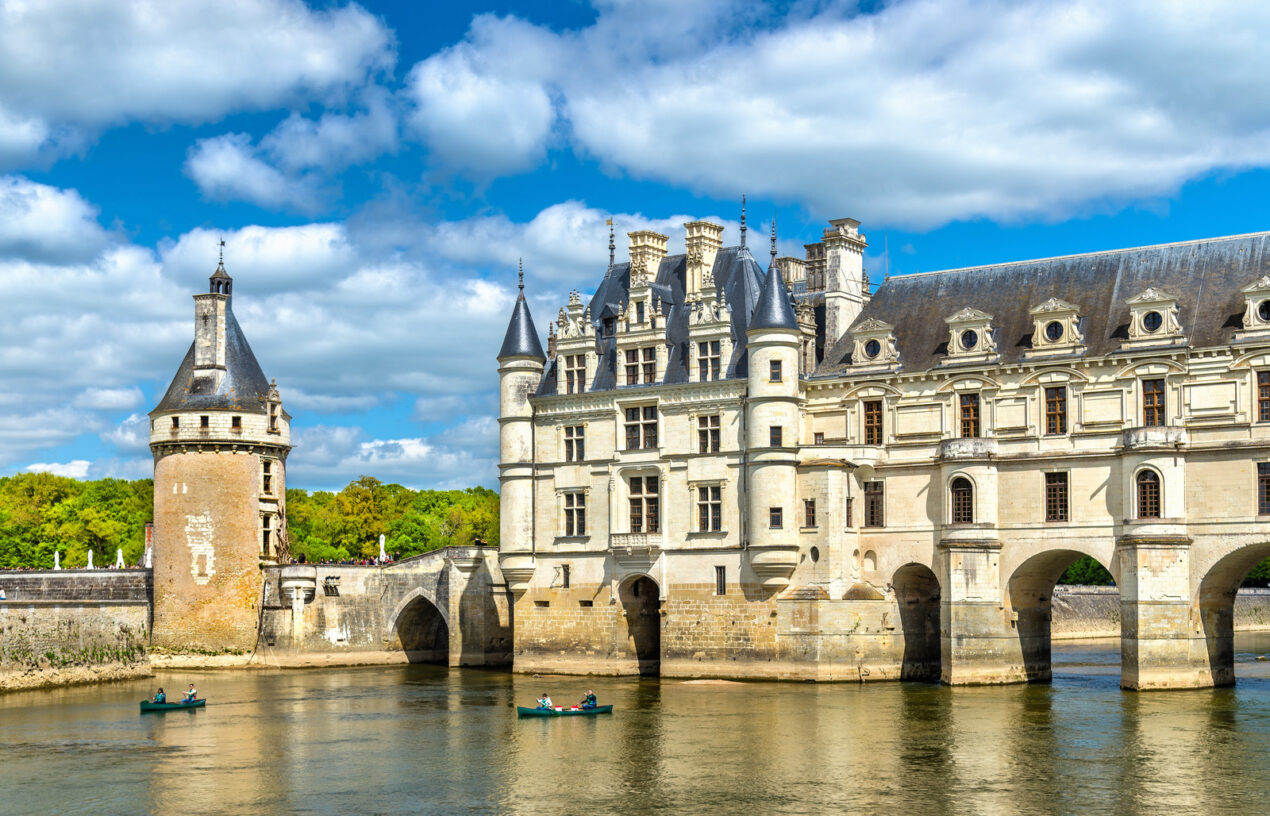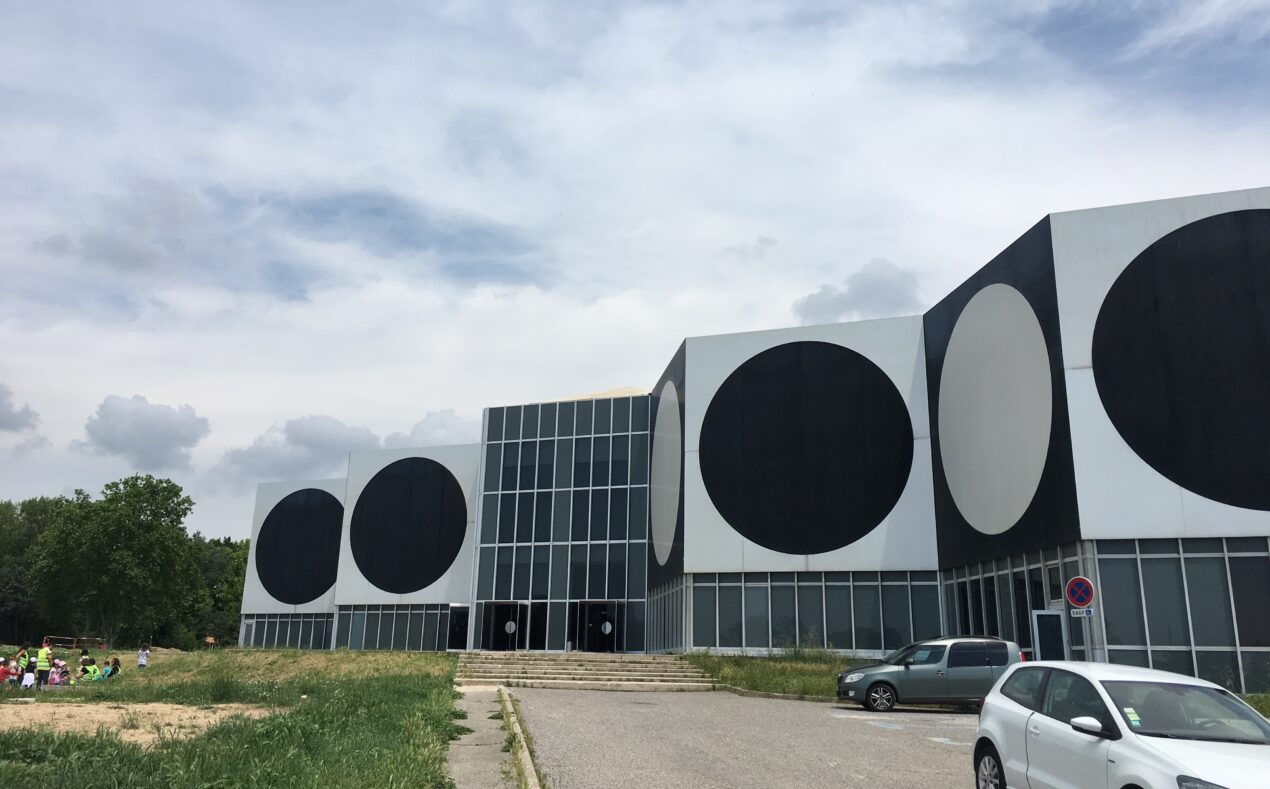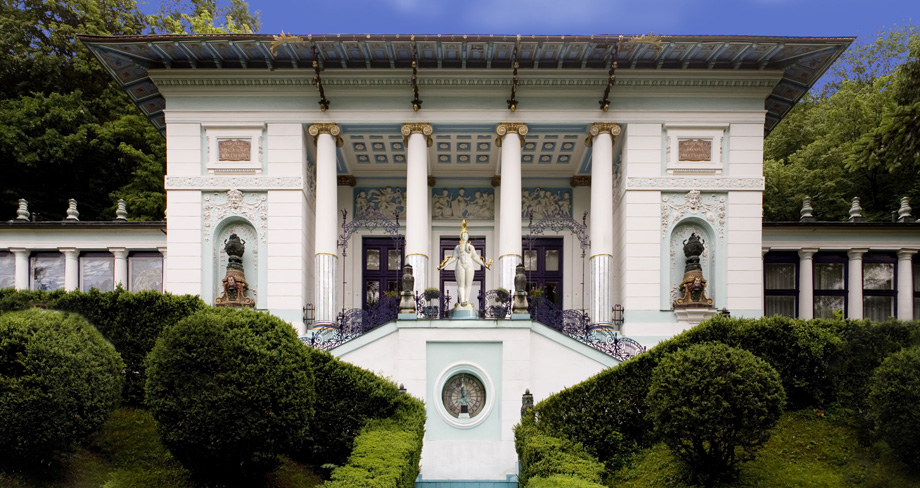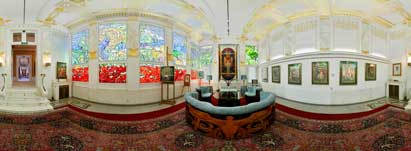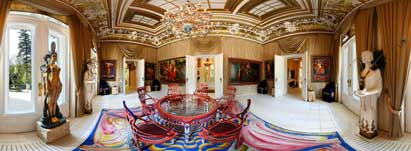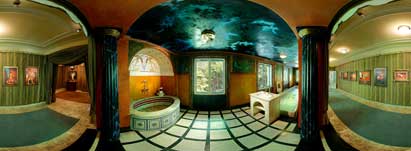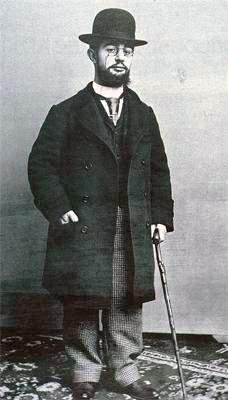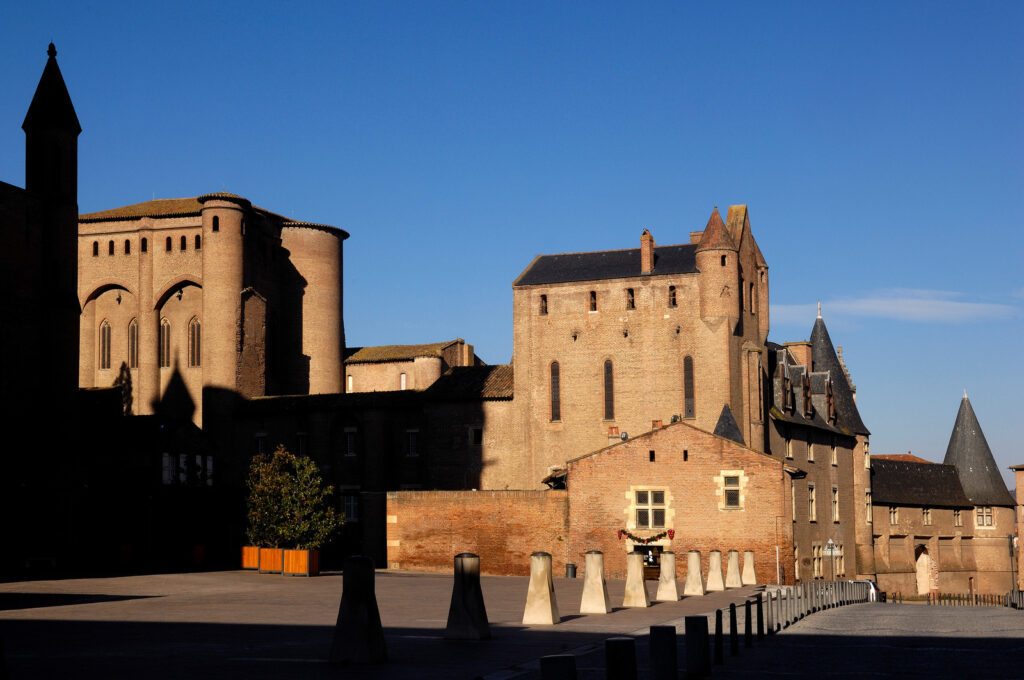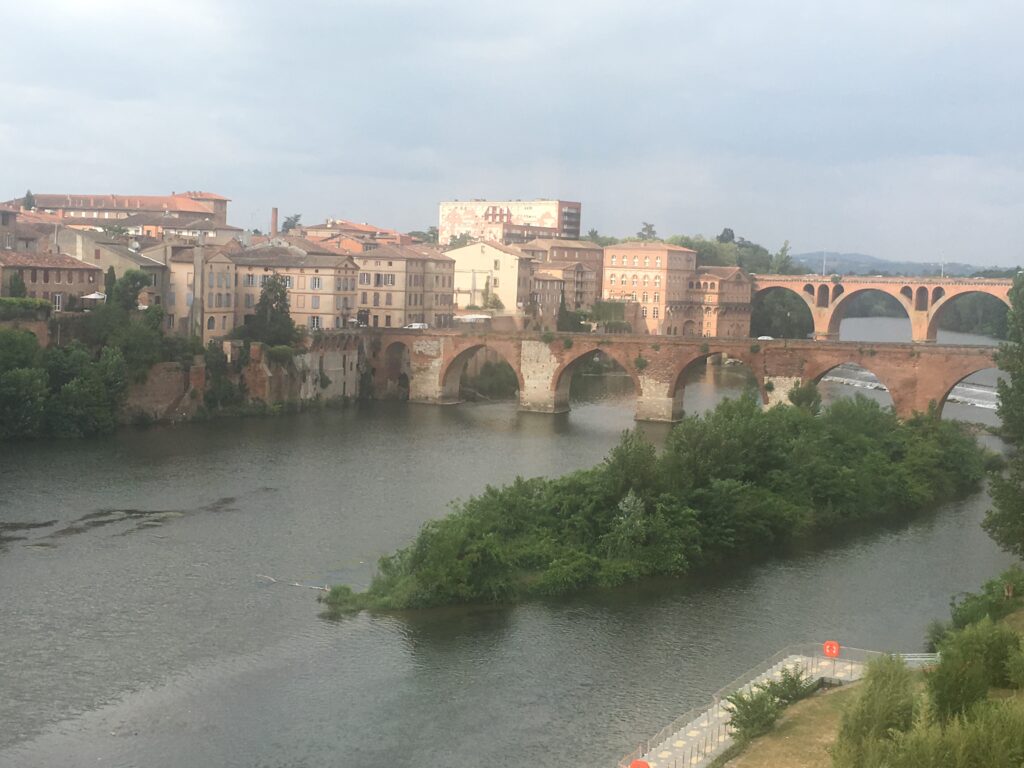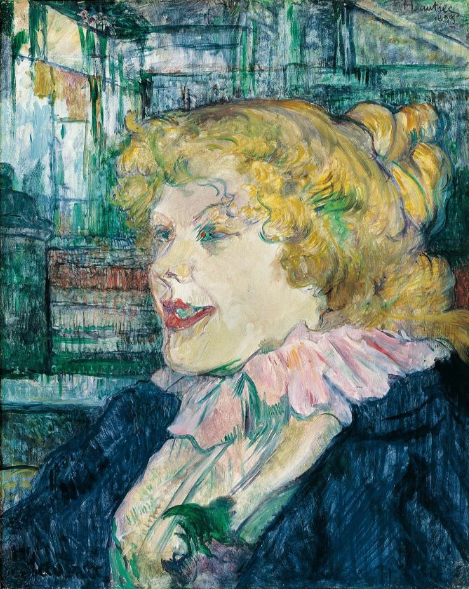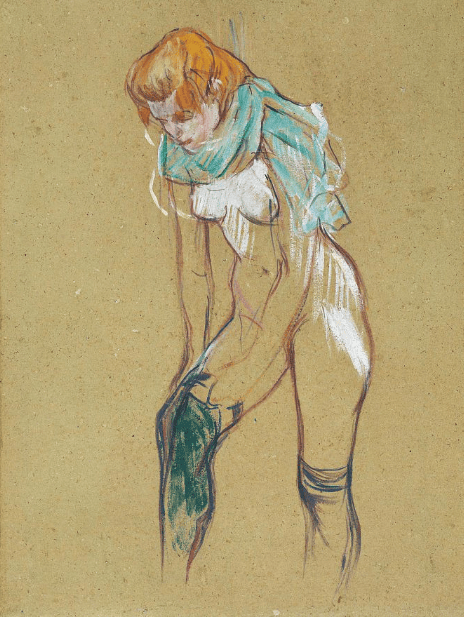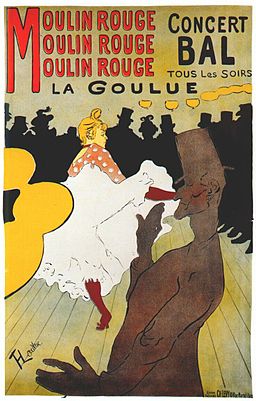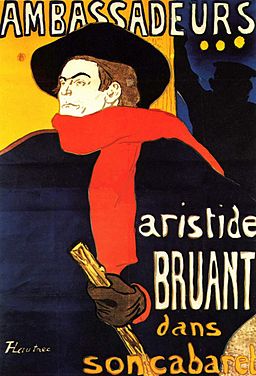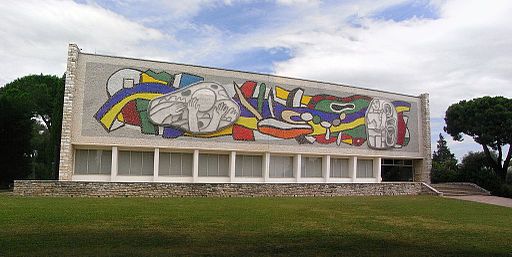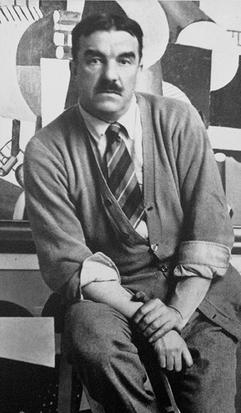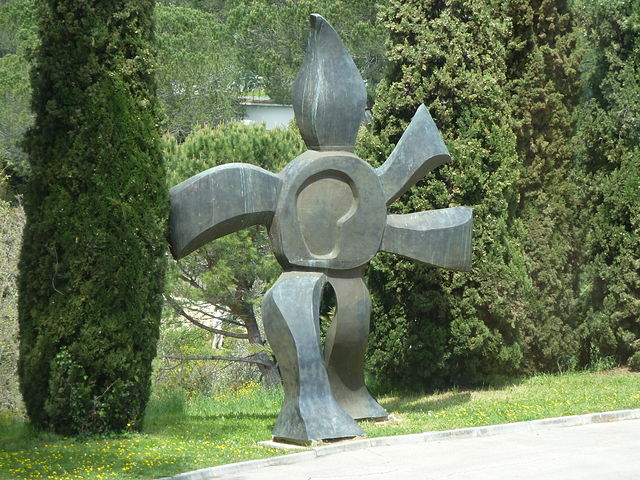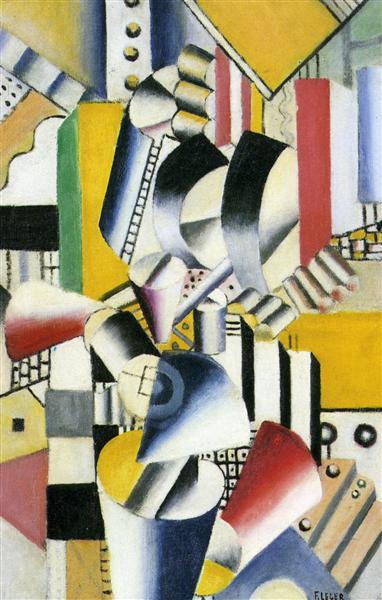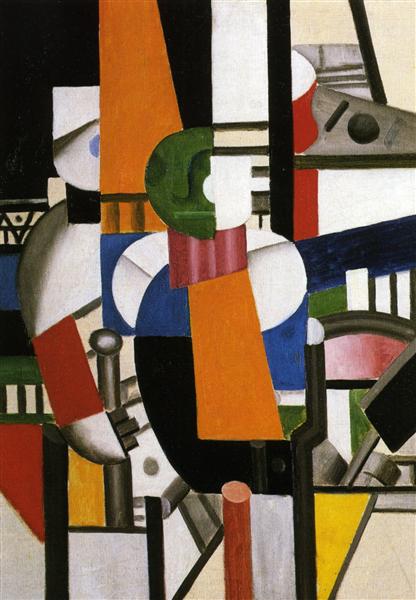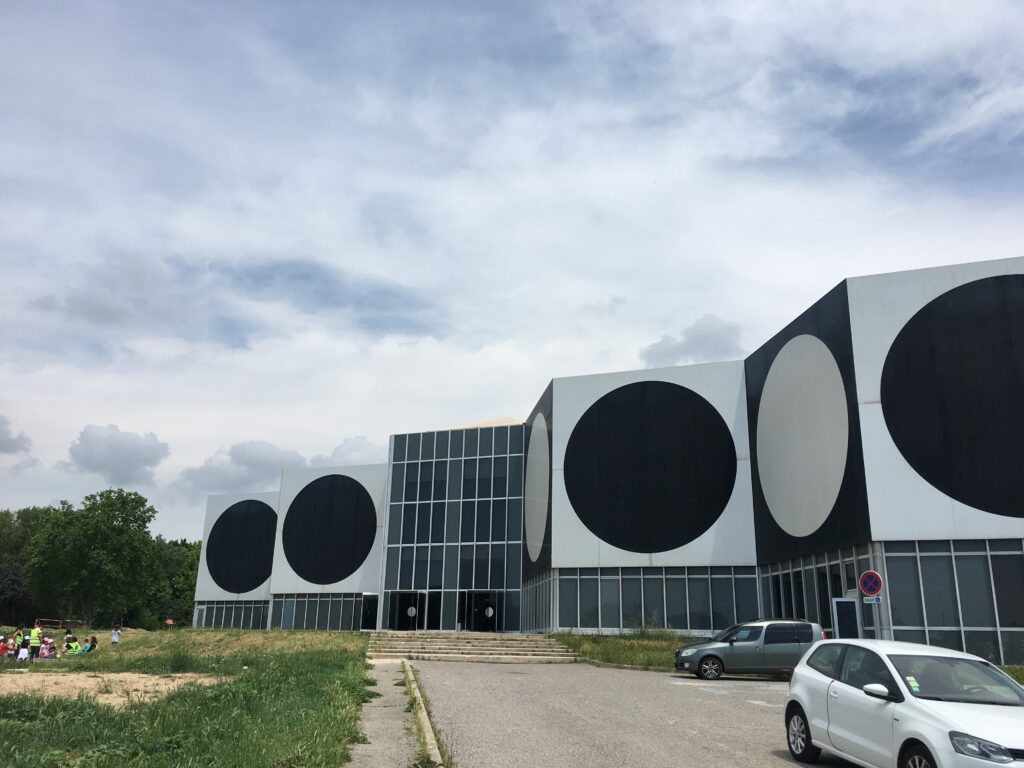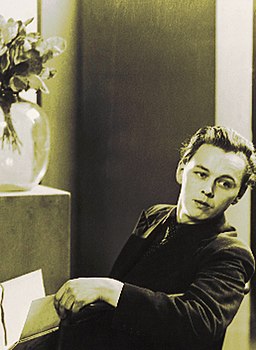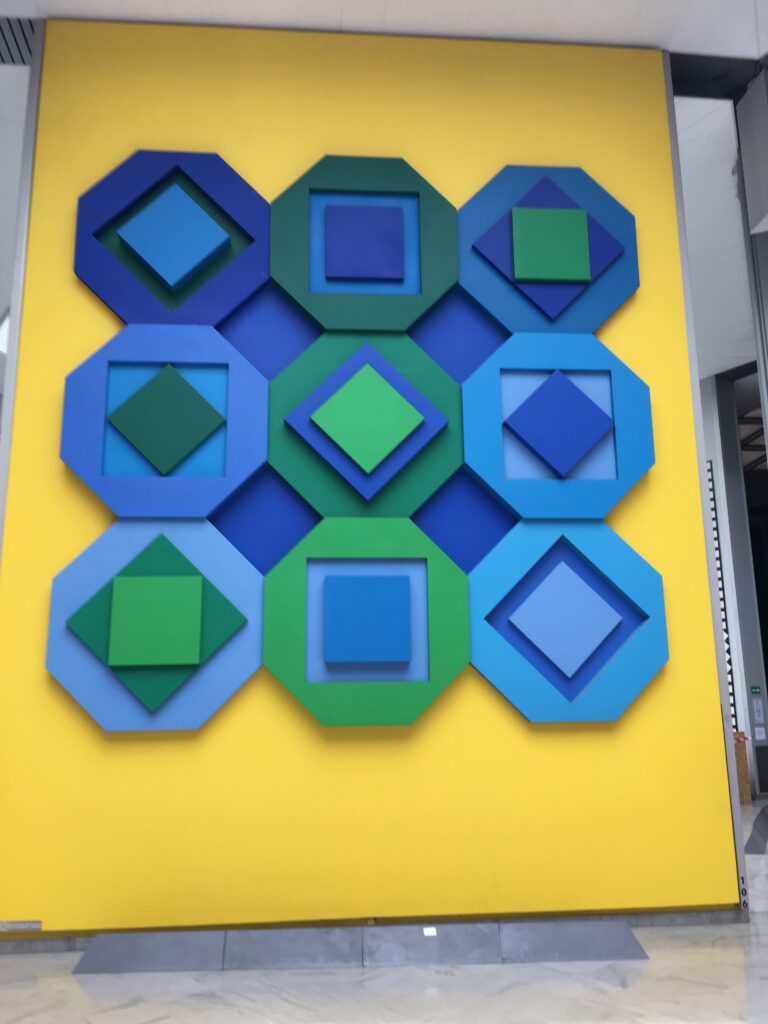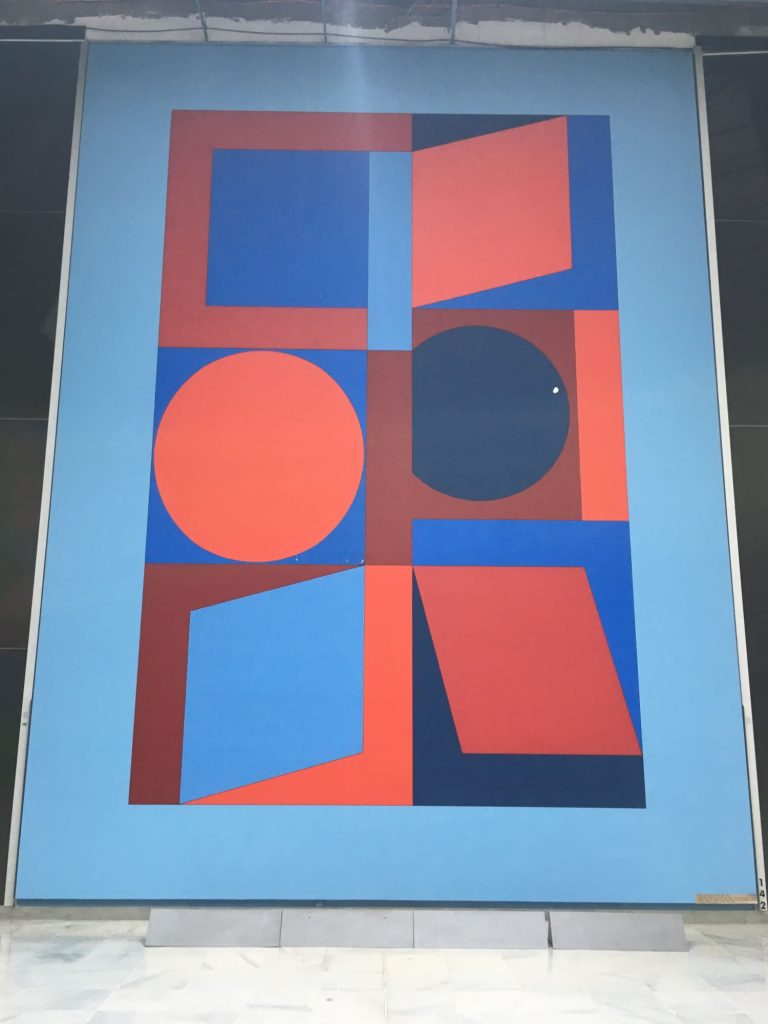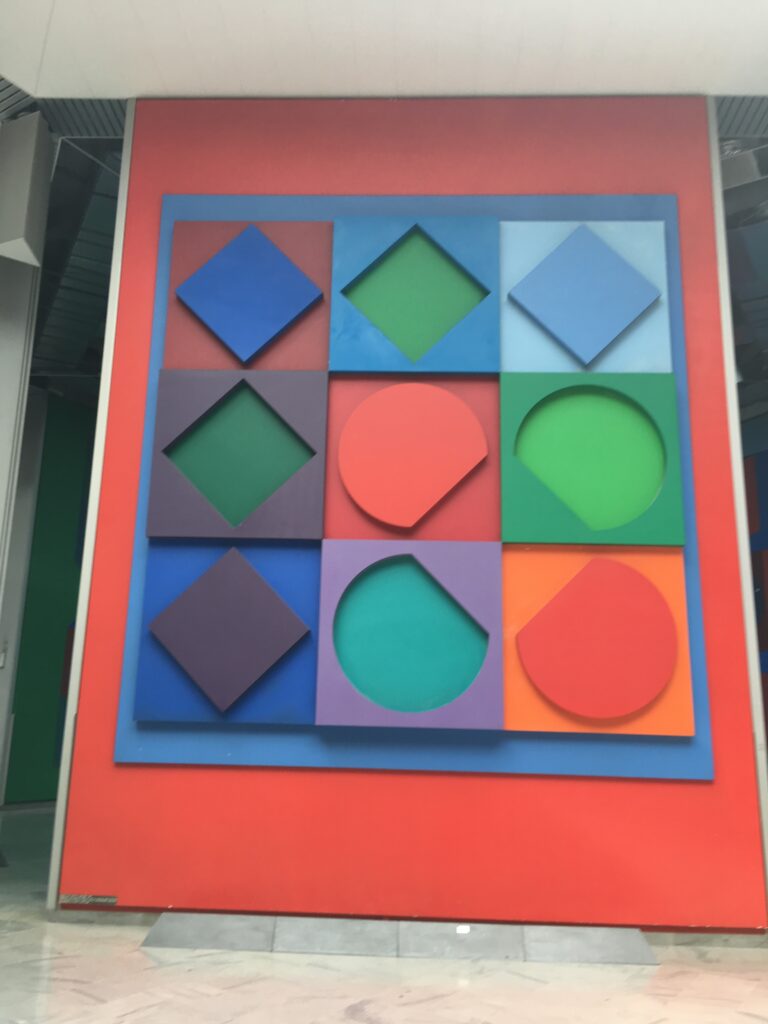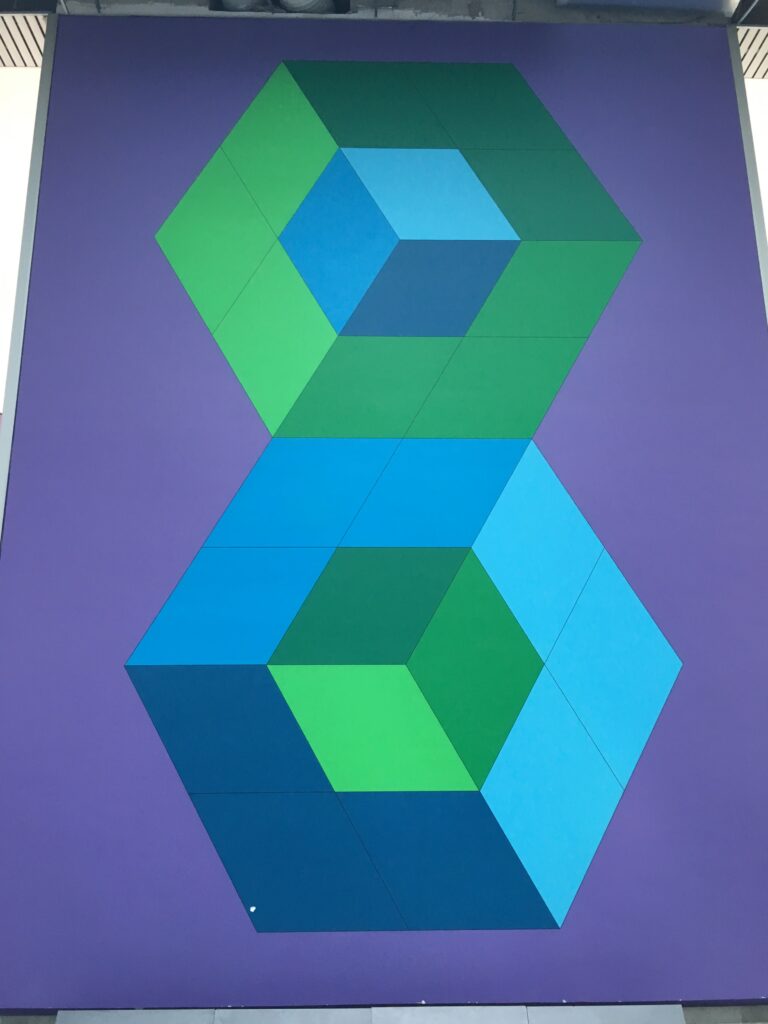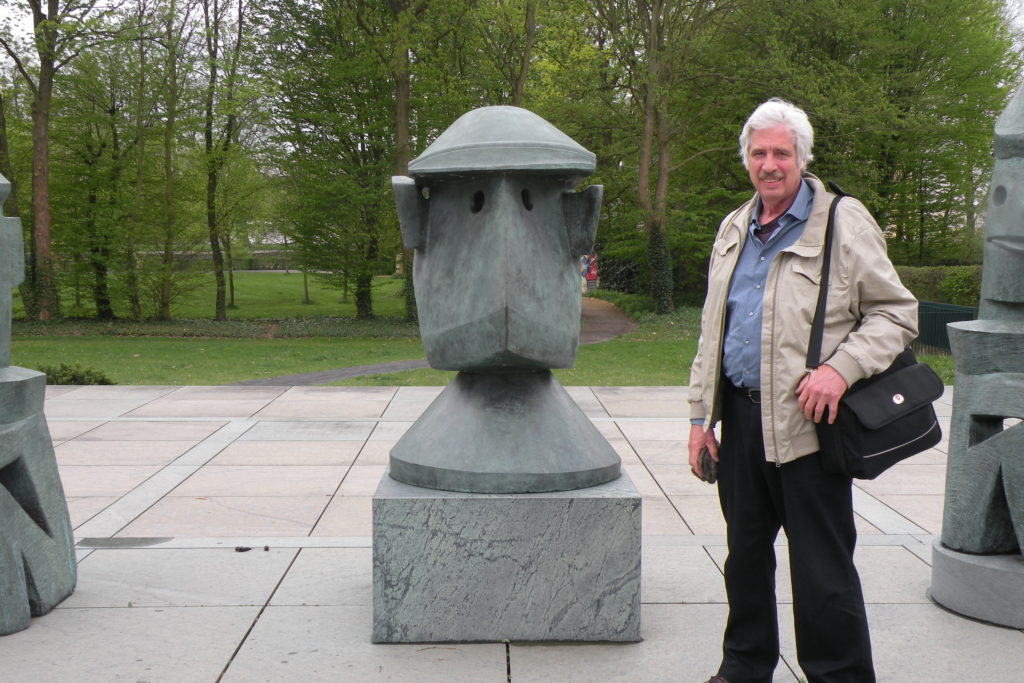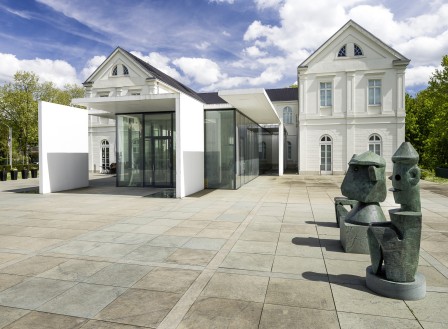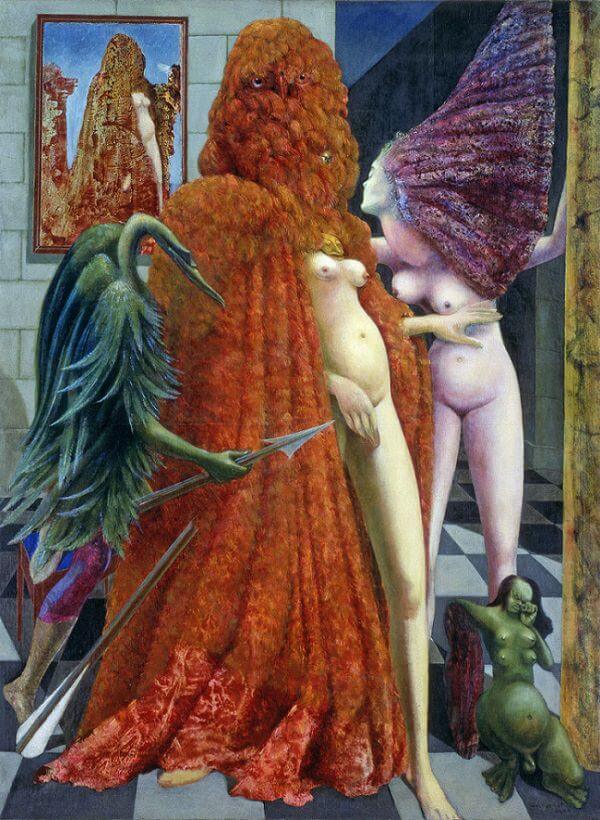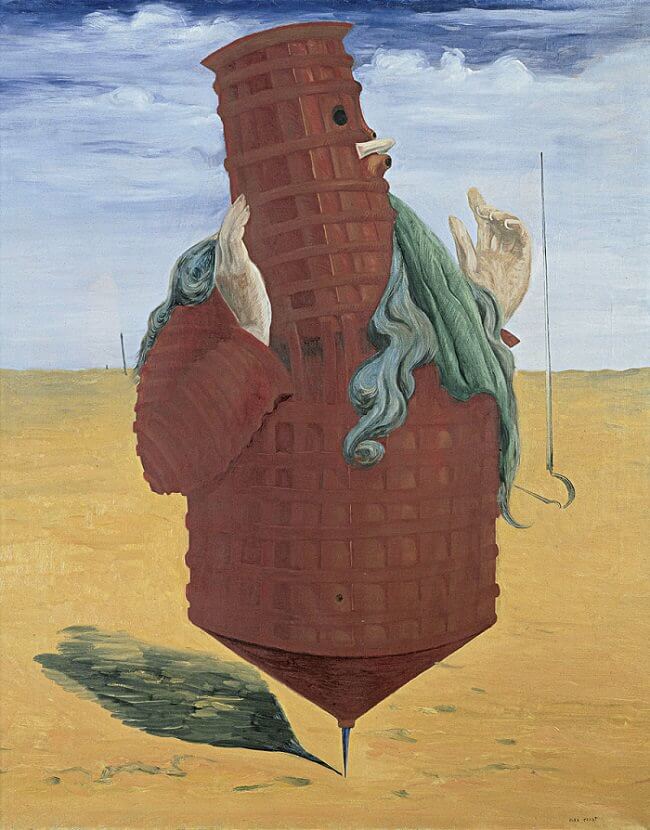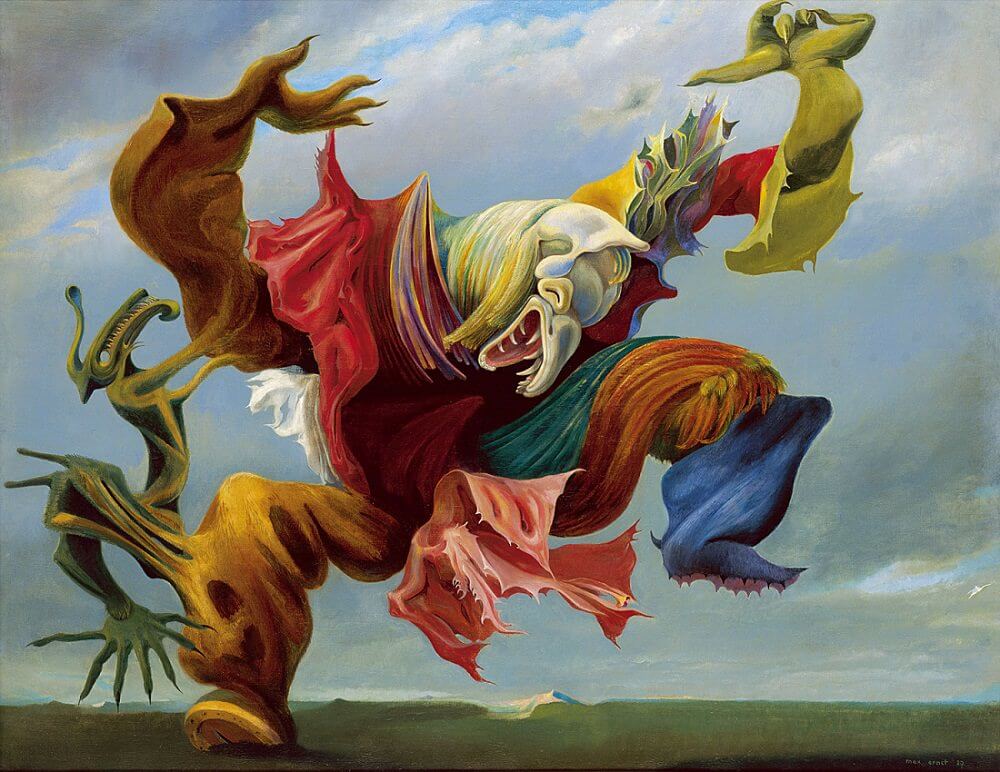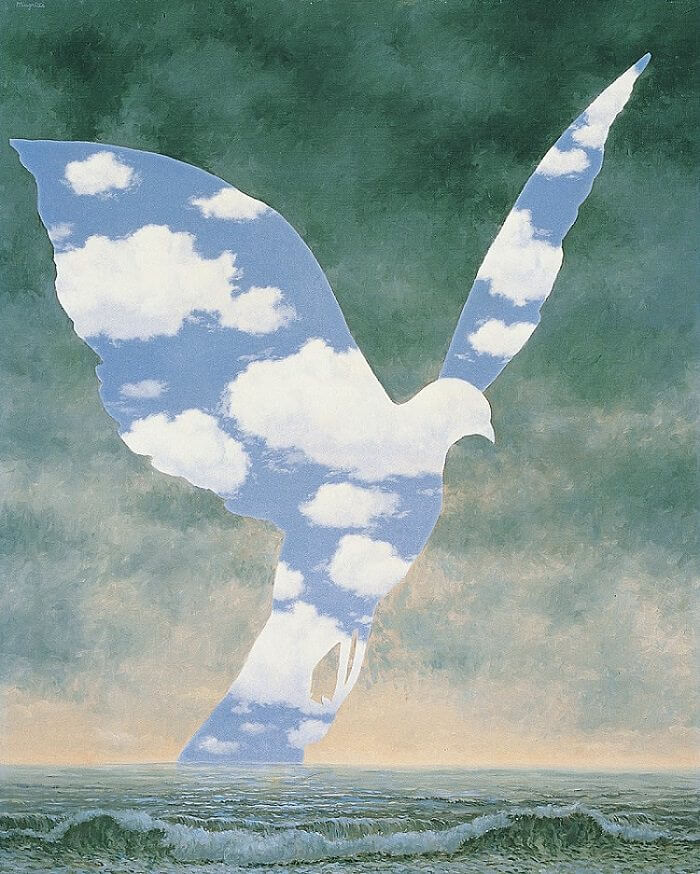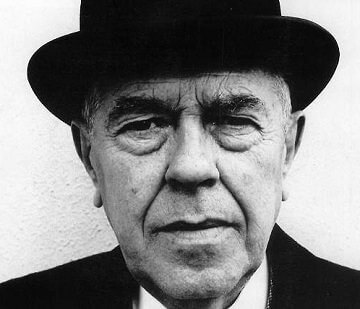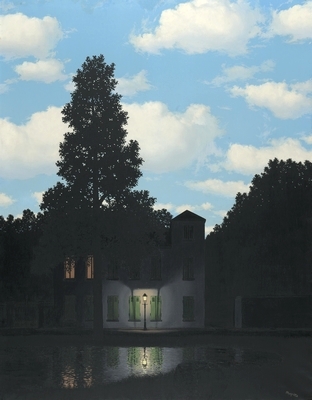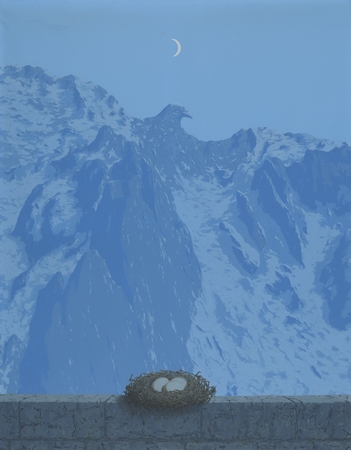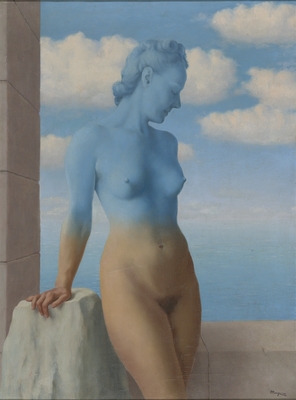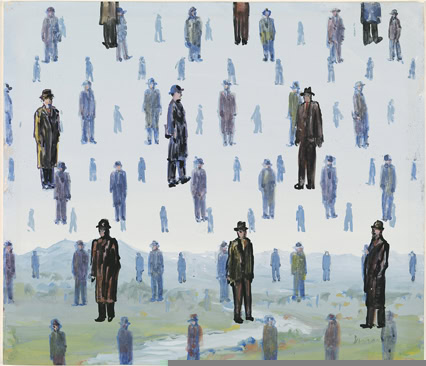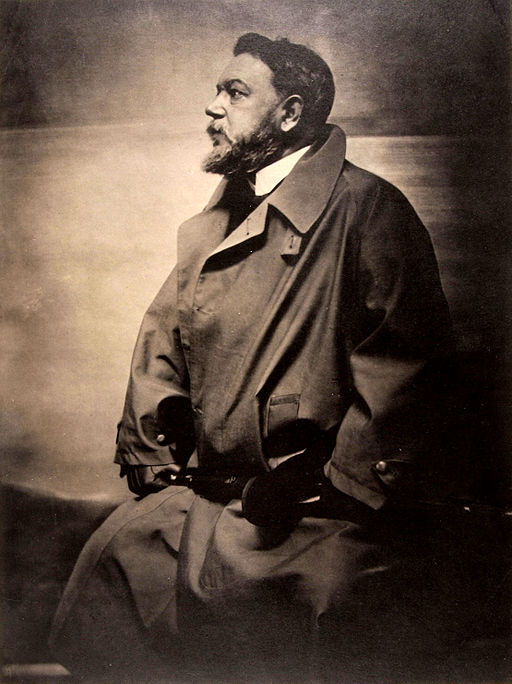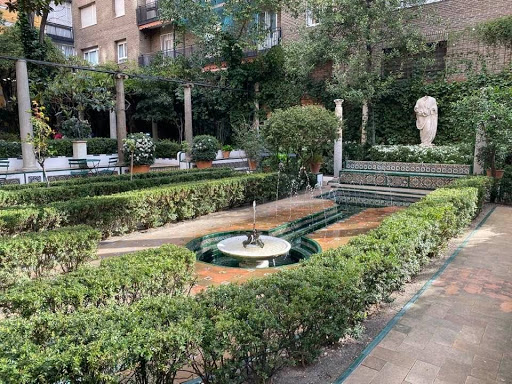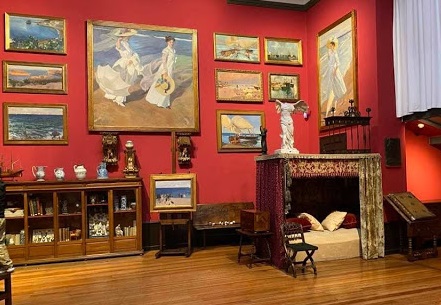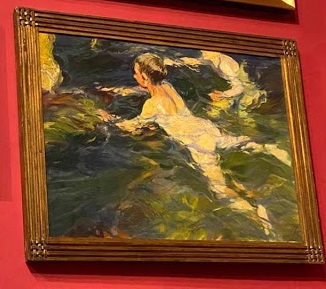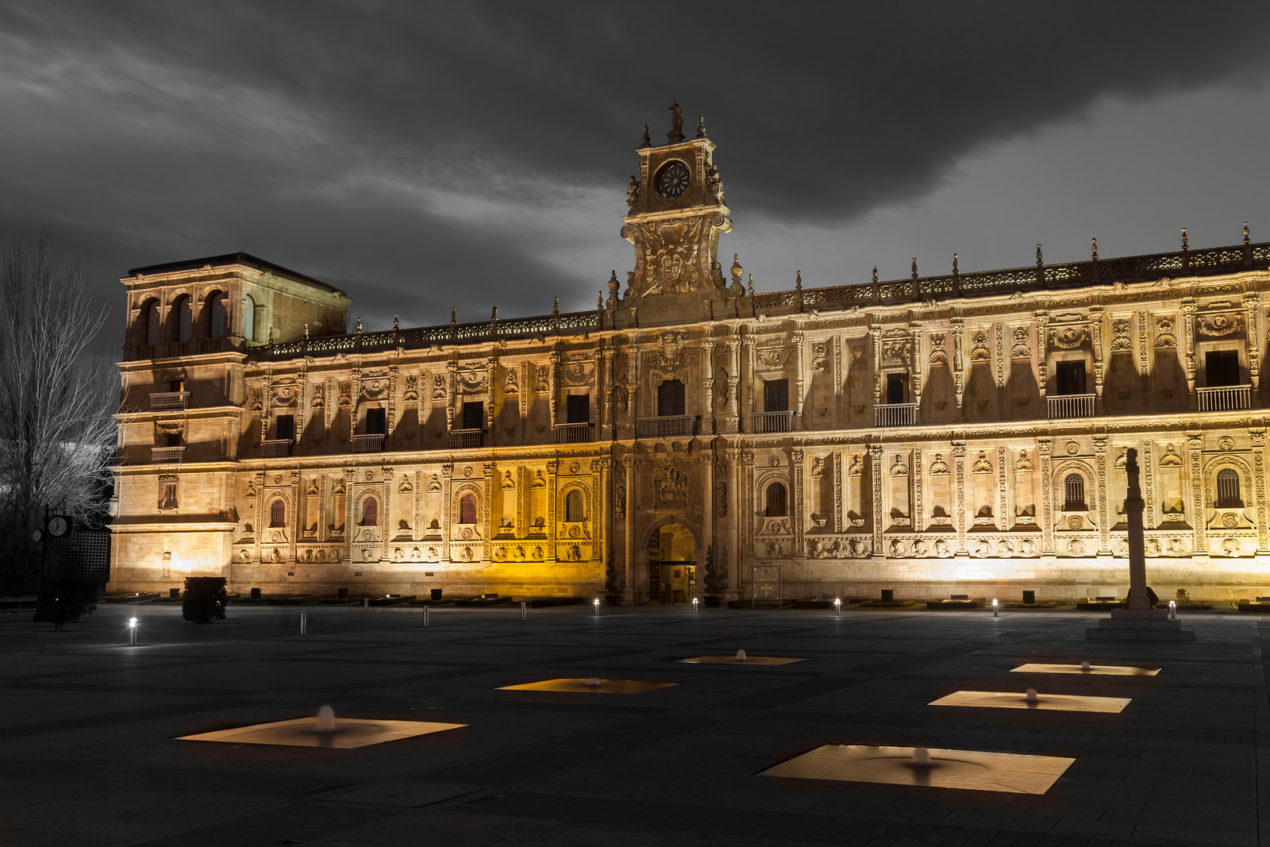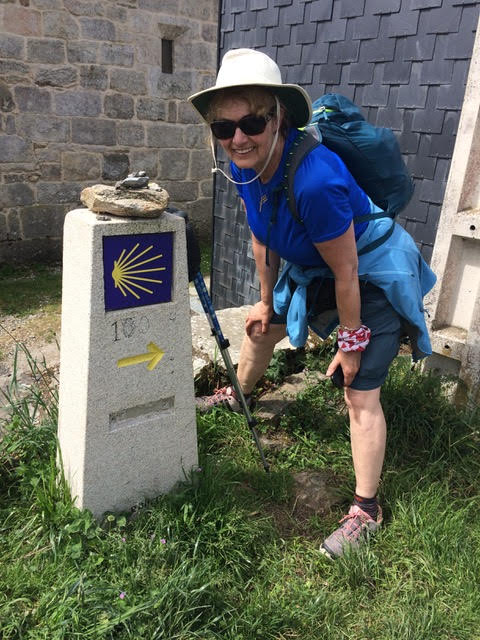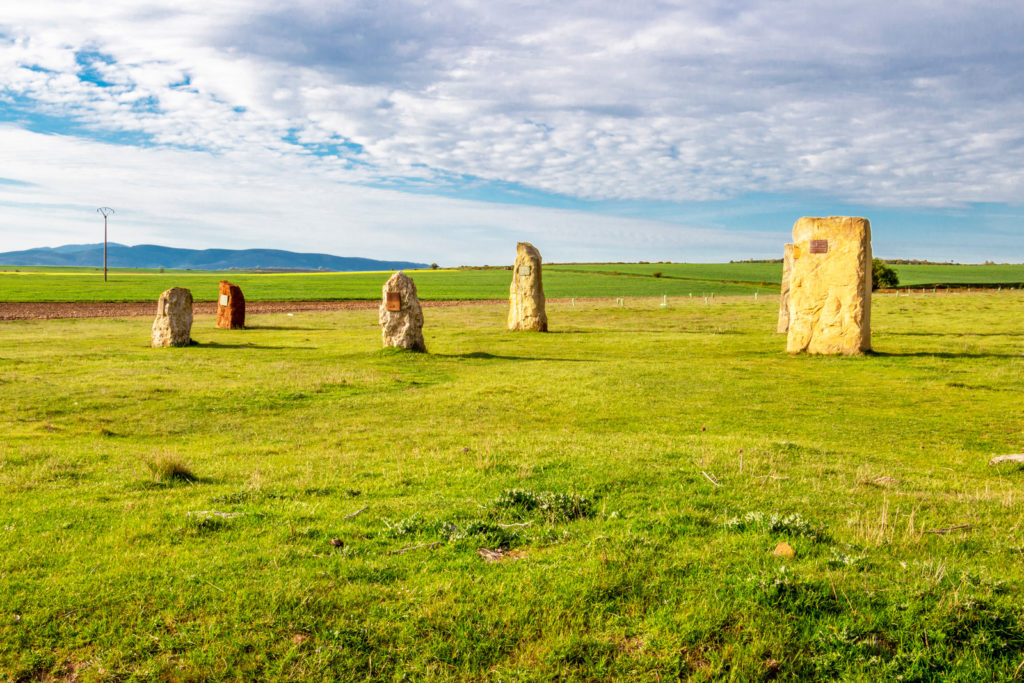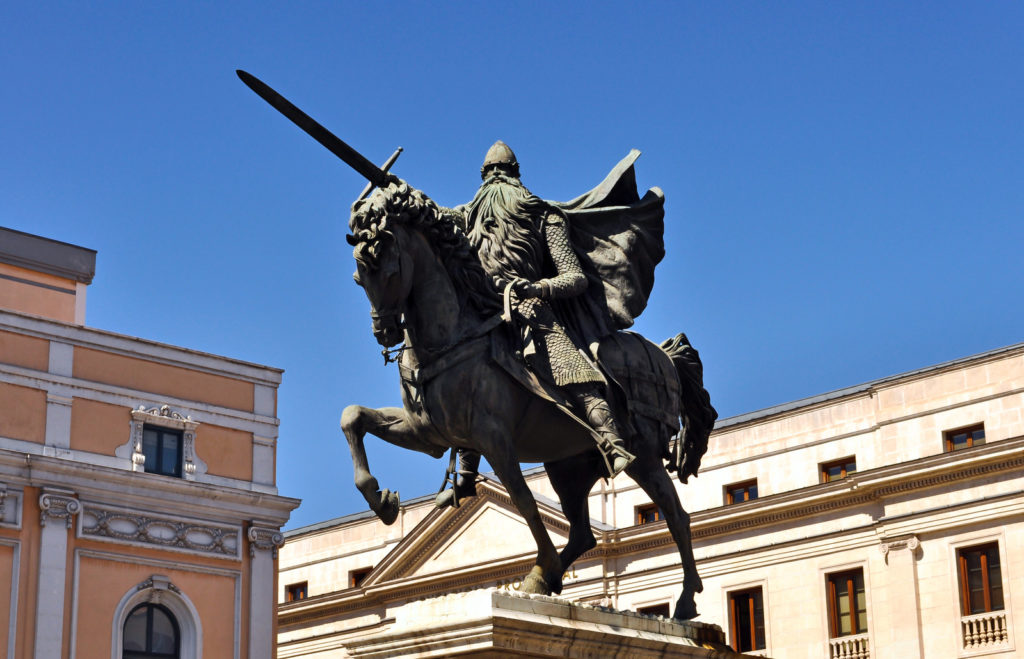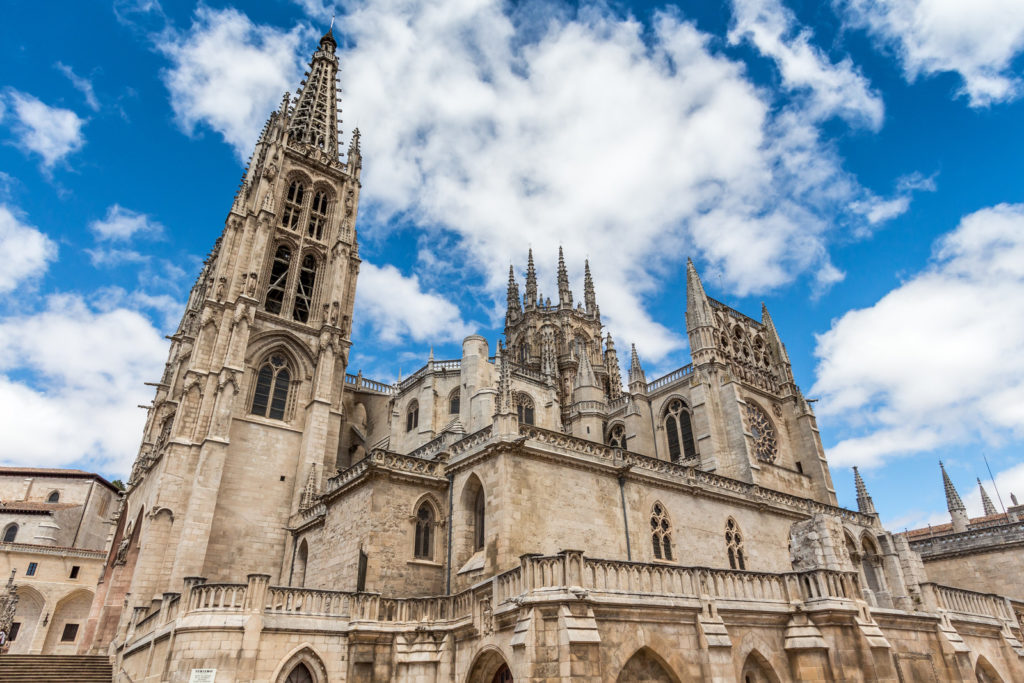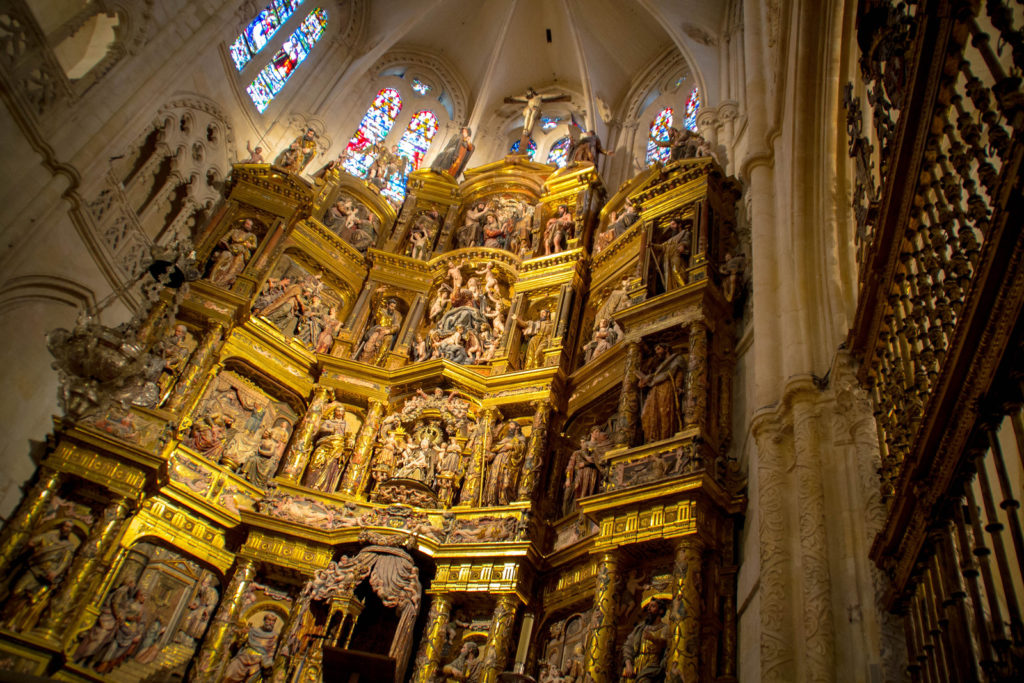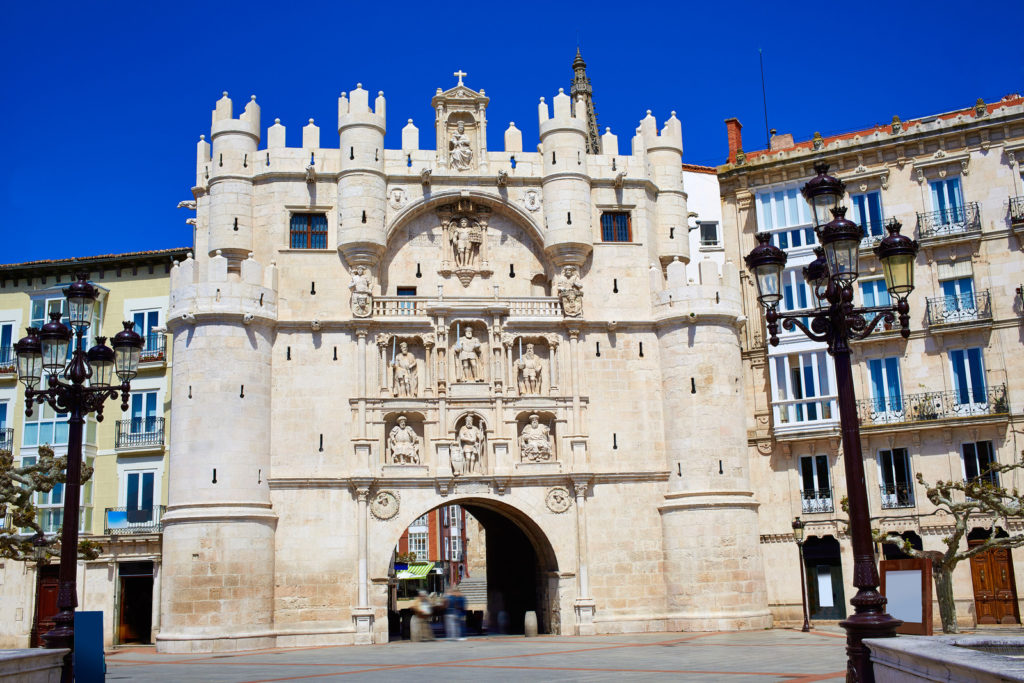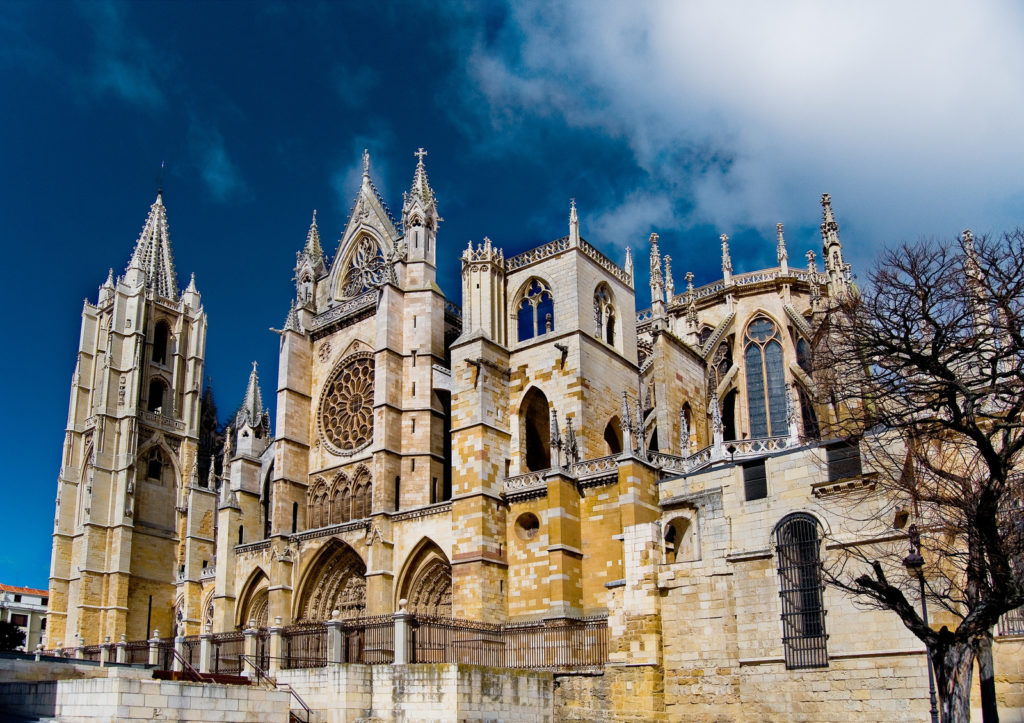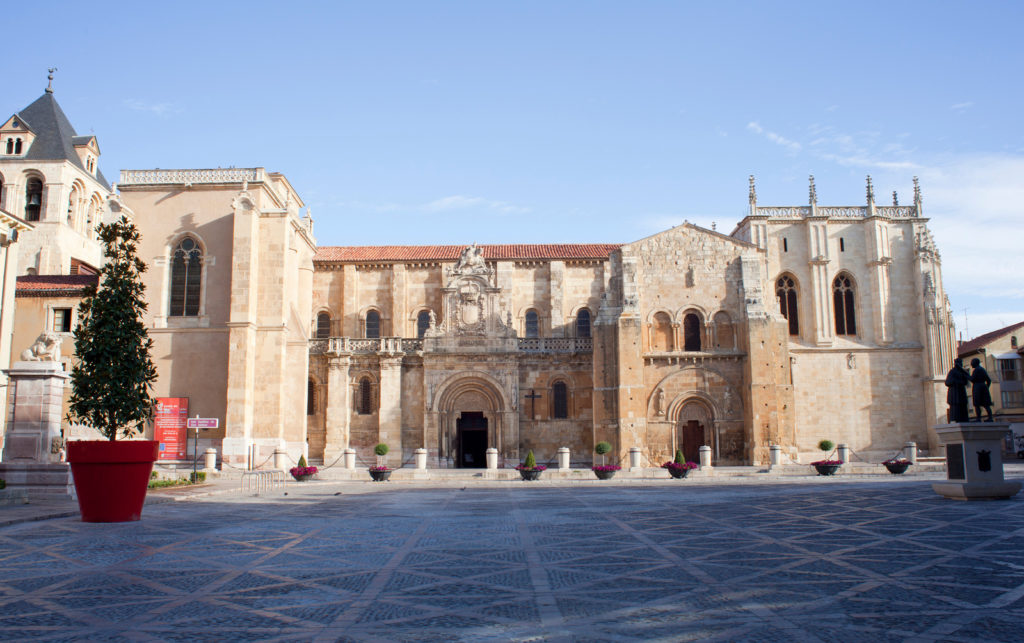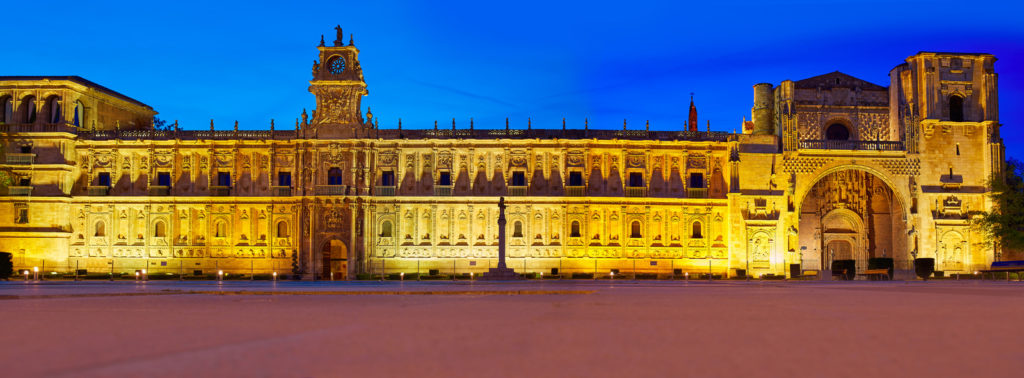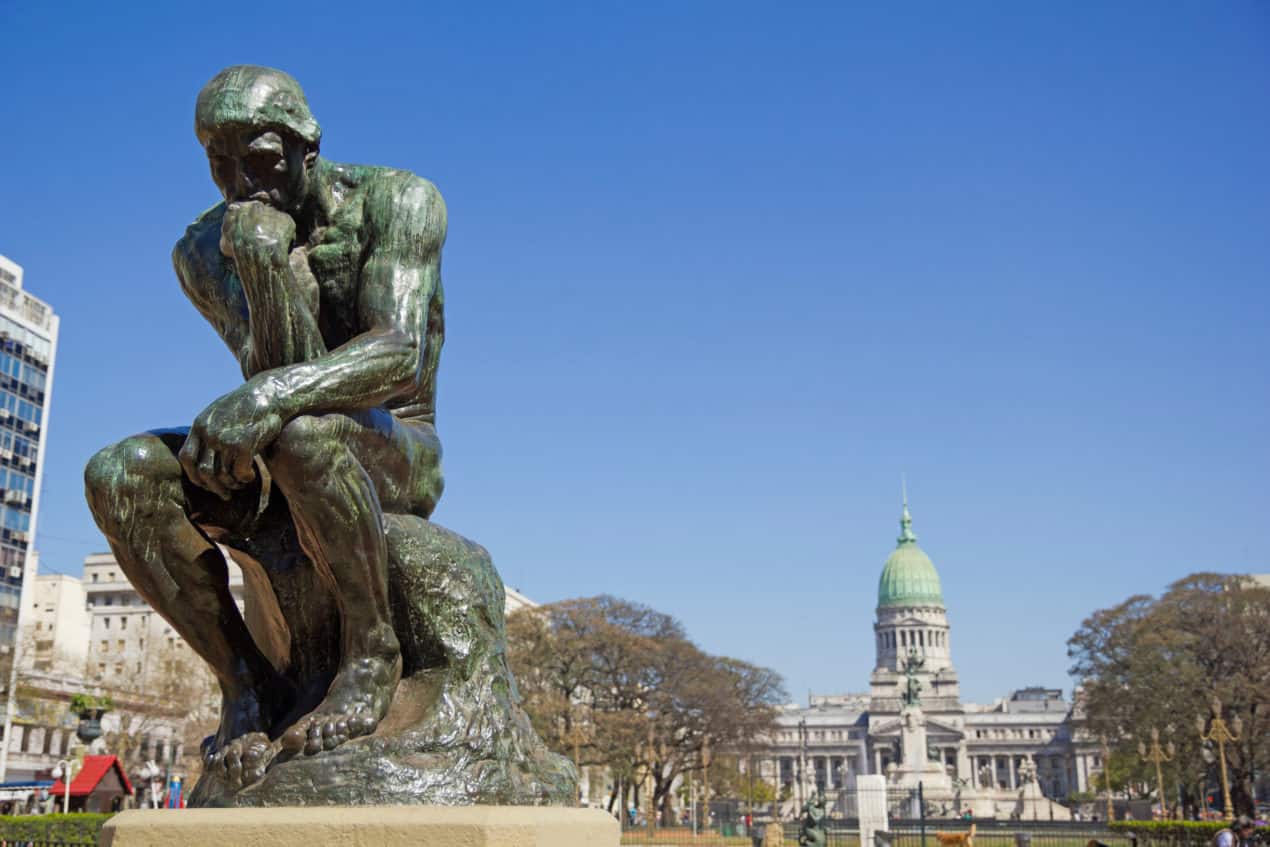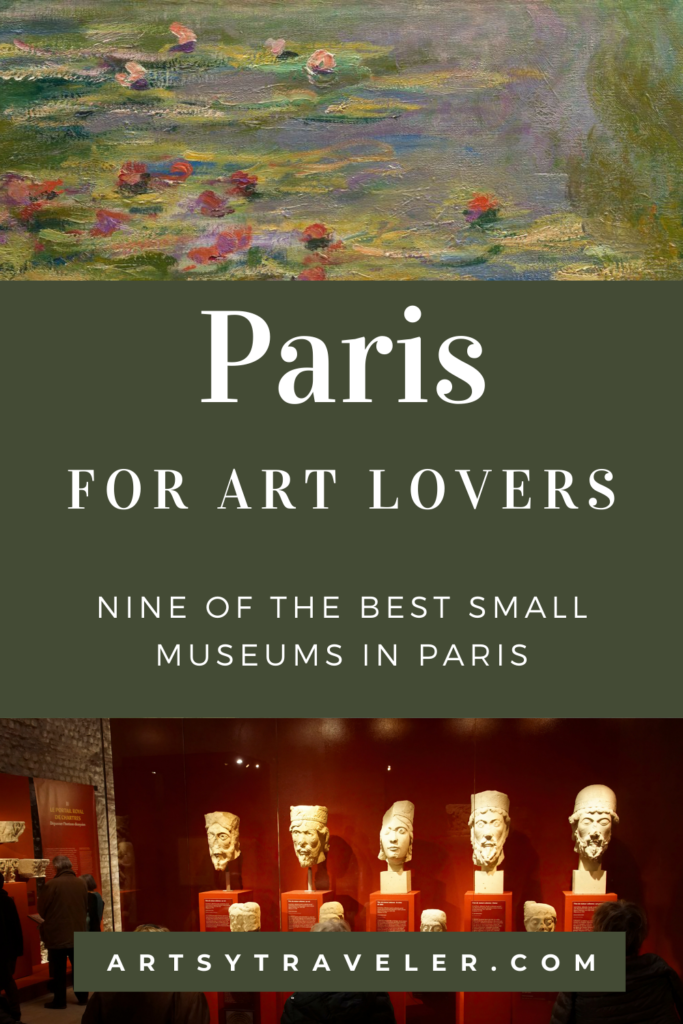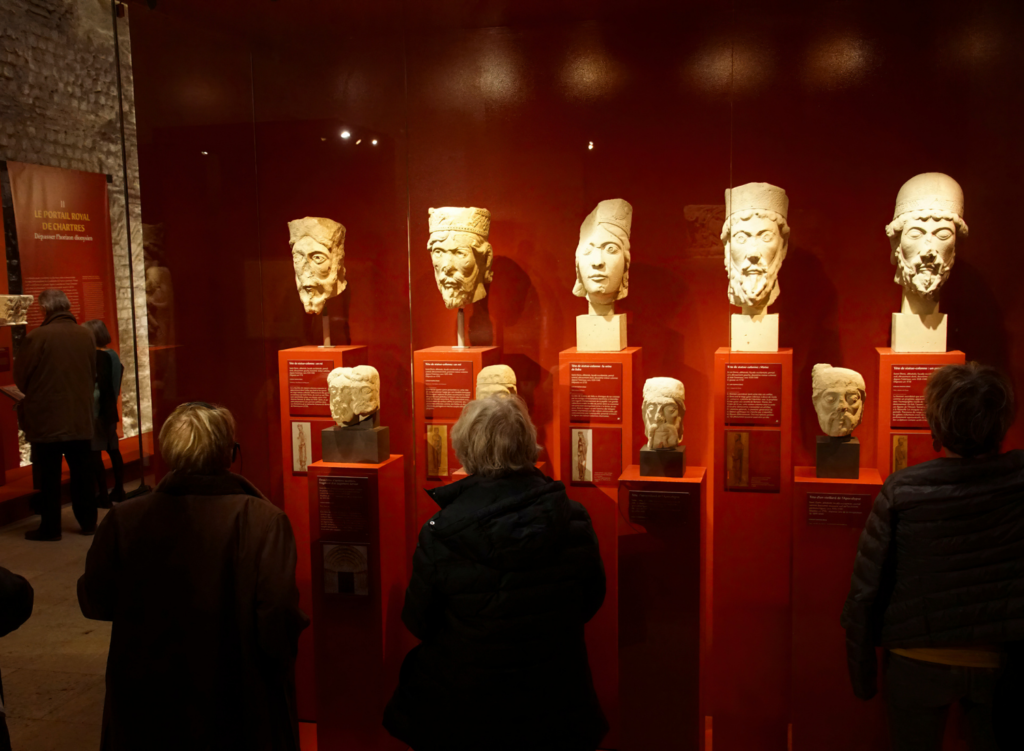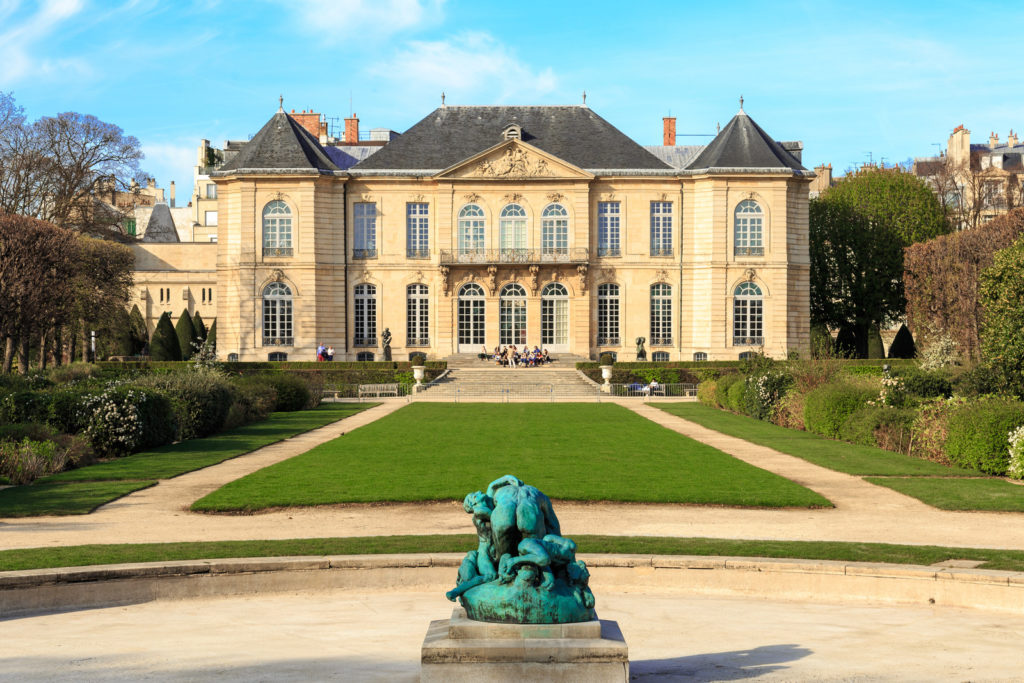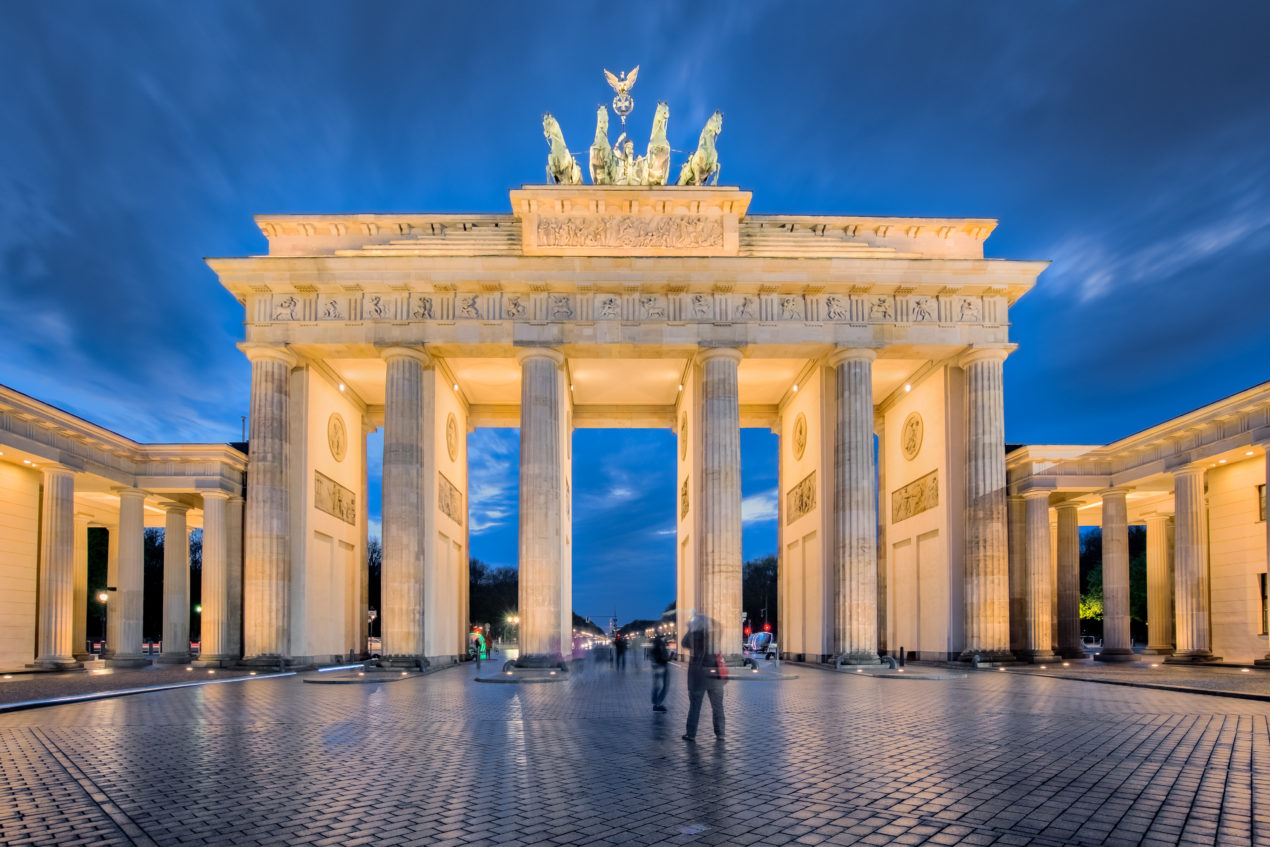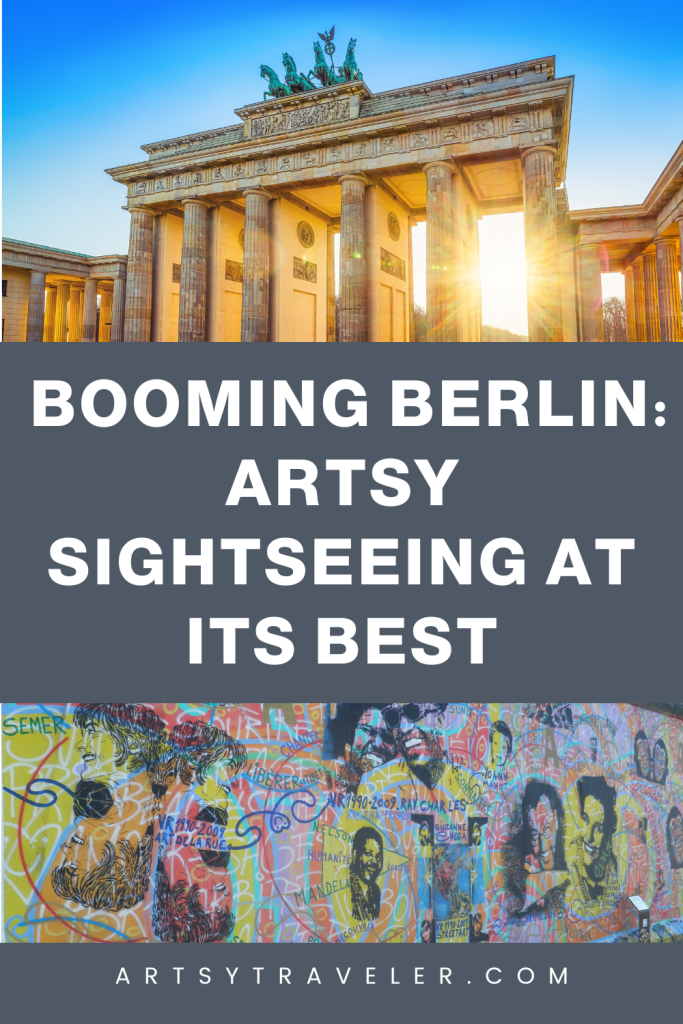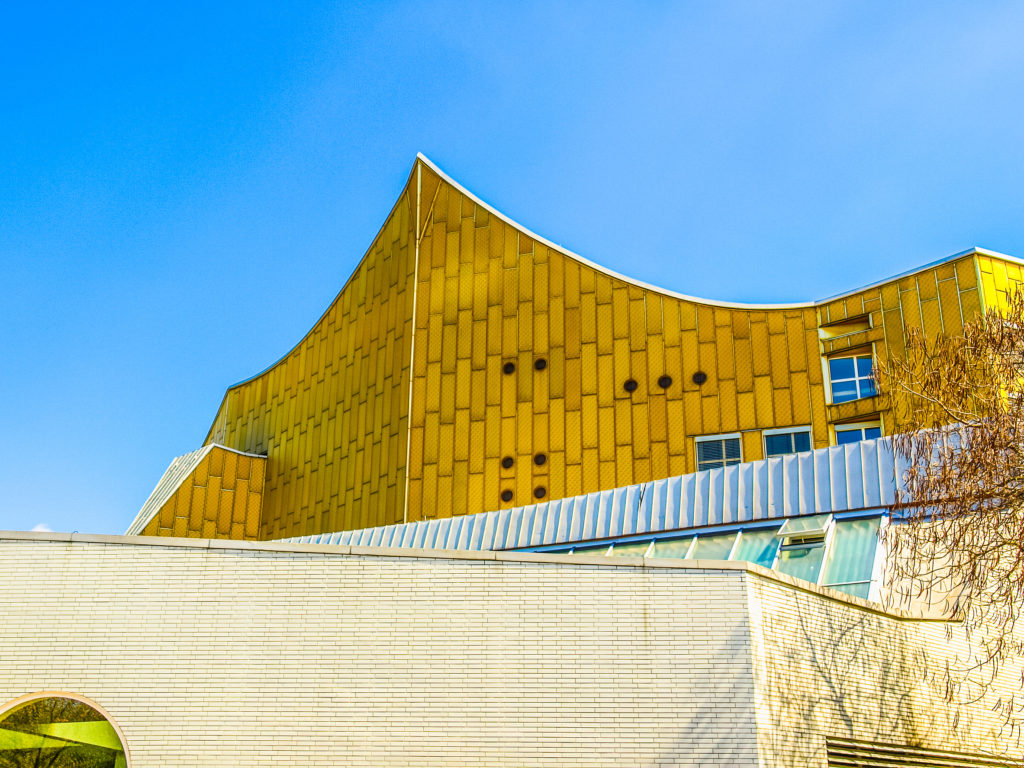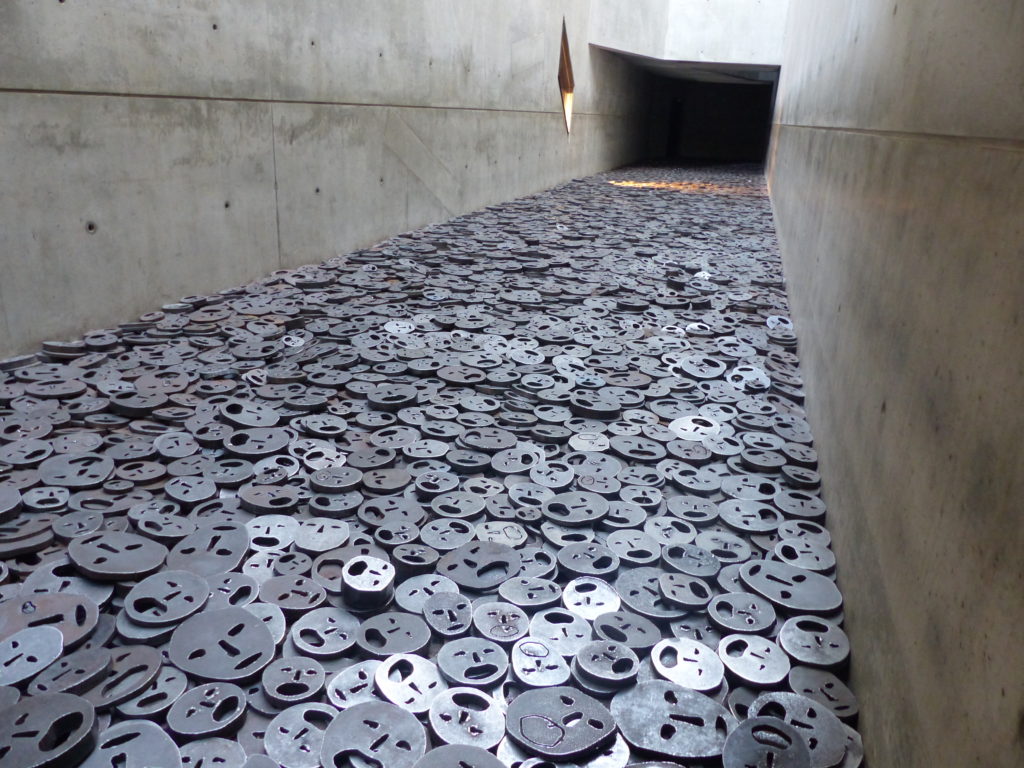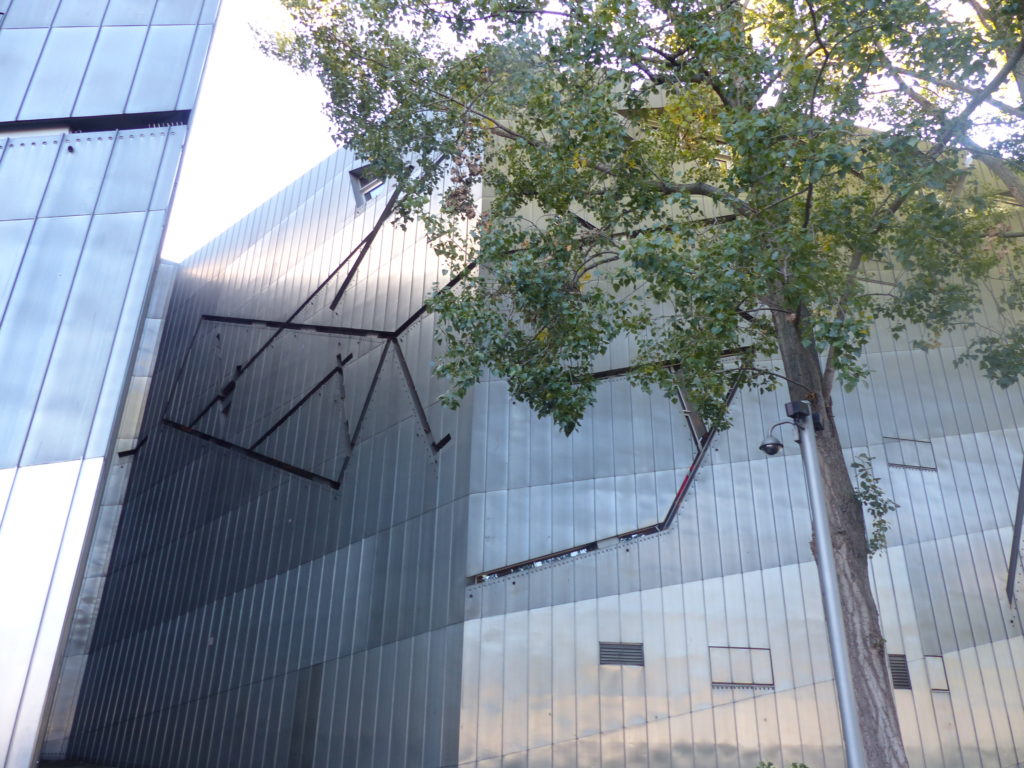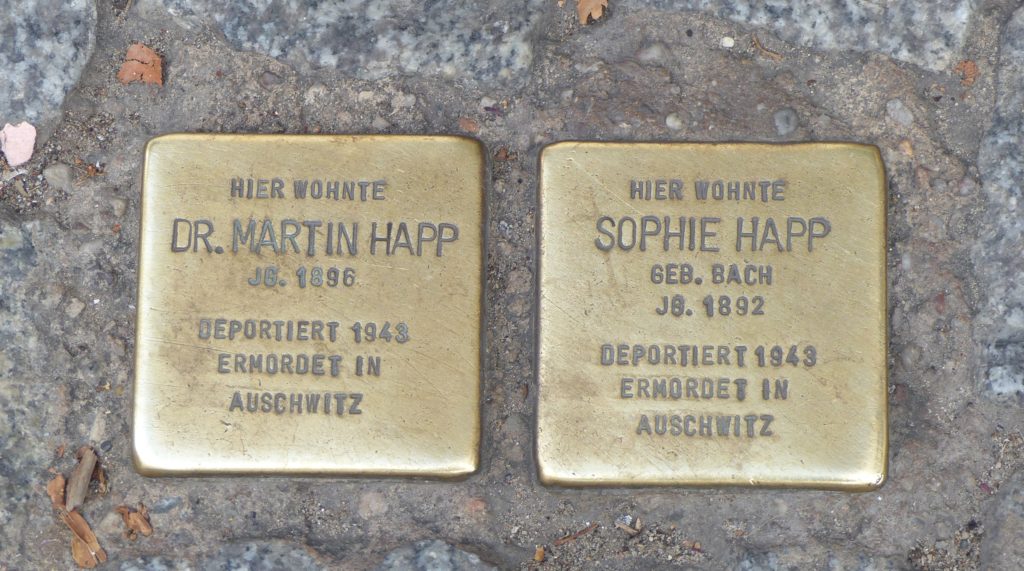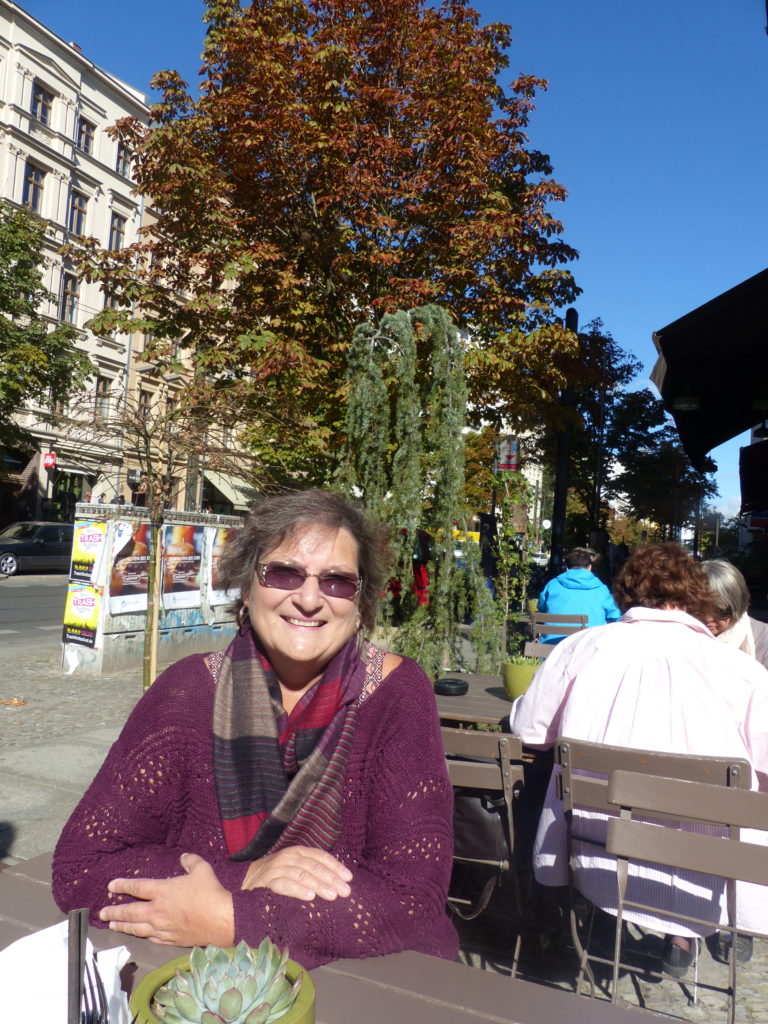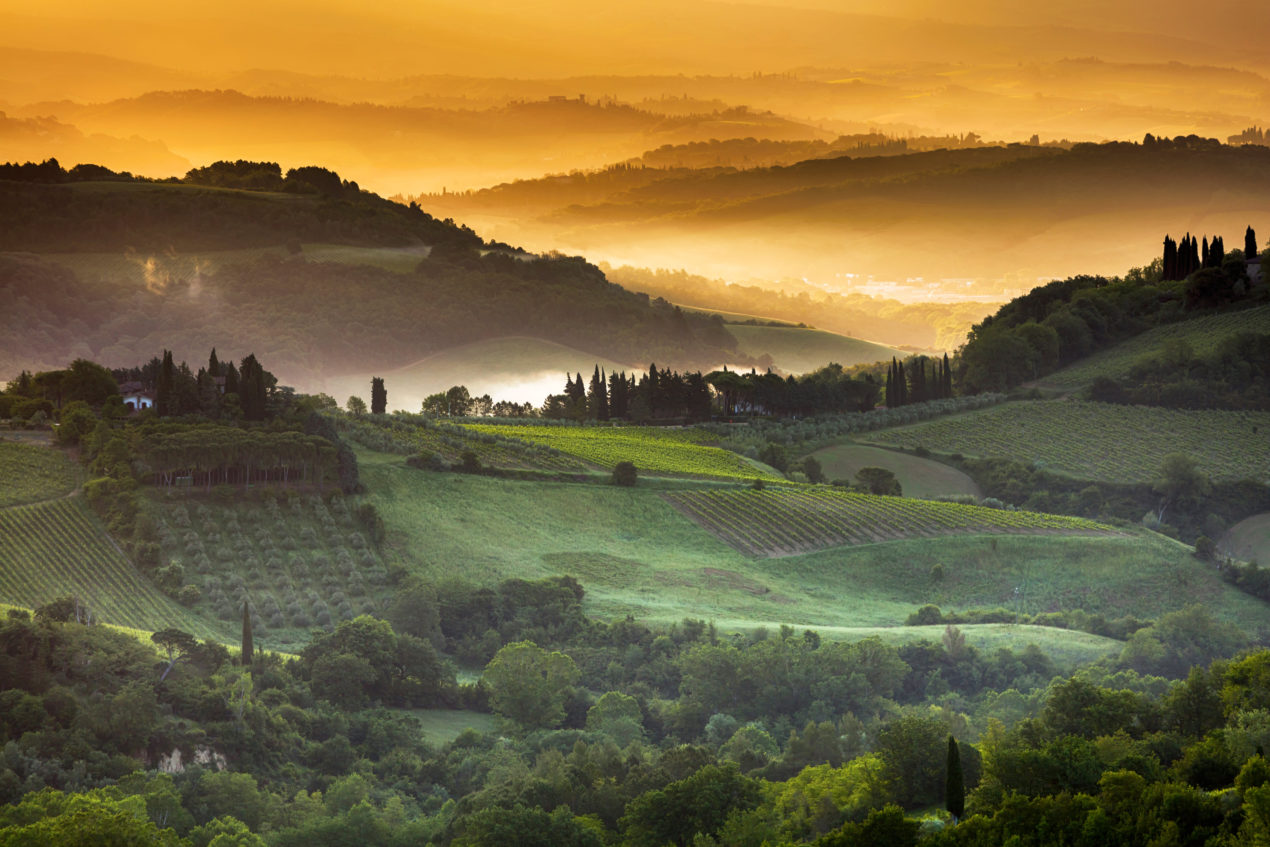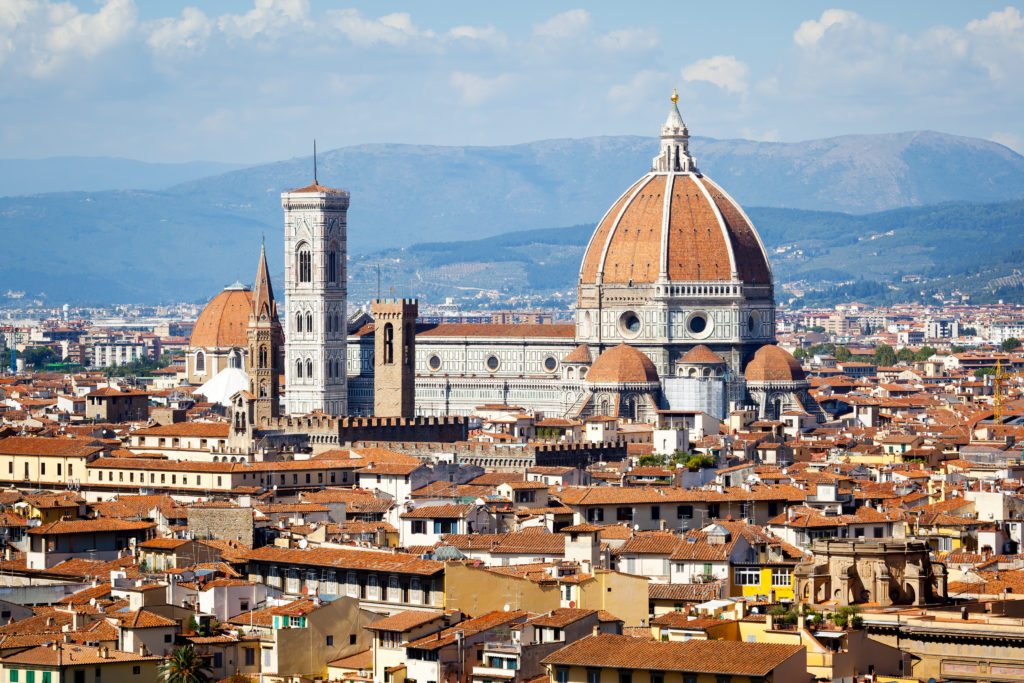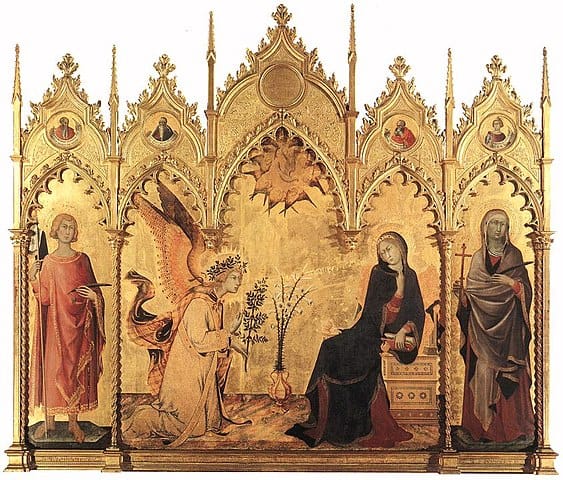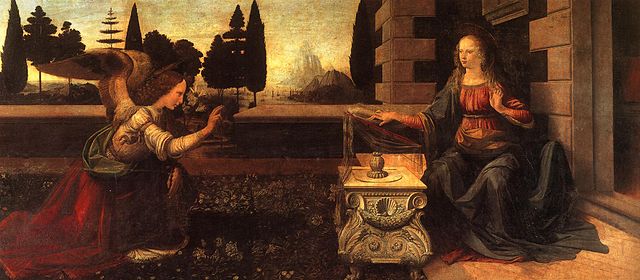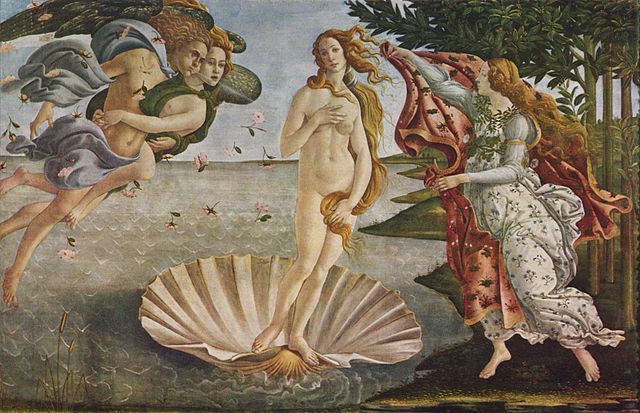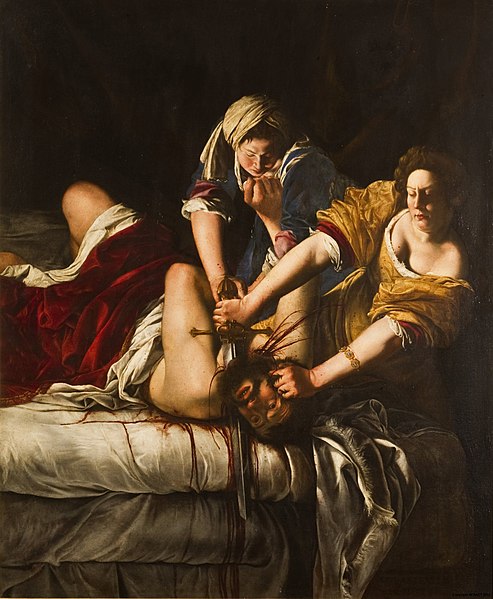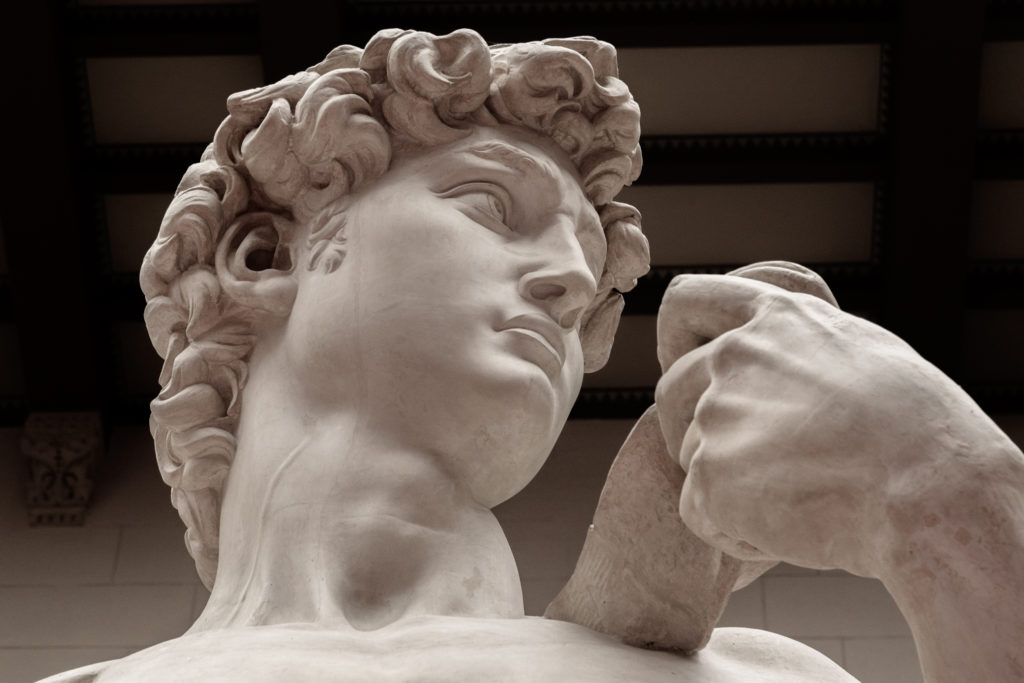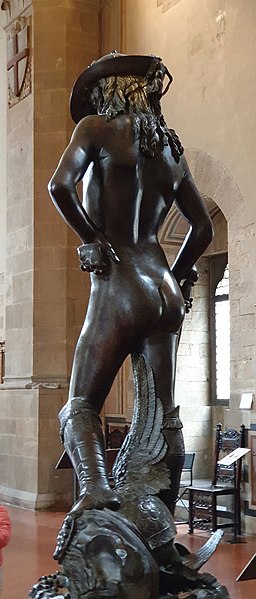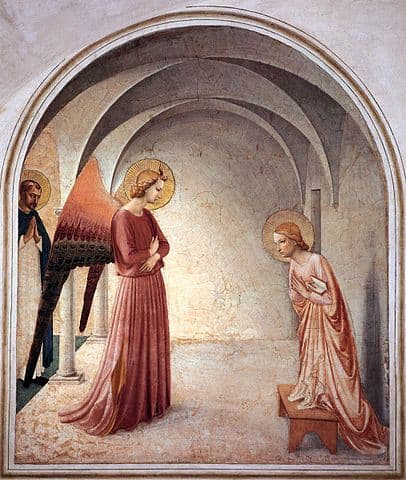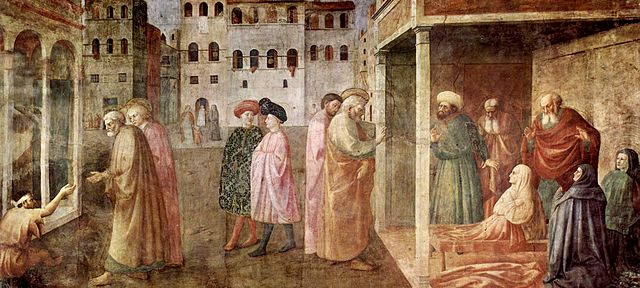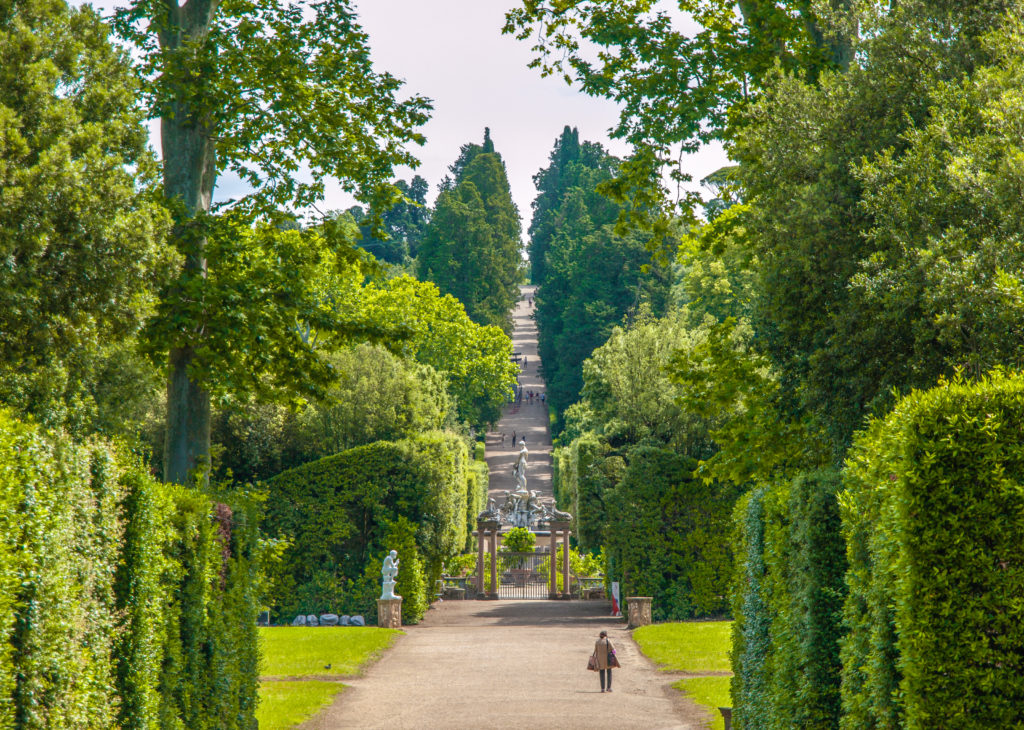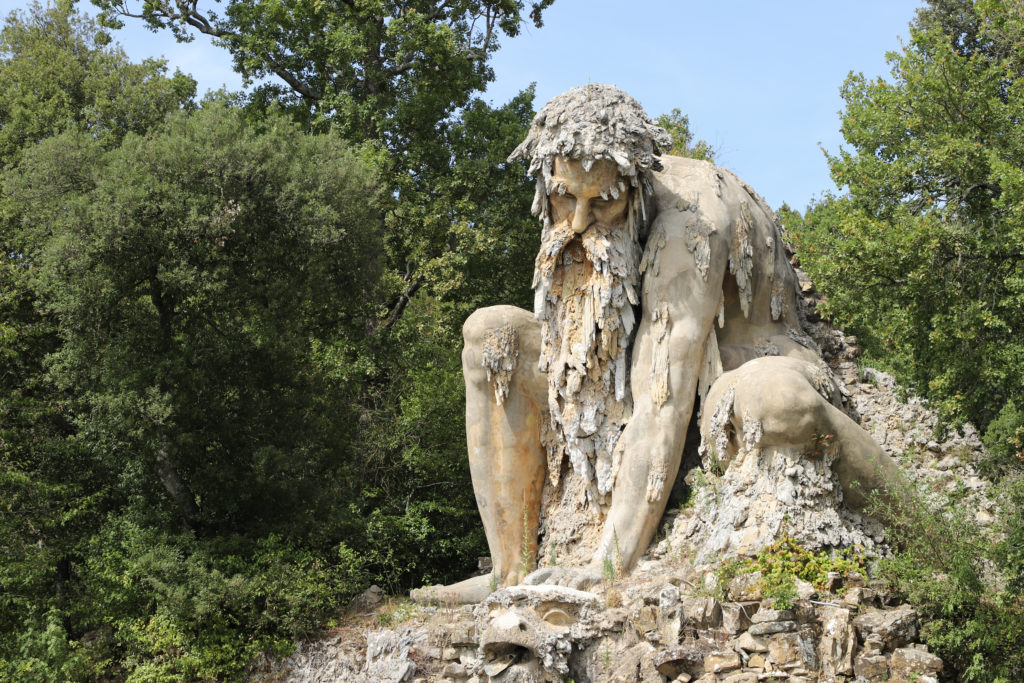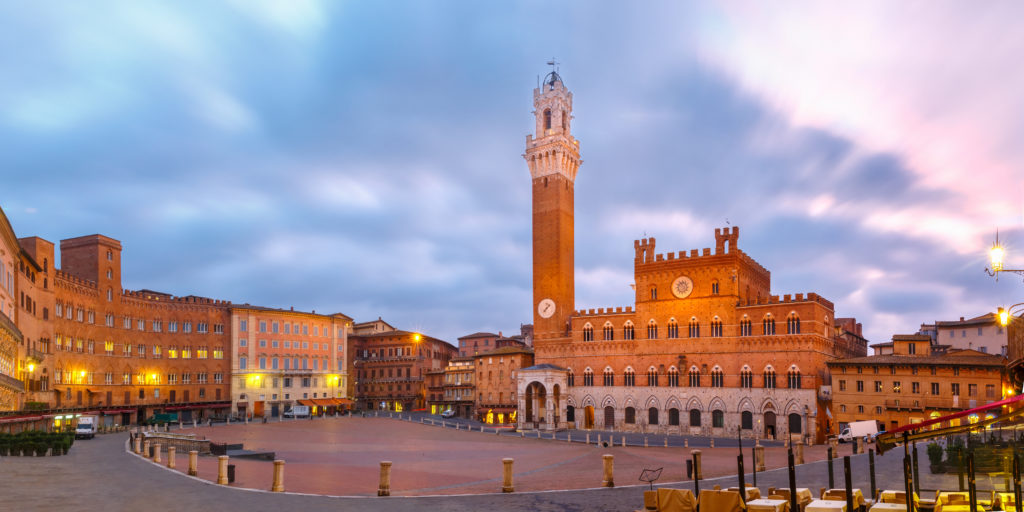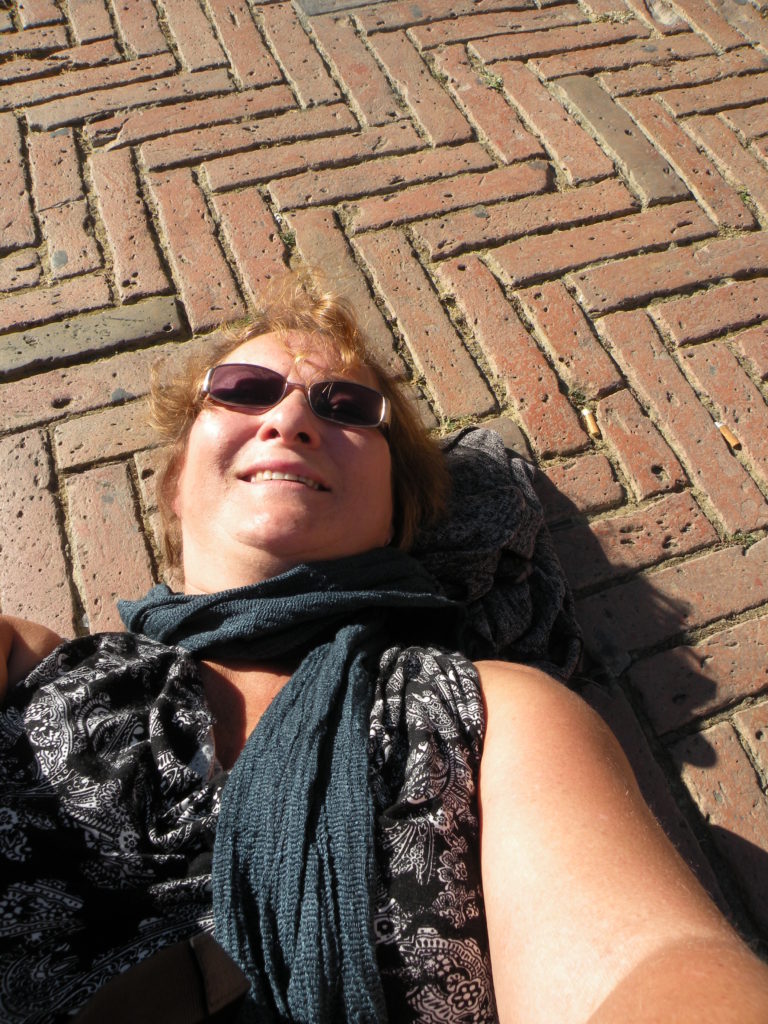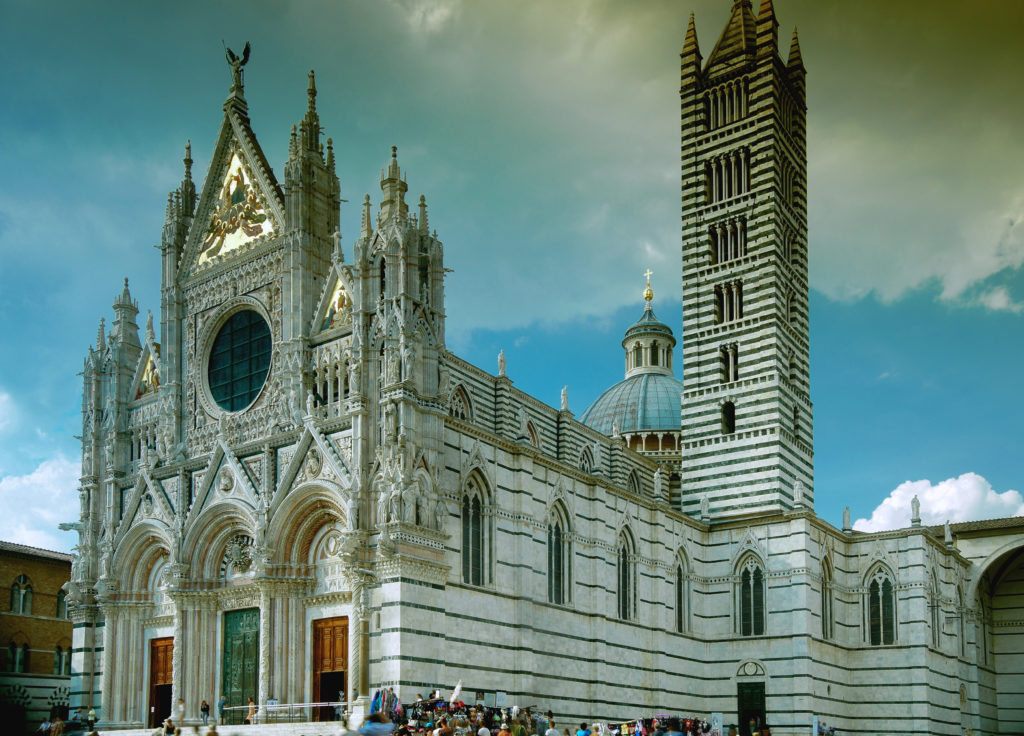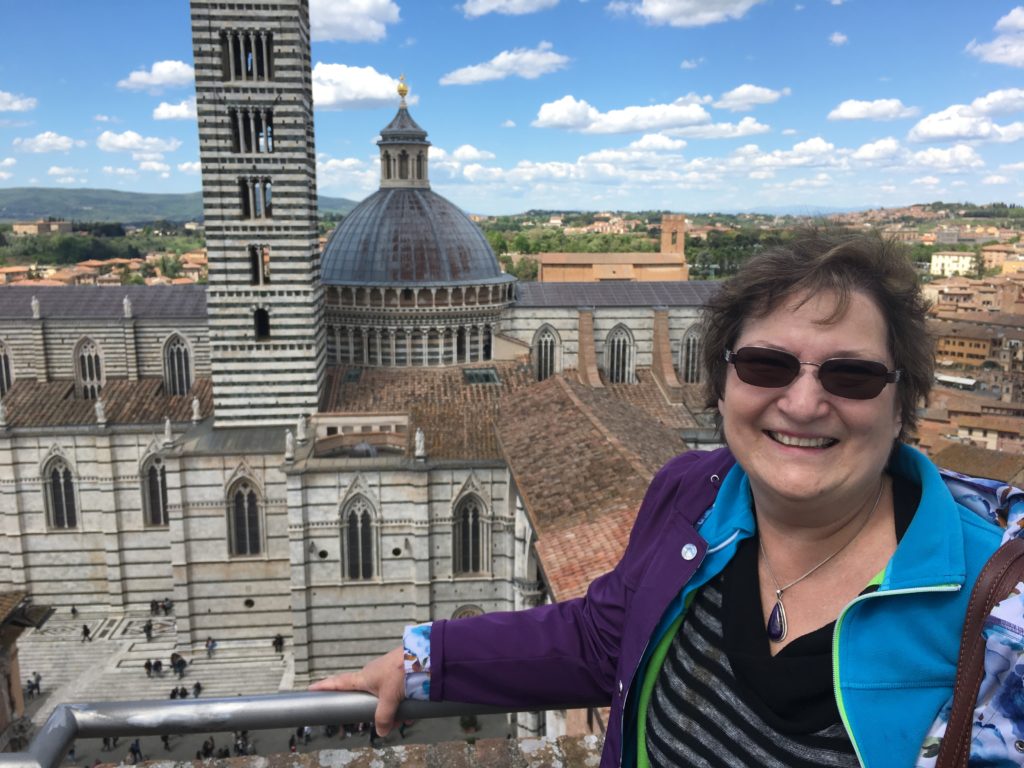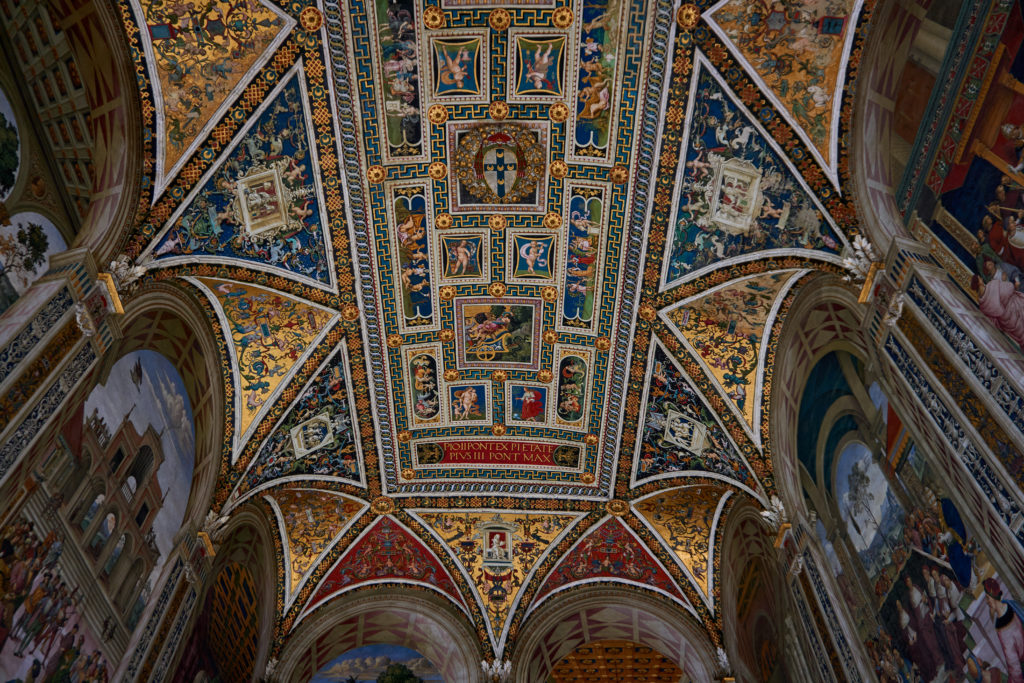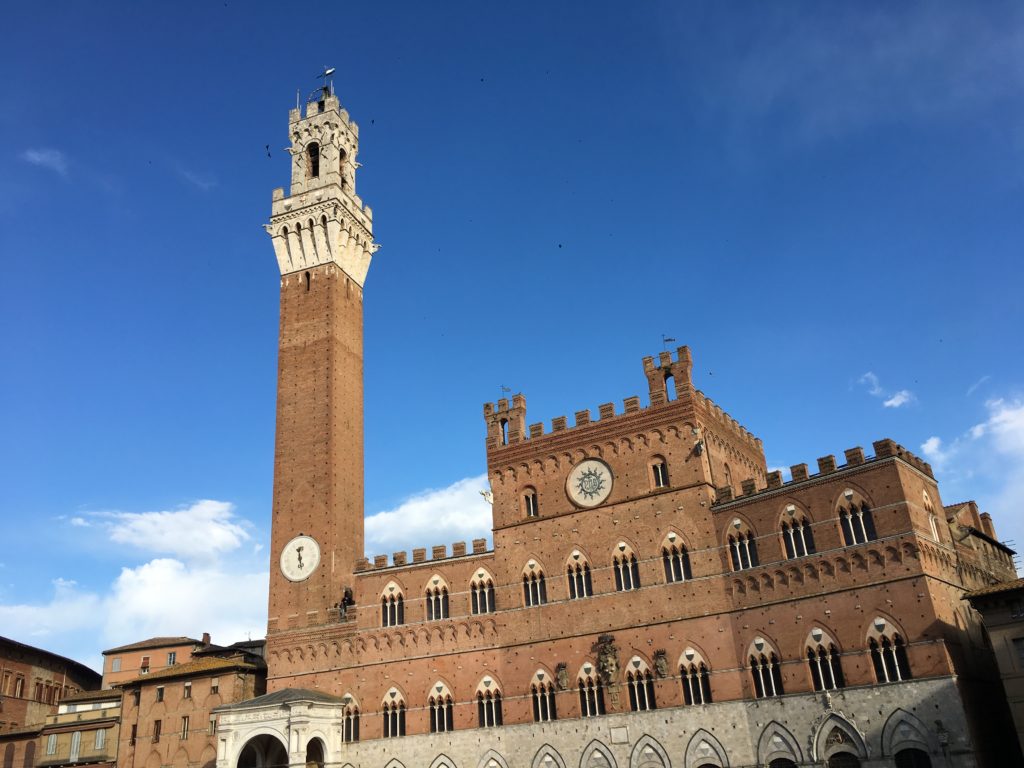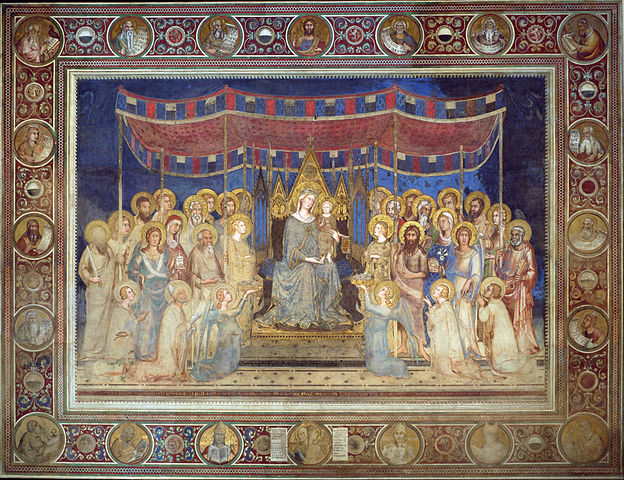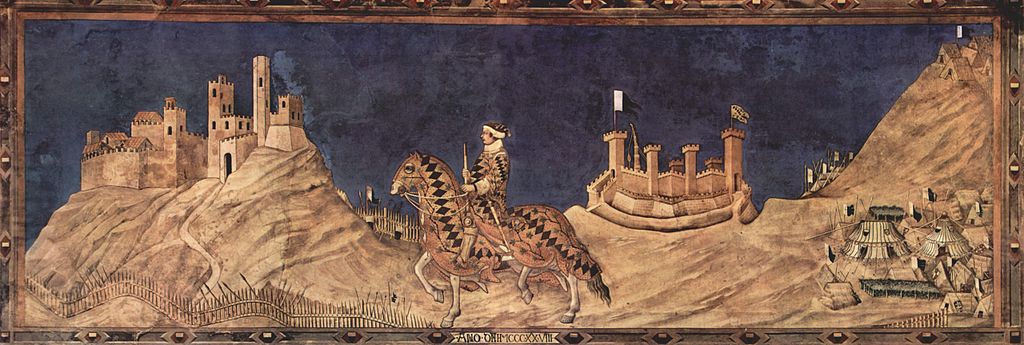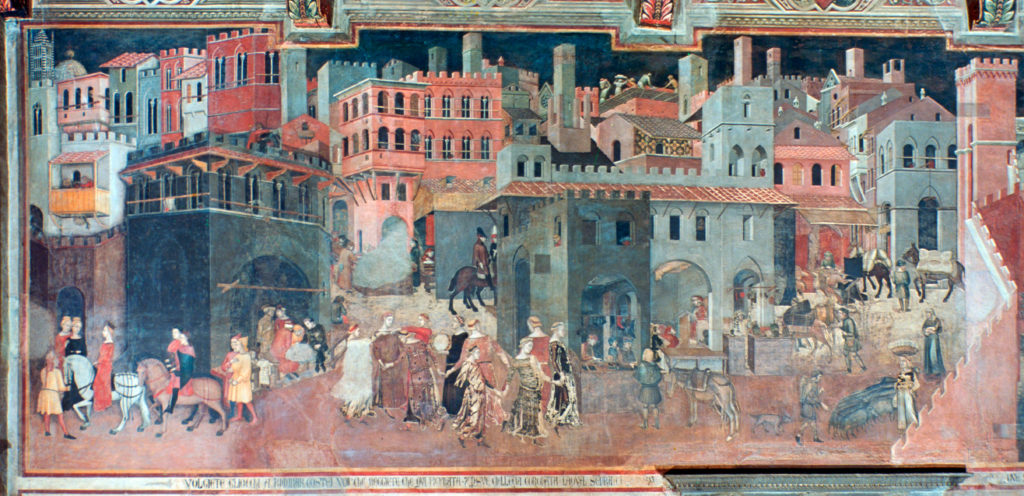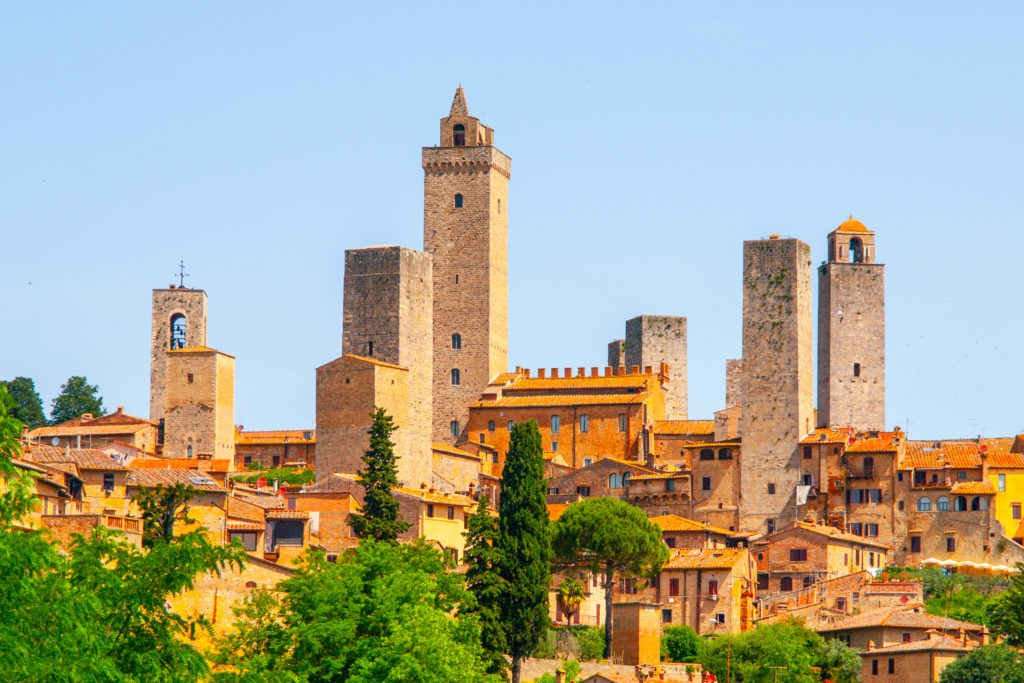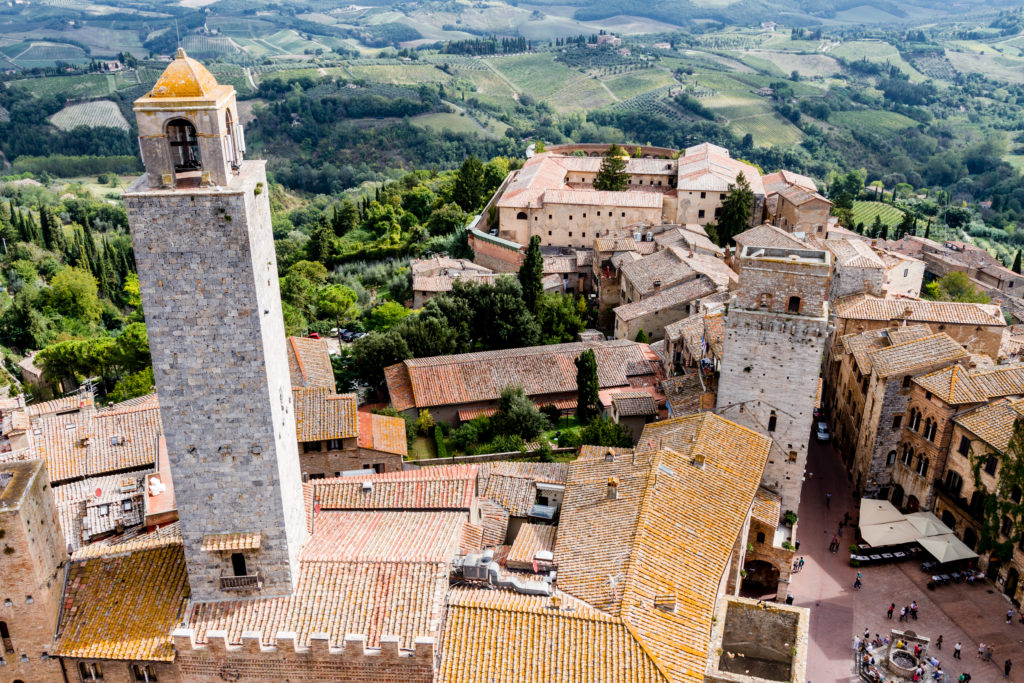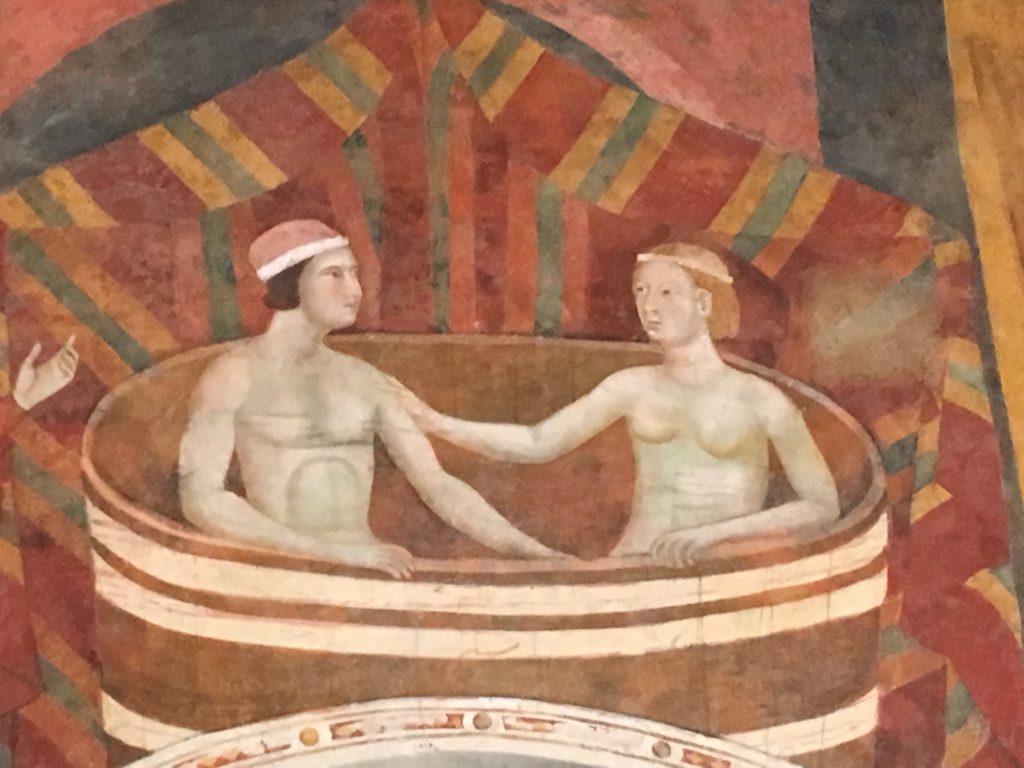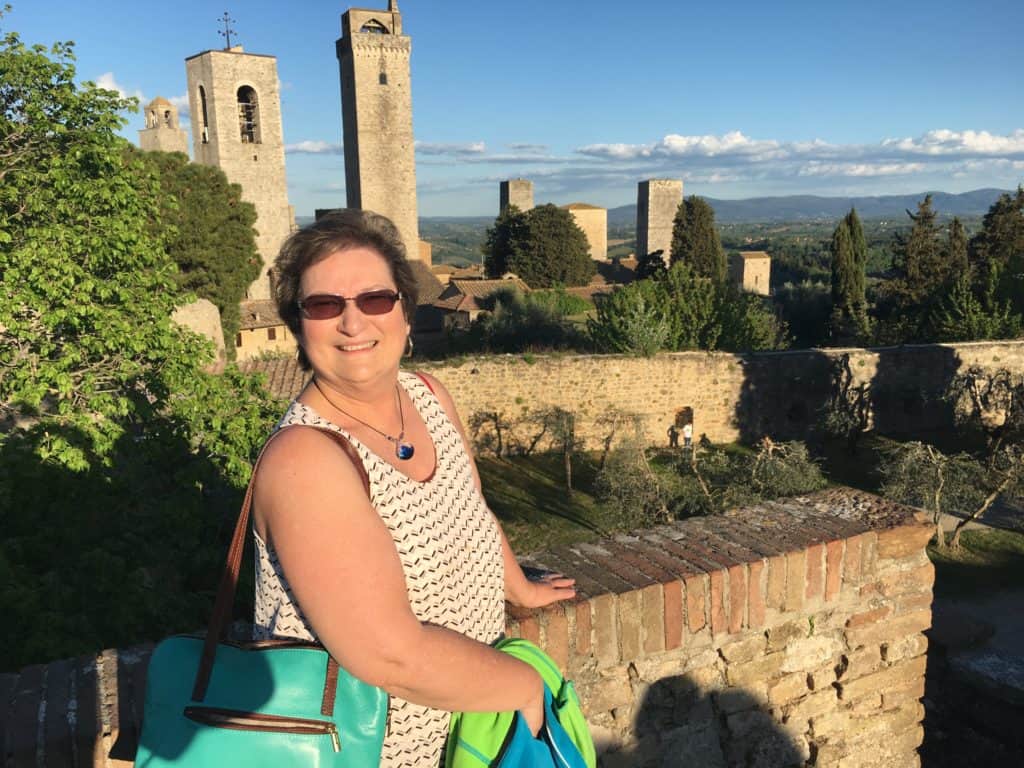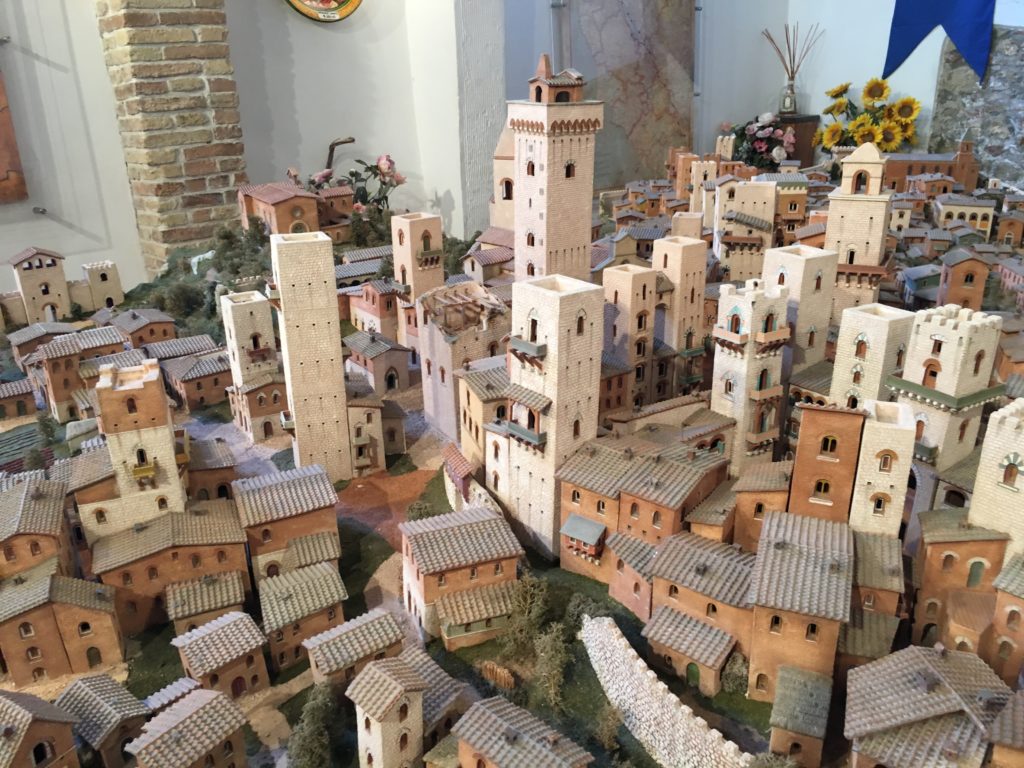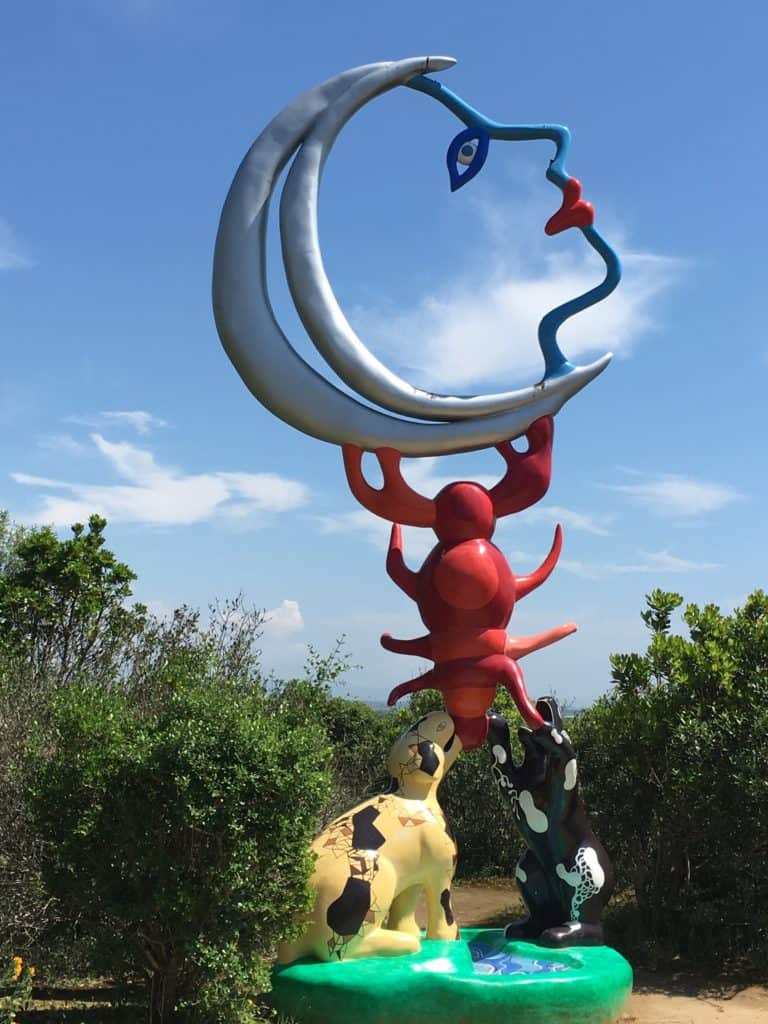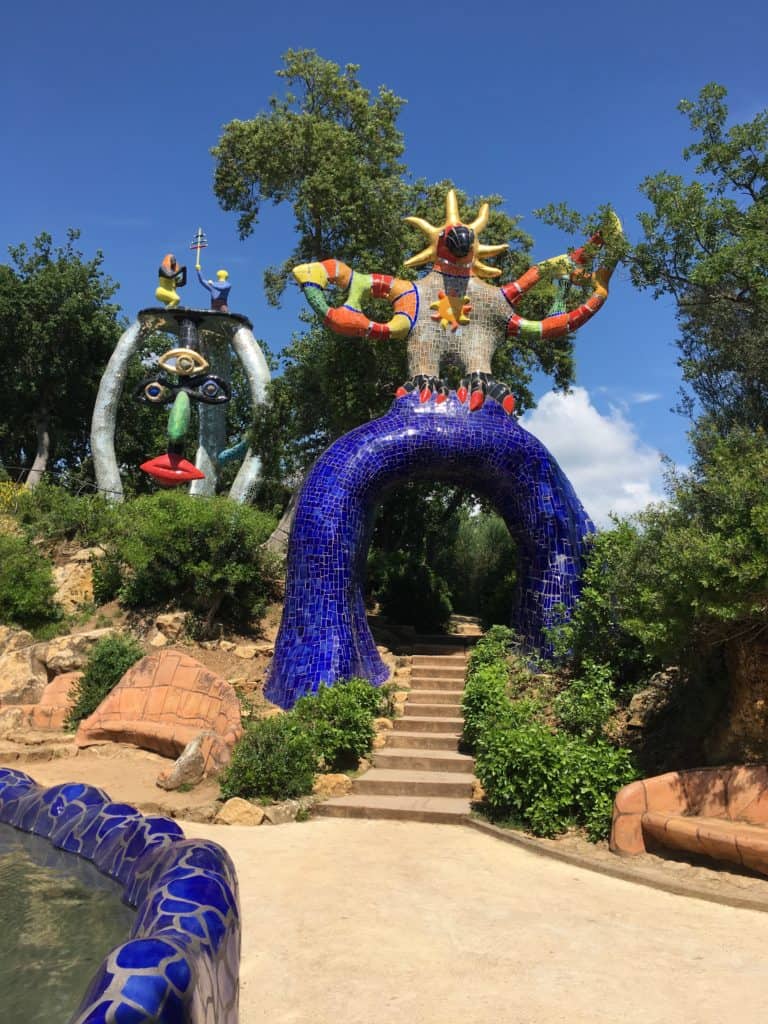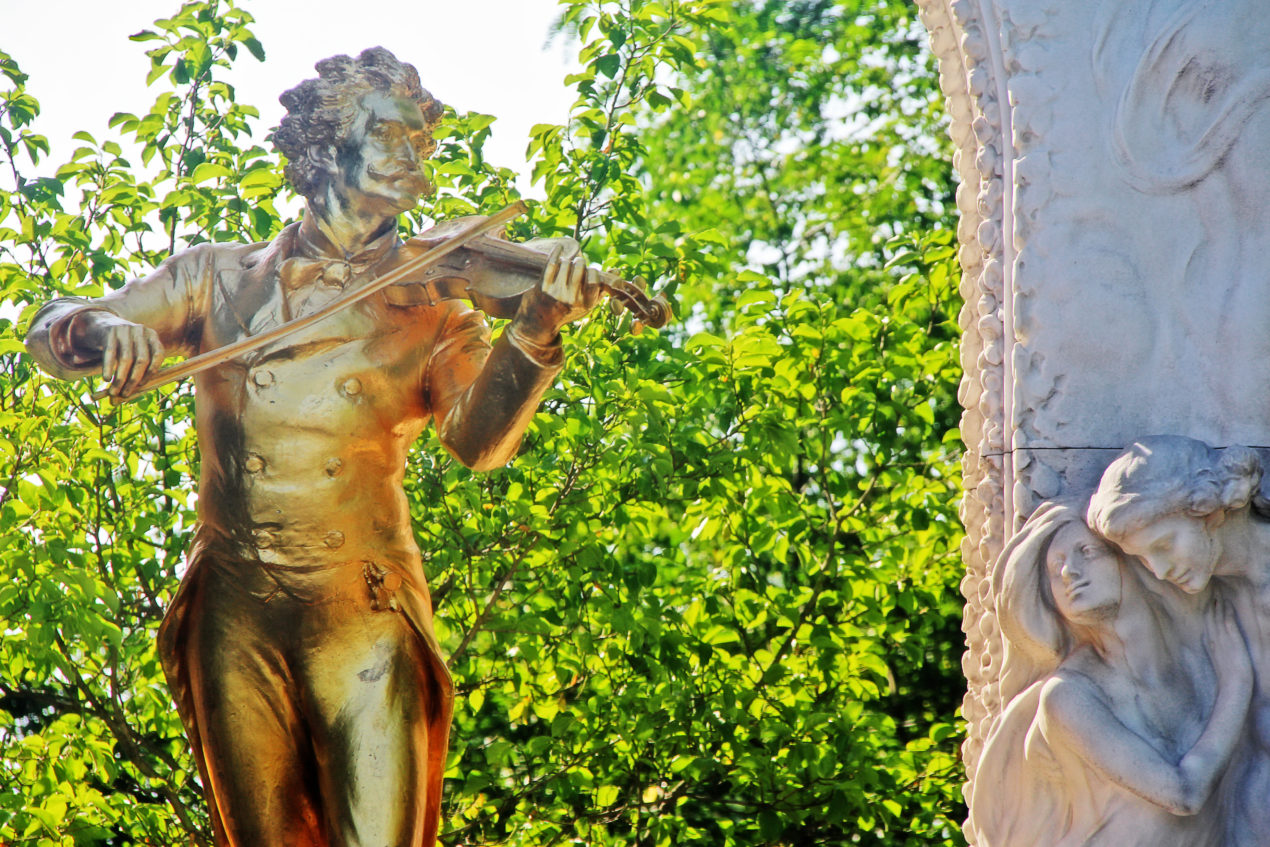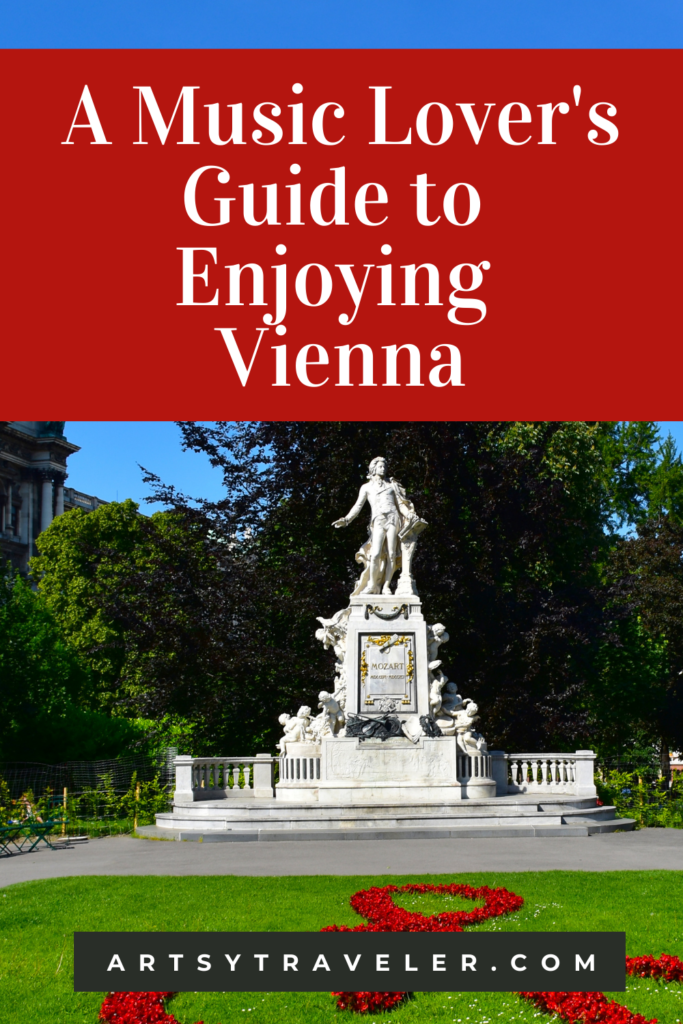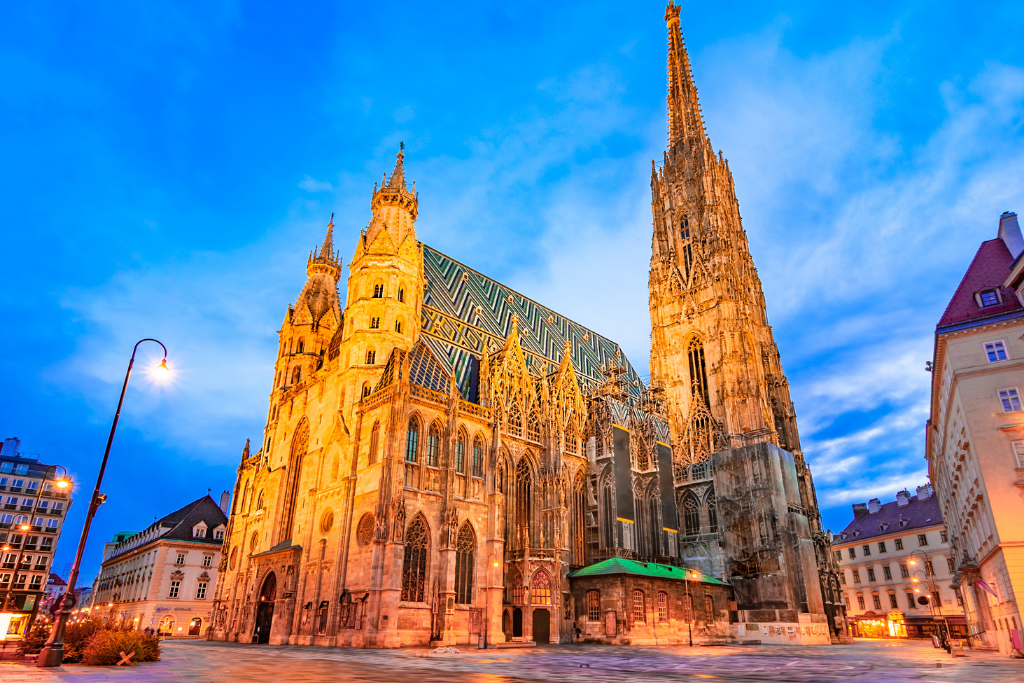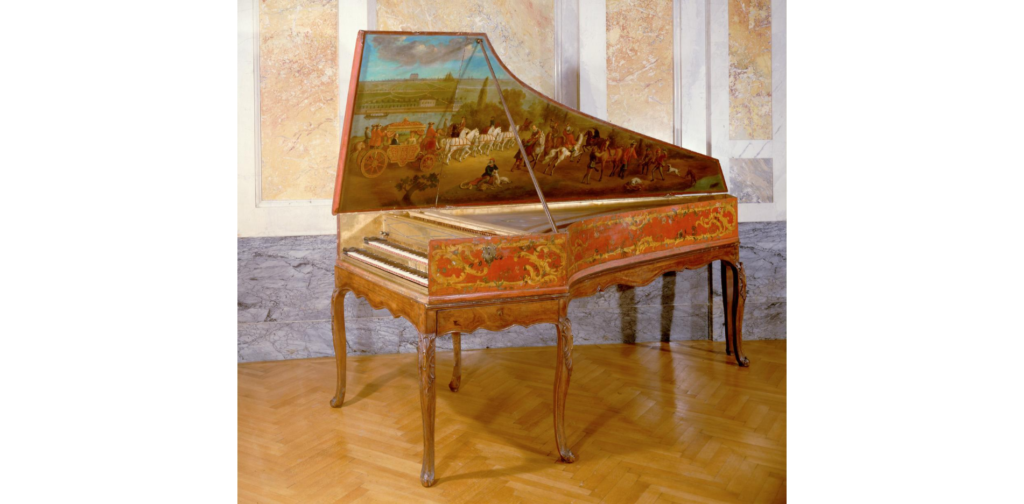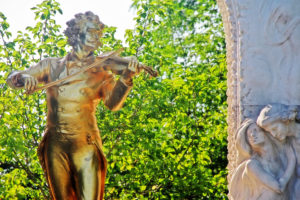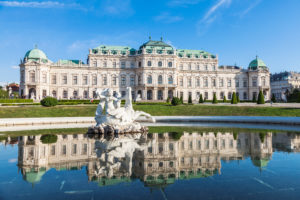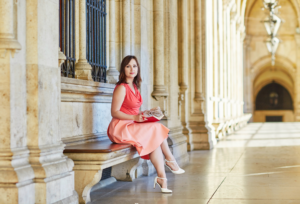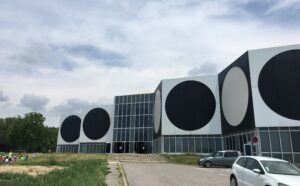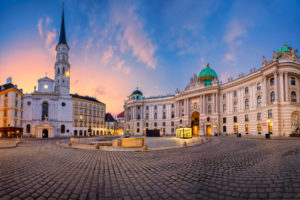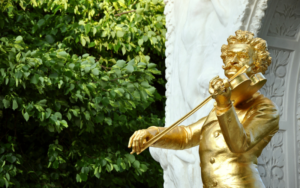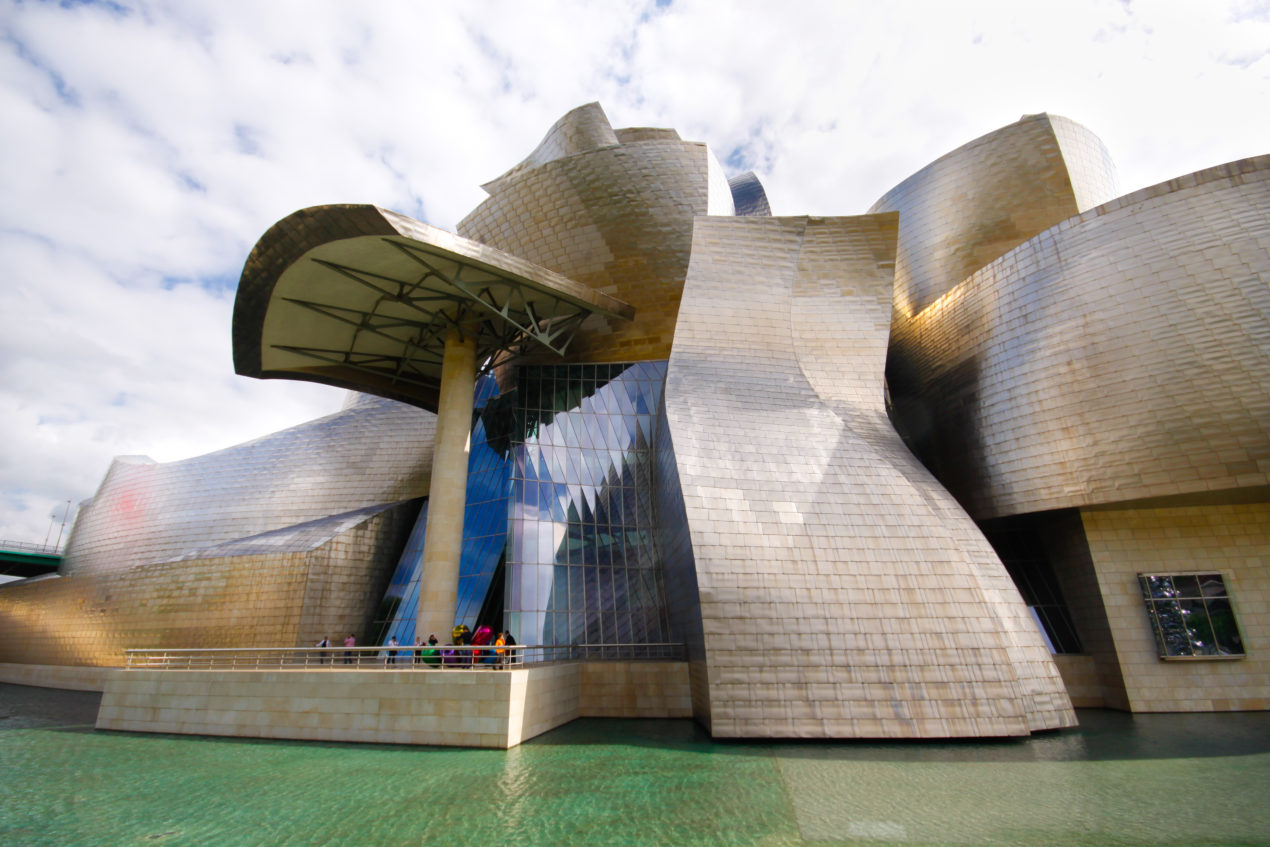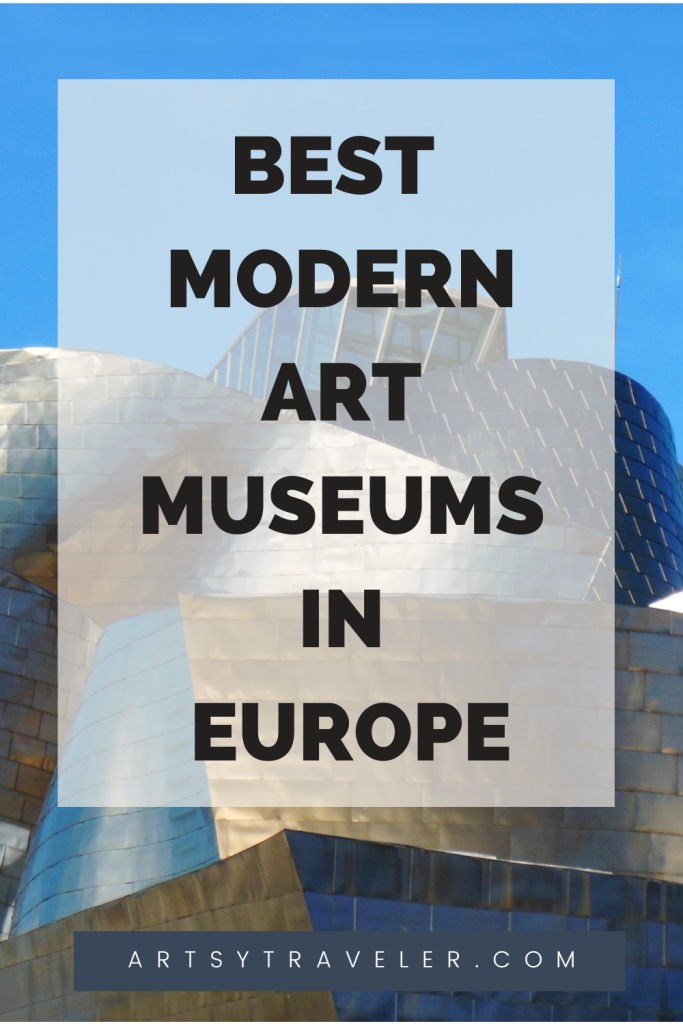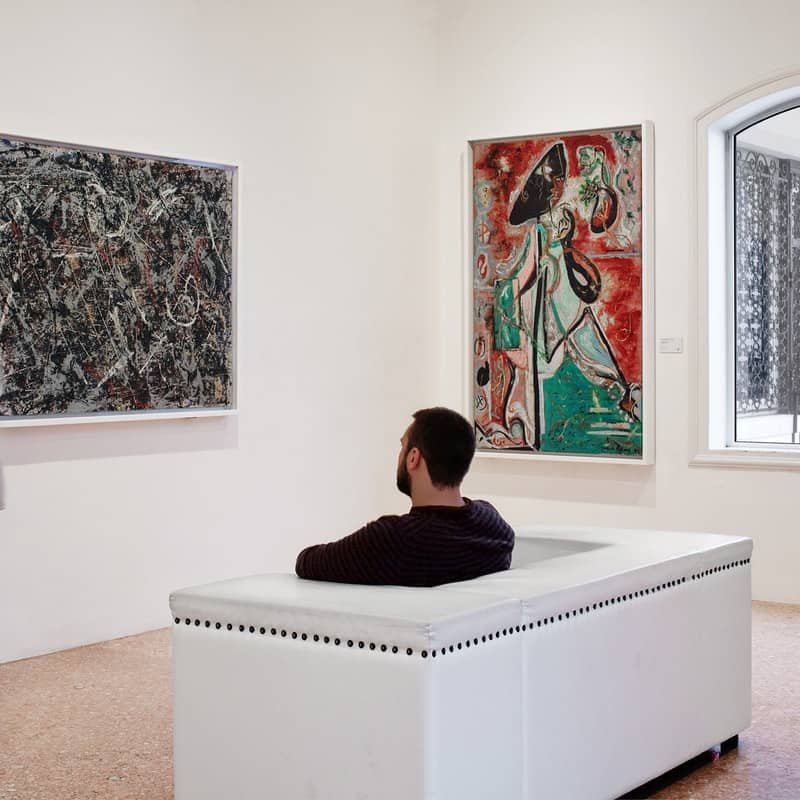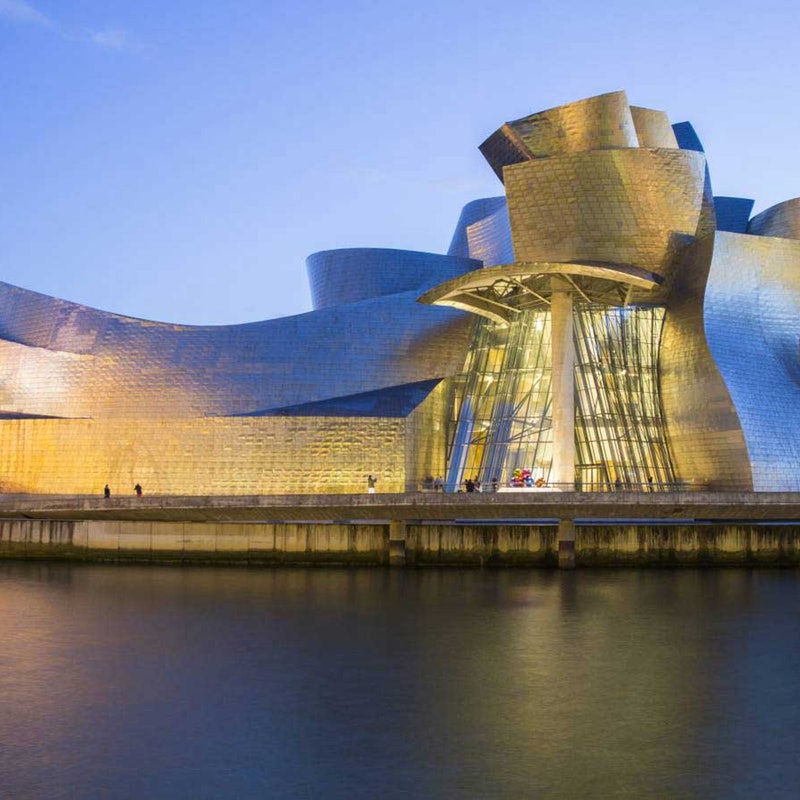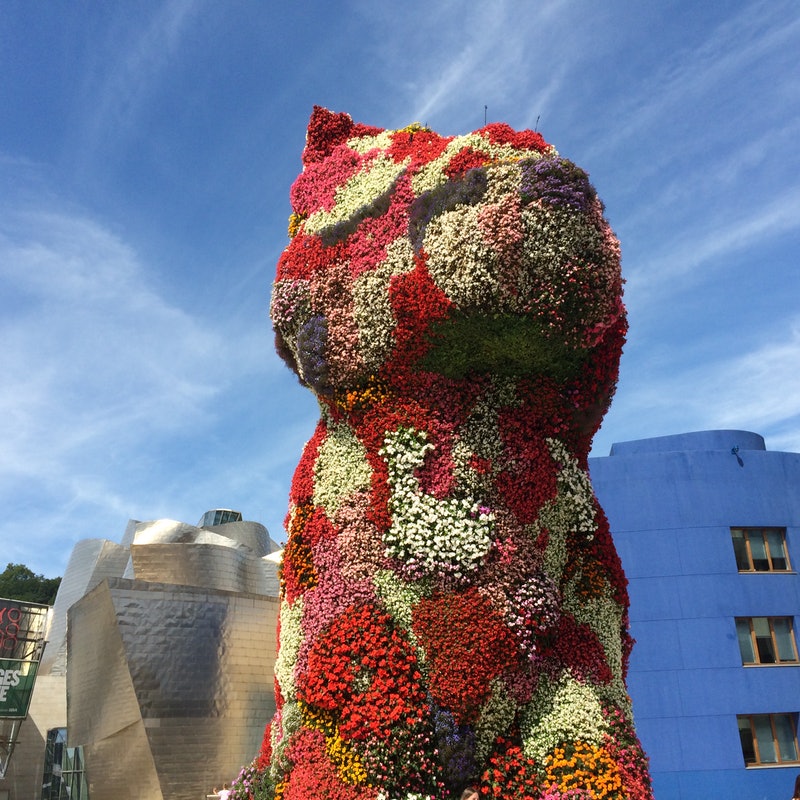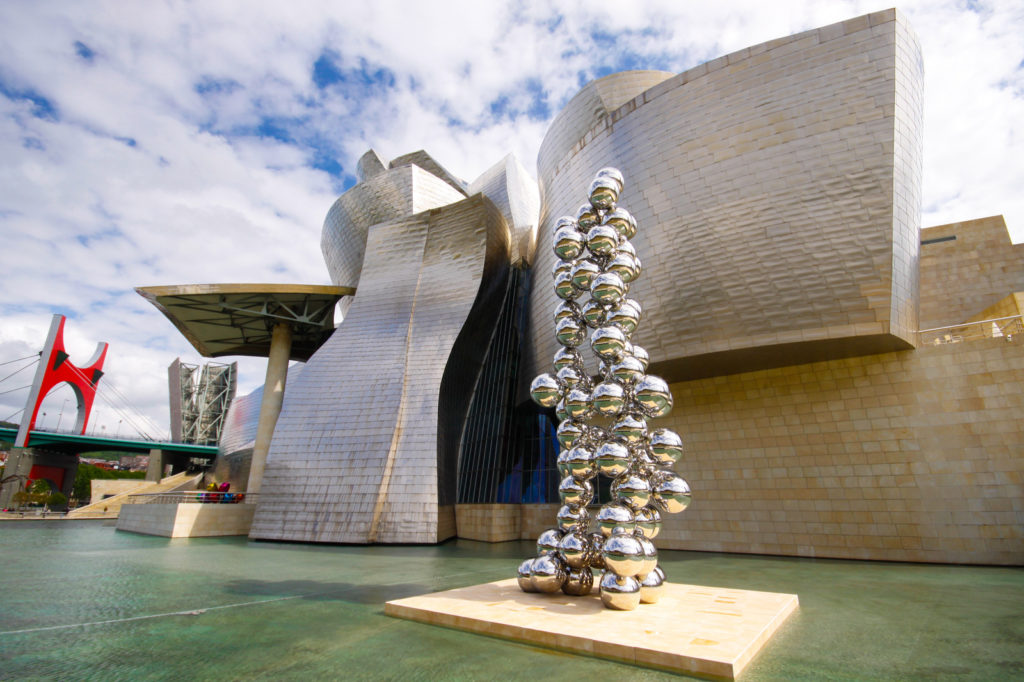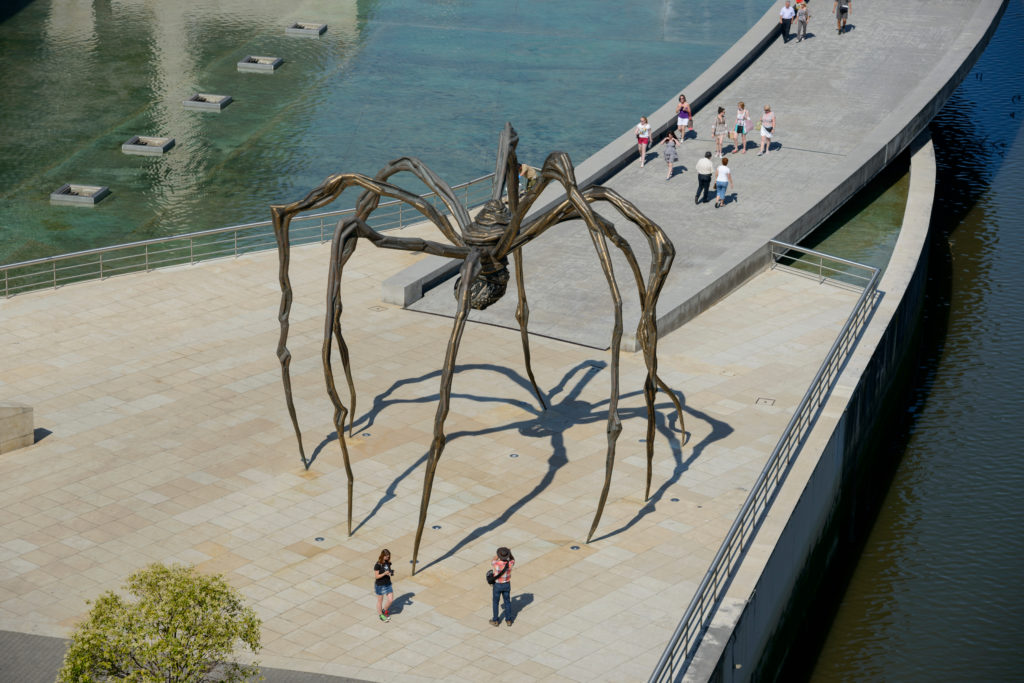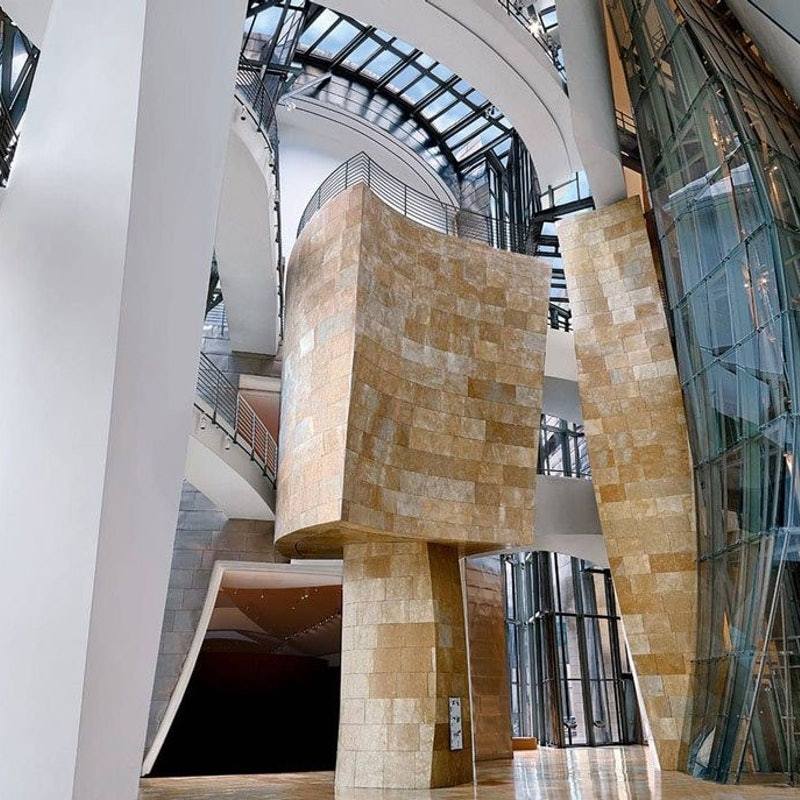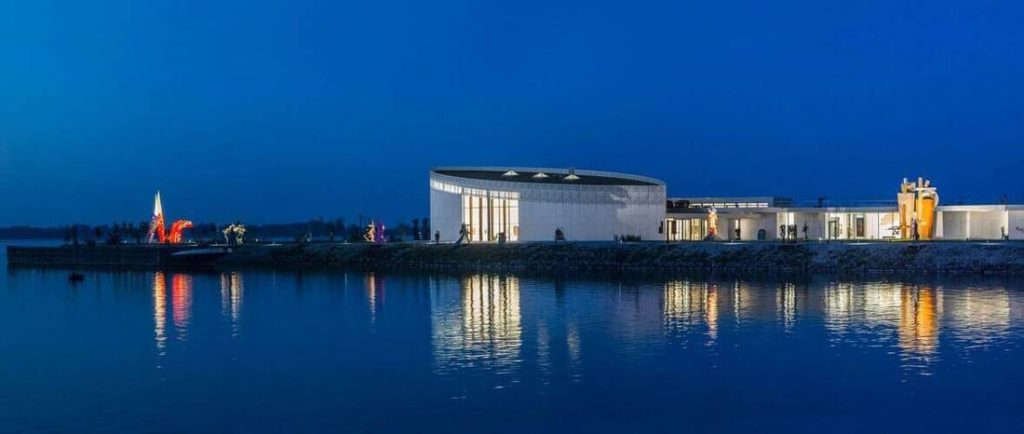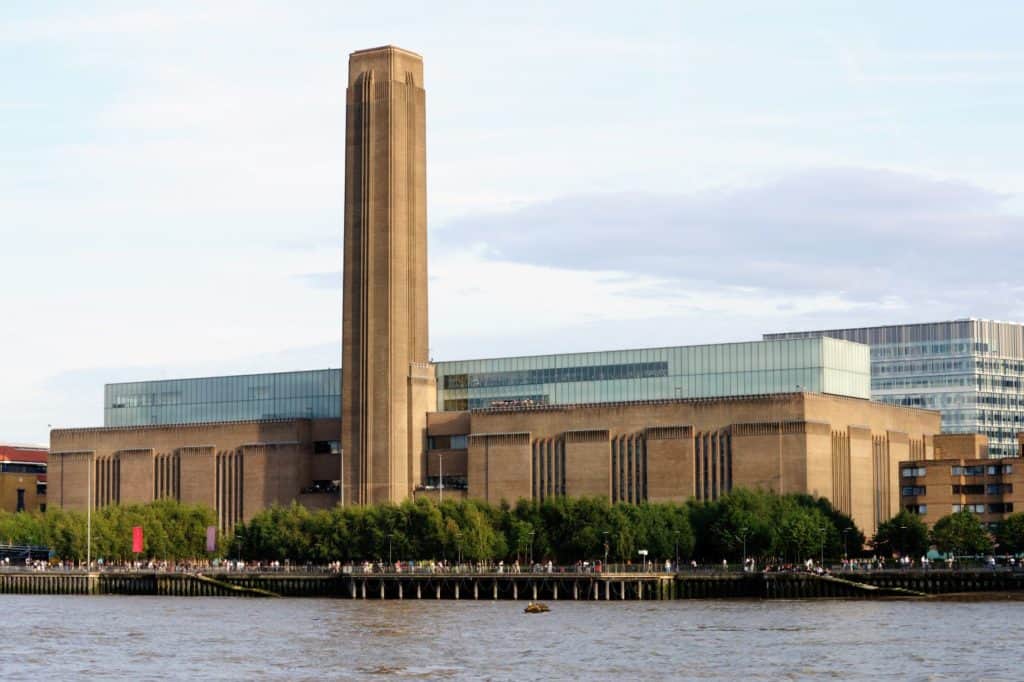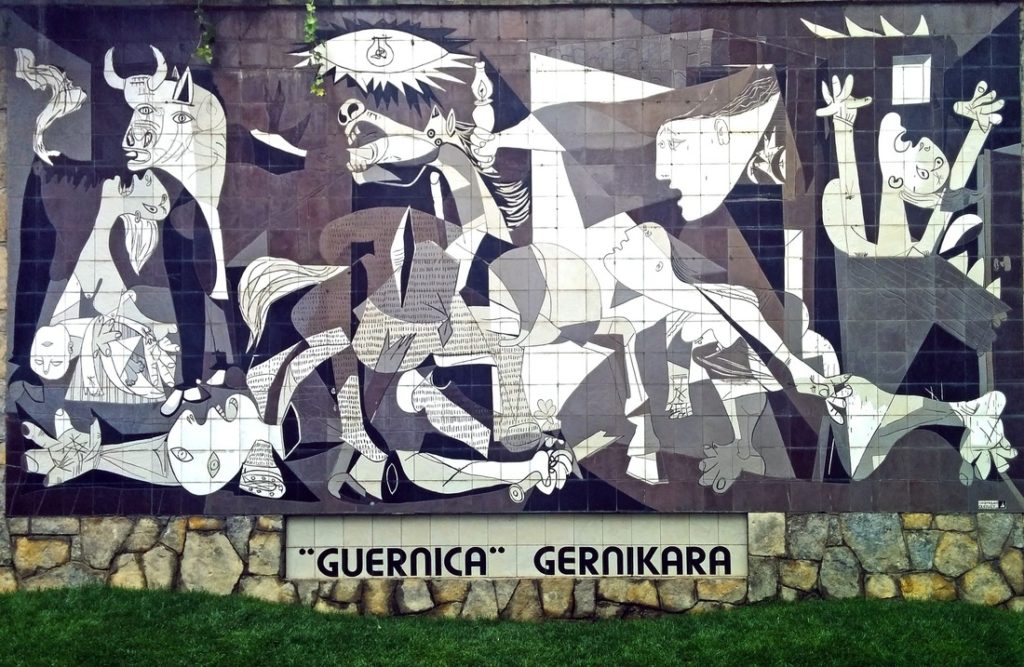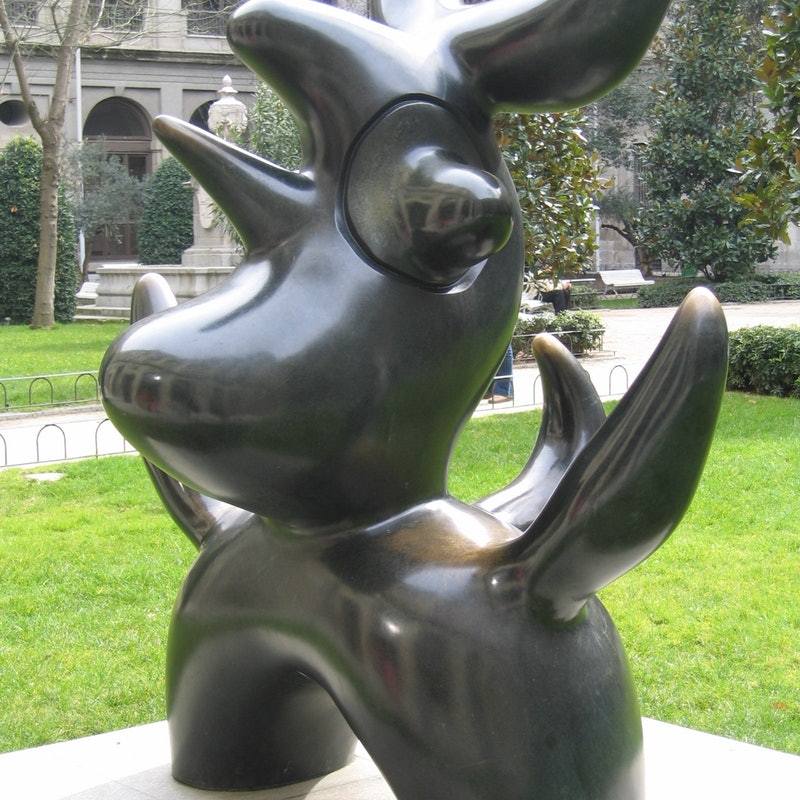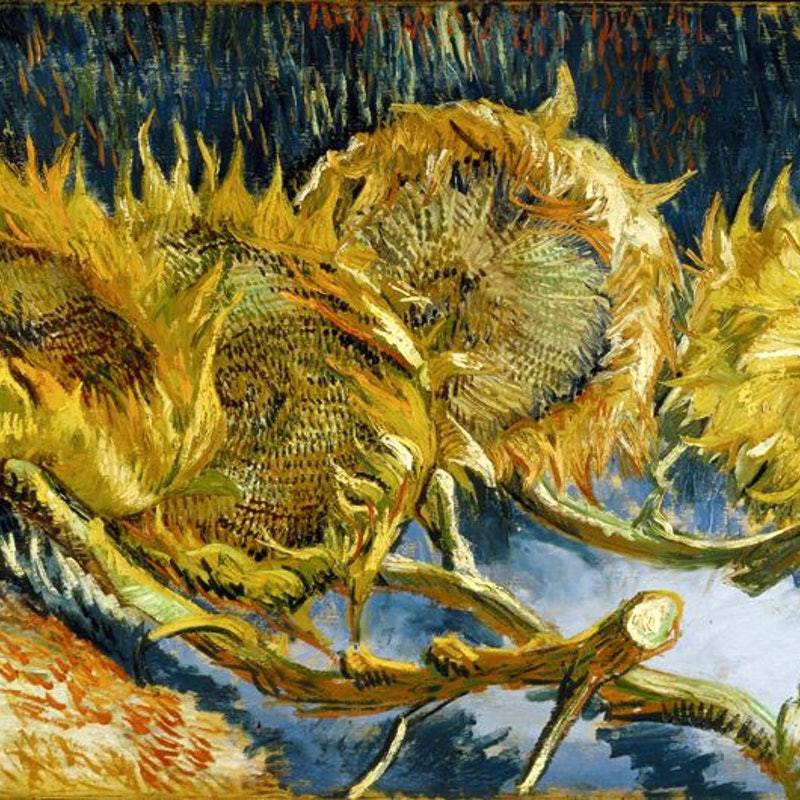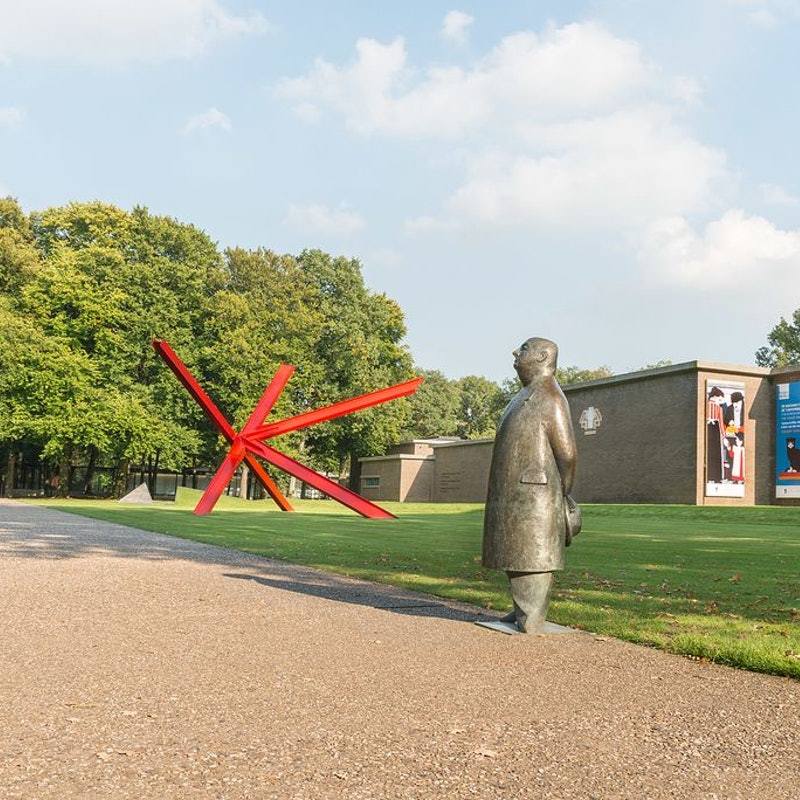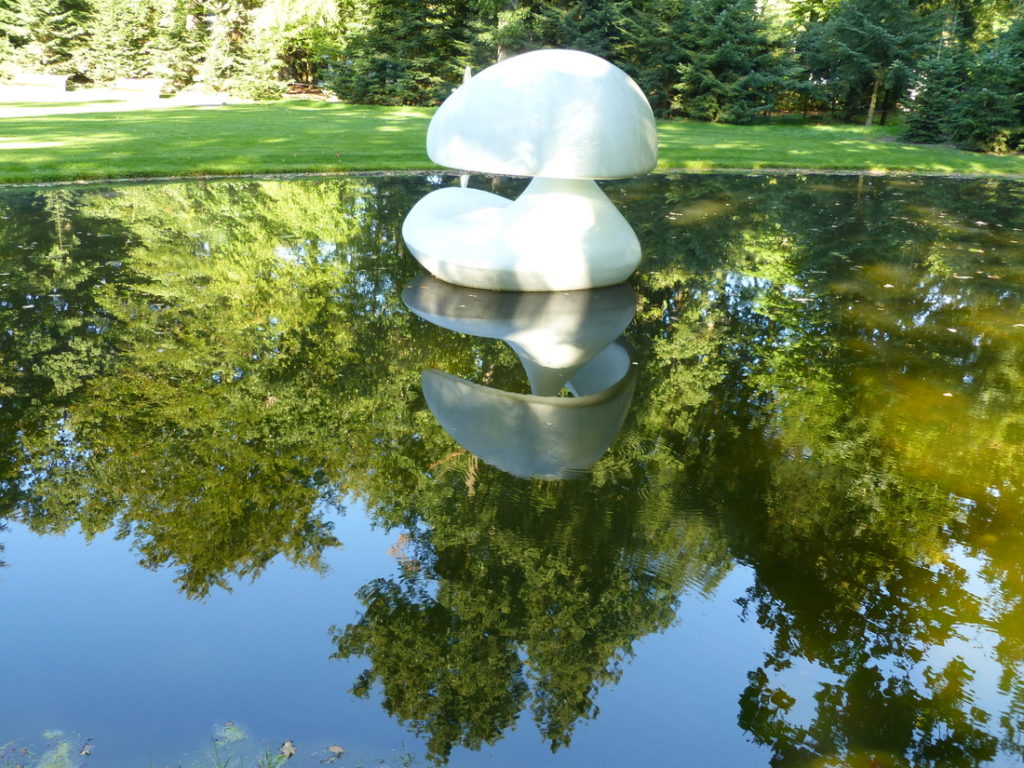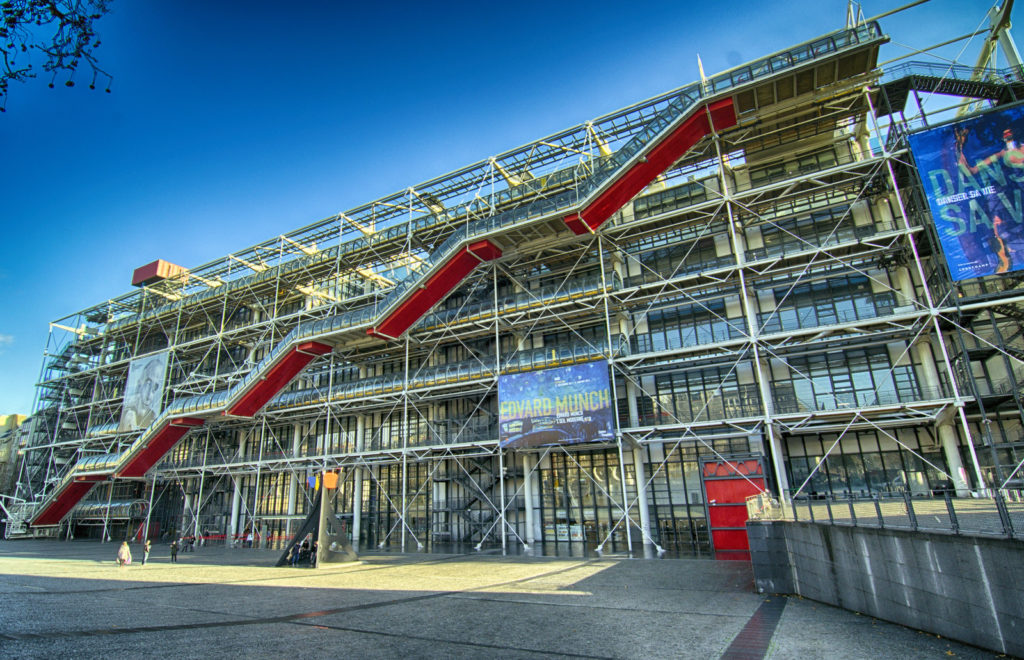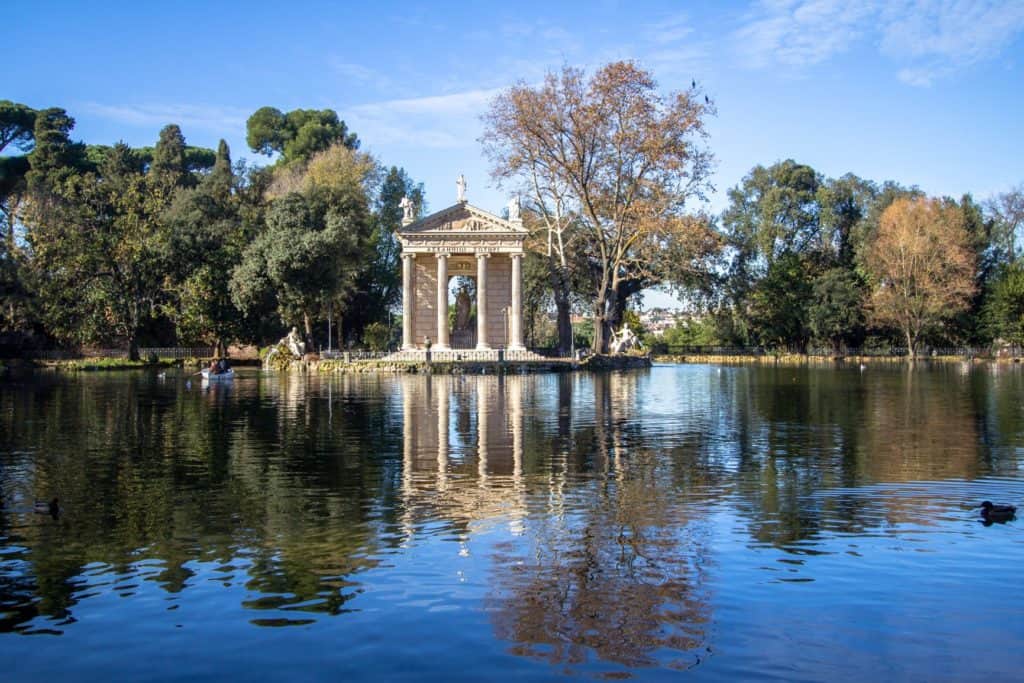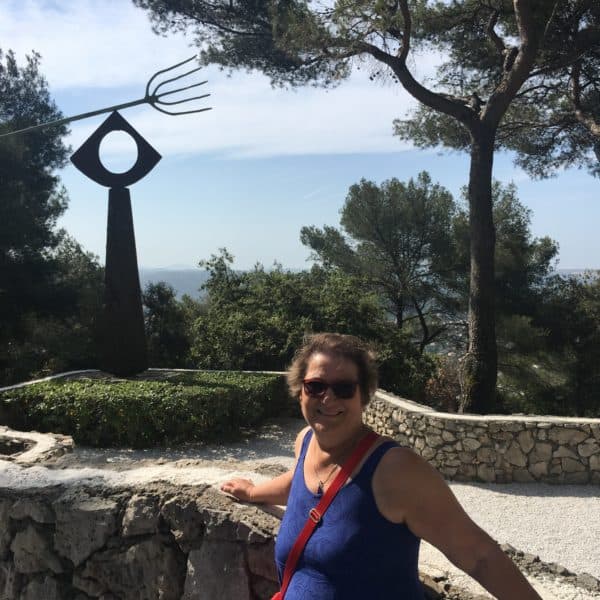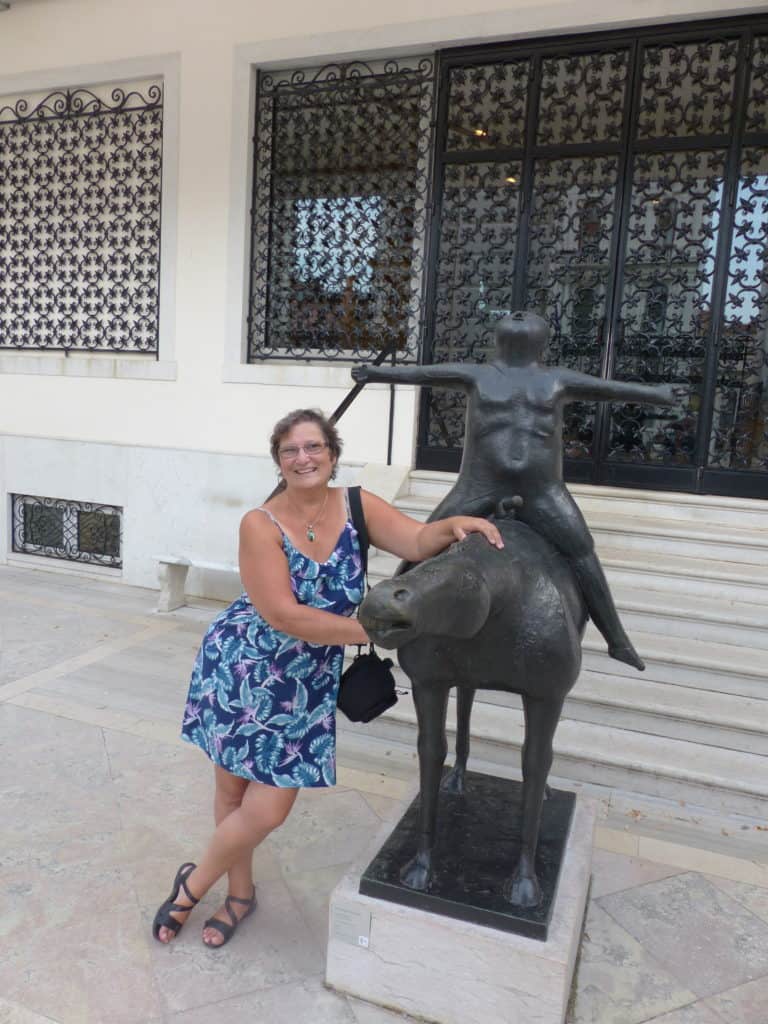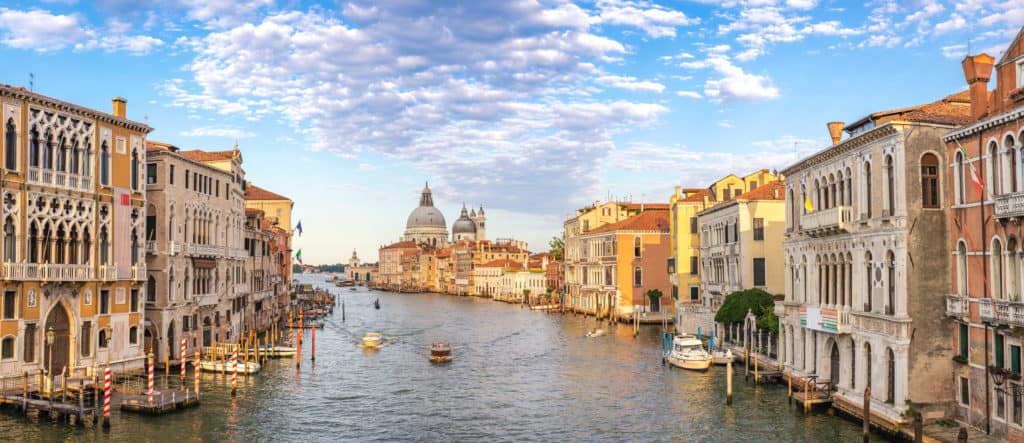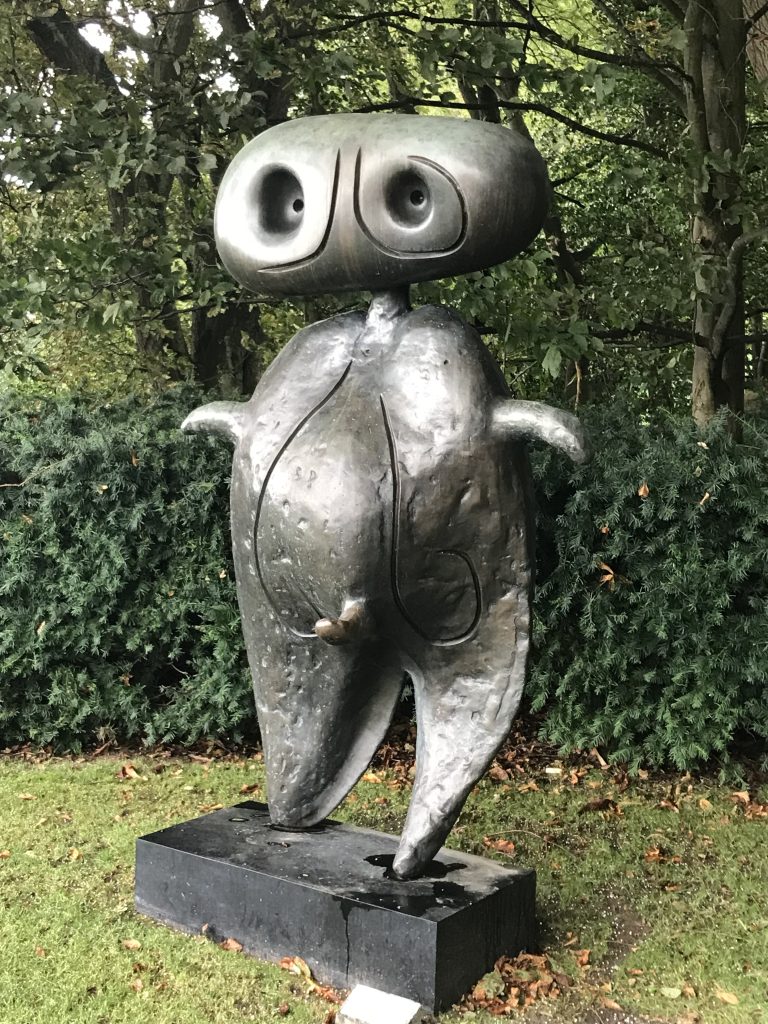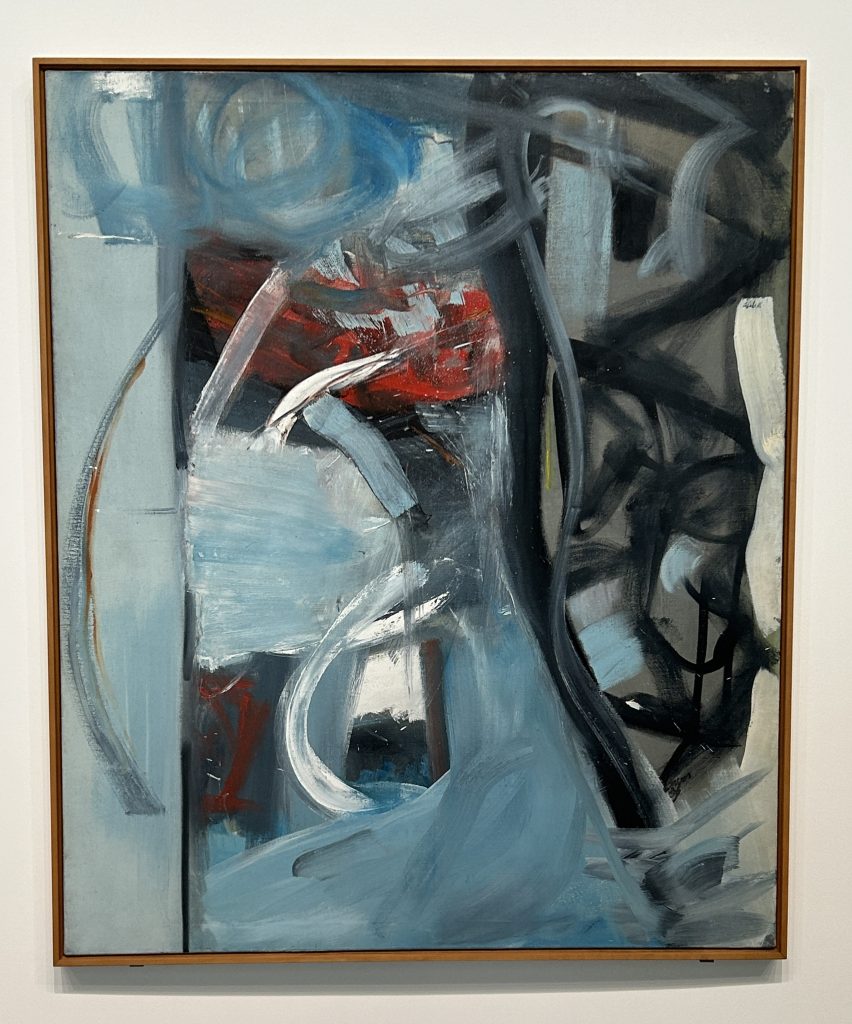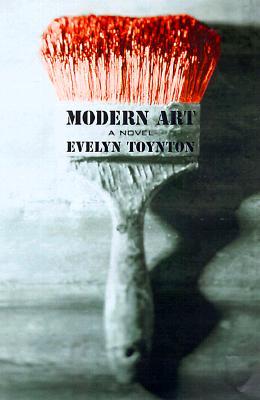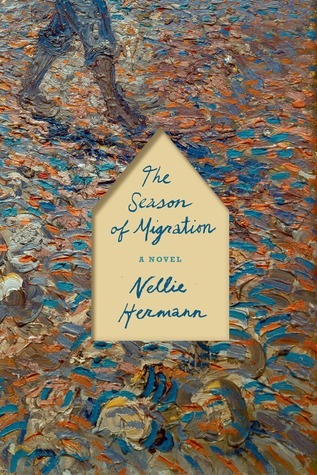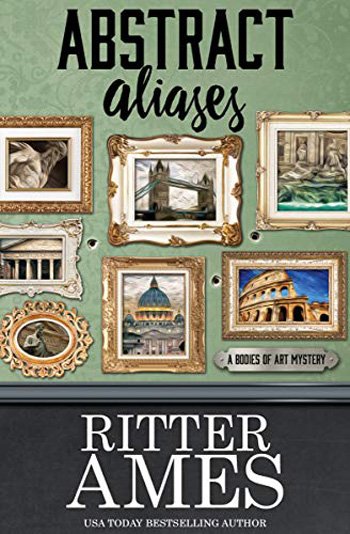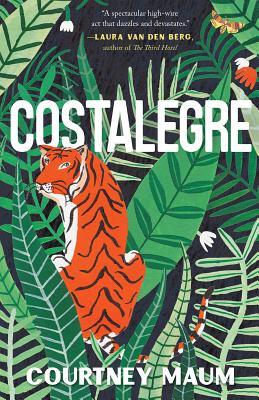17 Must-See Places to Visit in France You Should Know About
As the largest country in western Europe, France has more than its fair share of amazing places to visit.
I’ve been going to France since 1970 when, at the age of 14, I traveled around Europe with my mother on a budget of about $10 a day (you can read about that trip in My Story. This amount covered our hotels, city tours, meals, and probably even our Eurail passes. I don’t remember exactly because I wasn’t paying the bill.
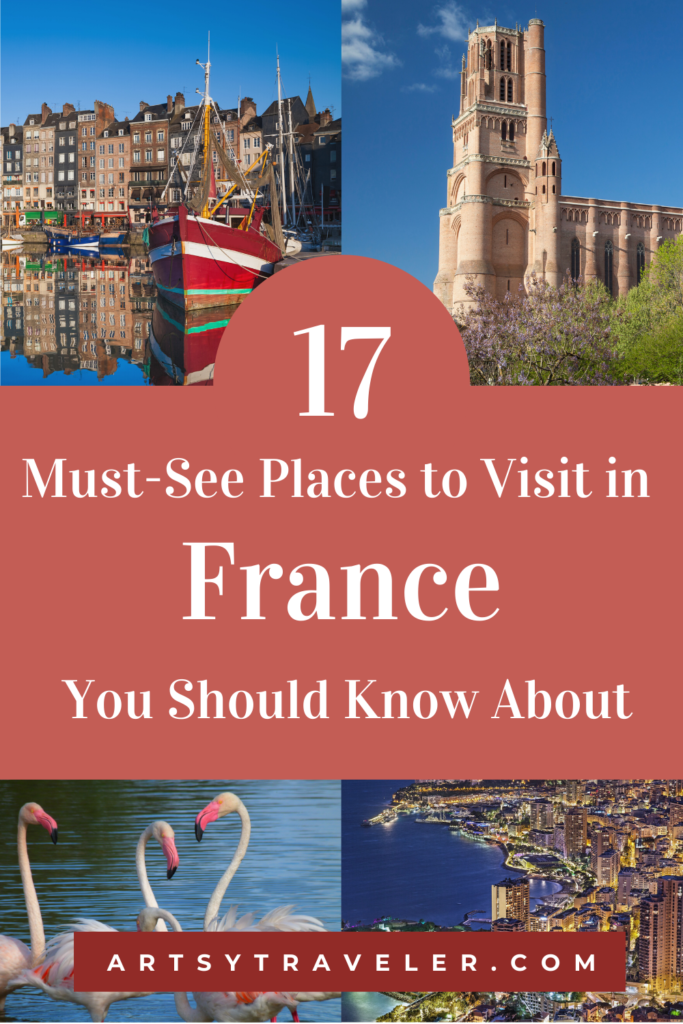
Since then, I’ve returned to France numerous times—both alone and with Gregg (usually with Gregg). In the past ten years, we’ve visited France together eight times, bringing my lifetime total to 17 visits.
So if you’re wondering why I’m listing 17 places to visit in France, now you know! I want to celebrate my 17 visits to France by listing my 17 quirky, fascinating, amazing favorites. Each holds special memories for me that I want to share with other artsy travelers.
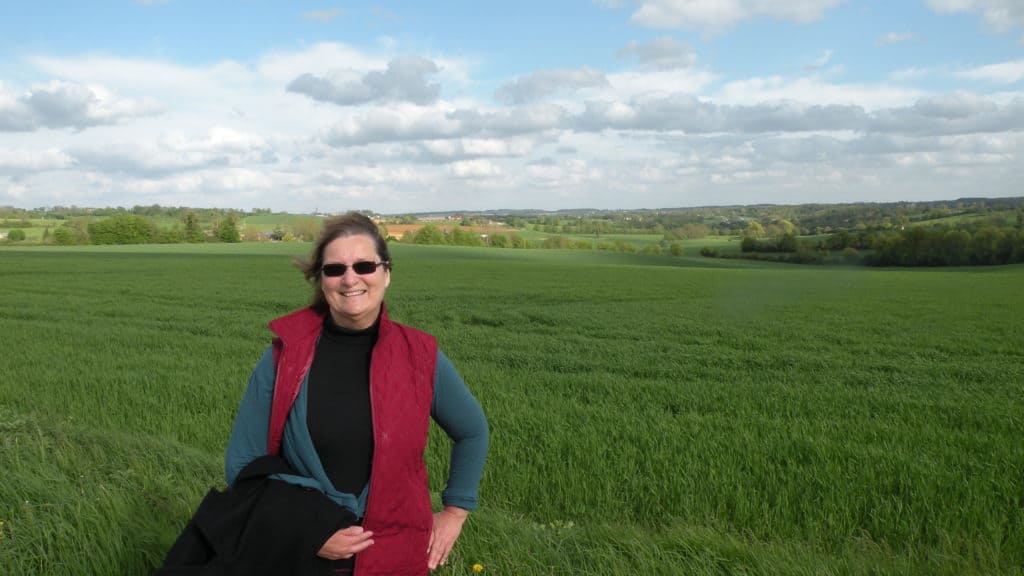
Map of France Showing My 17 Choices
The map below shows my 17 choices in the order in which I mention them, starting with Honfleur (#1) and ending with the Fontainebleau Forest (#17). If you have wheels, you could easily string together an around-France itinerary using these 17 places as stop-over points.
I also include a Google map showing the location of each individual place following its description in the post.
Making the List
You may not have heard of all of theses places to visit in France, but each is worth a visit.
For a place to make my list, it needed to have an artsy component, be beautiful (not hard to do in France), and be off the beaten path. As a result, you won’t find the big name places like Paris, Nice, and Lyon on the list (fabulous though they are).
Ready to check out my 17 favorite places to visit in France? Here they are, starting with Honfleur on the Normandy coast northwest of Paris and going in a more or less counter-clockwise direction to take in Brittany, the Loire Valley, the Dordogne, the south of France, the east of France and ending at the Fontainebleau Forest just south of Paris.
#1: Honfleur, Normandy
A few years ago, Gregg and I were fortunate to be artists-in-residence at a gallery located in the Perche region of central Normandy. For two months when we weren’t painting (Gregg) and writing (me), we explored this beautiful and untrammeled area. Although close to Paris, peaceful rural Normandy feels like another country.
On one trip, we went north to the gorgeous little town of Honfleur on the Normandy coast. To our delight, Honfleur was packed with artsy sites.
What is Special About Honfleur as Place to Visit in France?
Art Galleries in Honfleur
First of all, if you’re looking to purchase art, Honfleur is renowned for its galleries. You can spend many happy hours browsing the offerings in the galleries lining the streets leading to the harbor.
From an architectural perspective, Honfleur has much to offer. The Church of St. Catherine on the town square was built entirely of wood in the late 15th century by shipwrights. Wander through the church to view its many decorative details.

The Vieux-Bassin
You’ll eventually end up at the harbor (the vieux-bassin), surely one of the most stunning sights in Normandy. The distinctive high and narrow timber-frame houses are reflected in the still water of the boat-filled harbor.
We spent quite a bit of time walking along the harborfront enjoying the gorgeous views and stopping for a dinner of moules et frites (mussels and fries) along with local wine.
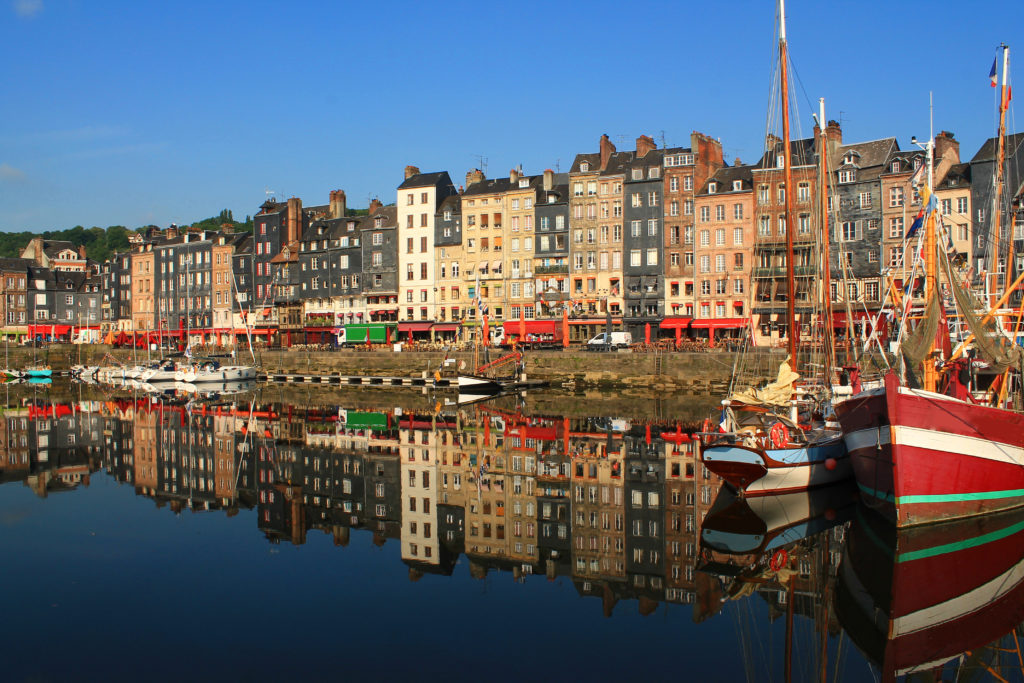
Museums in Honfleur
Two museums in Honfleur are particularly attractive to the Artsy Museum.
First up is the Musée Eugène Boudin, named after the painter Boudin who was born in Honfleur. The museum exhibits an impressive collection of Boudin’s paintings along with works by other artists who have visited or are closely associated with Honfleur, including some big names: Courbet, Dufy, and Monet (you’ve probably heard of him!).
As a side note, Honfleur is not far from Étretat which we also visited. Courbet, Boudin and Monet each painted these cliffs.

But our favorite of the two museums we visited in Honfleur is the entrancingly eccentric Maisons Satie. Housed in the birthplace of the composer and darling of the Dadaists, Erik Satie (1866-1925), the museum takes you on an interactive tour of Satie’s music.
Armed with an audio guide, you prowl through dark rooms and activate various musical themes from Satie’s work. It’s a playhouse for music-loving grownups that puts the q in quirky.
If you love Satie’s music (Gymnopedies and Gnossienne are his most famous works), then don’t miss this wacky, wonderful museum.
Getting to Honfleur

Honfleur is about a two-hour drive northwest of Paris. The Normandy coast from Honfleur in the northeast to Mont St. Michel in the southwest on the border with Brittany is worth a good long stay.
In addition to Étretat, two other highlights of this fascinating section of coastline are the D-Day beaches and Bayeux. Both places witnessed invasions, a millennium apart.
D-Day Beaches in Normandy Near Honfleur
At the D-Day beaches, I was struck by the spectacular beauty of this stretch of coastline. That it was the scene of so much death and destruction in 1944 is sobering. We visited the marvelous museum and memorial at Juno Beach where the Canadians landed. The Caen Memorial Museum near Caen south of the beaches is also worth a visit.
You can take a guided tour of the area from Paris.
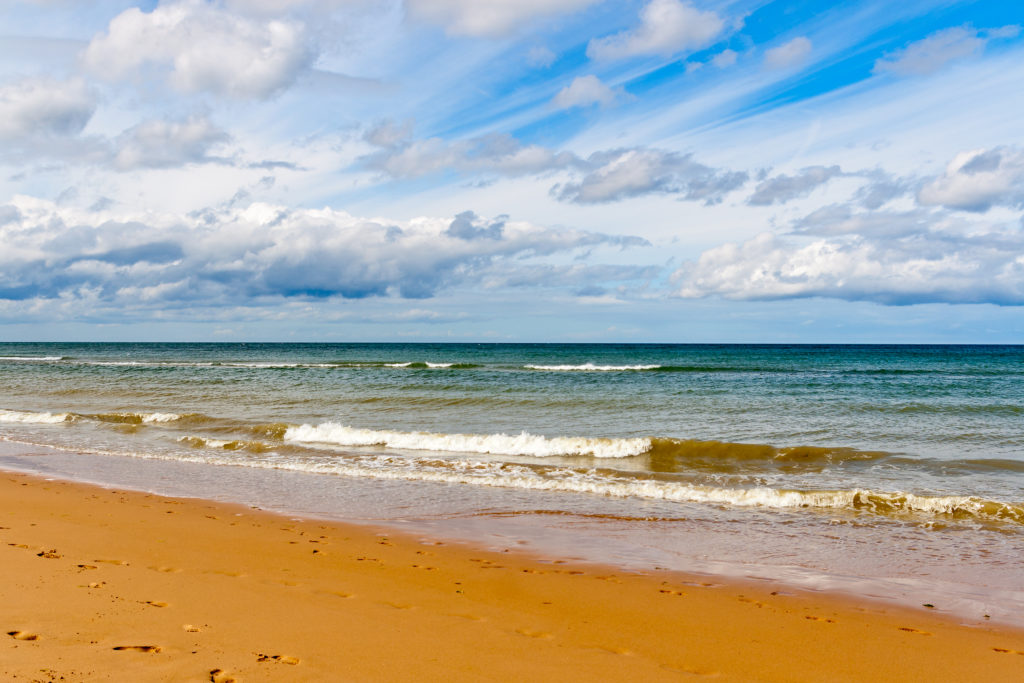
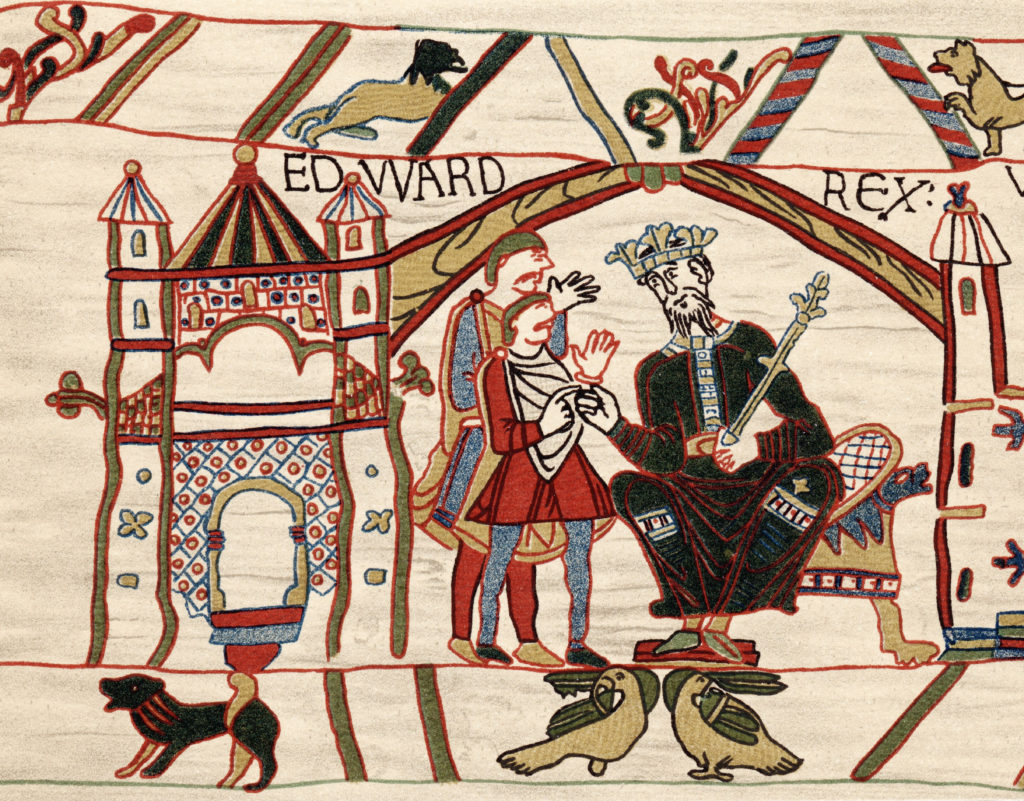
Bayeux Tapestry
A millennium earlier, the French went in the opposite direction to invade England. At Bayeux, you can see the Bayeux tapestry that documents the invasion. The audio guide presentation of the tapestry is excellent–a definite must-see.
For more detailed information about recommended places to see in Normandy, check out Top Normandy Sights for Art & History Lovers.
Practical Tips for Your Visit to Honfleur
Honfleur makes a good home base for a few days while you tour the area. We stayed at the Hôtel L’Ecrin, a lovely old mansion house set in beautiful gardens that included a pool. Free parking was a bonus as was the location of the hotel, an easy stroll to the harbor.
Check the map below for other accommodation options in the area.
Booking.comFor more about traveling around and enjoying Normandy, see my post Top Normandy Sights to Excite Art & History Lovers.
#2: Côte de Granit Rose, Brittany
Gregg and I have visited the spectacular Côte de Granit Rose twice and hope to return. Thanks to its many plages (beaches), the area is a popular destination in the summer for French families. But the area doesn’t feel touristy or crowded.
What is Special About the Côte de Granit Rose as a Place to Visit in France?
The thirty-kilometer stretch of pink granite rocks twisted into fantastic shapes is considered one of the most outstanding coastlines in Europe. The marriage of pink rocks with turquoise ocean has inspired many artists, notably the French surrealist artist Yves Tanguy (1900-1955).

This area is perfect for walking and hiking. In fact, you can walk the sentier de douaniers, a former coastguard footpath, from Perros-Guirec via Ploumanac’h to Trégastel Plage. You’ll pass rocks that make you think of slabs of pink-tinted fudge huddled around invitingly sandy coves perfect for paddling in.
The last time we were in the area, a violent windstorm reminded us how nature is her own best artist, using wind and water to sculpt the rocks into such fantastic shapes.
Getting to the Côte de Granit Rose
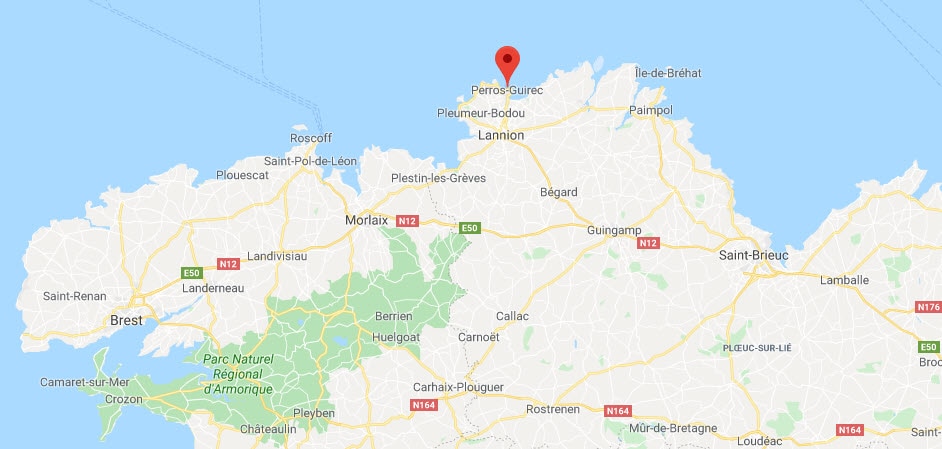
You need a car to tour this area of northern Brittany. Consider allocating a week to enjoy two or three areas in Brittany–perhaps two nights in the Côte de Granit Rose, two nights farther west in Crozon in the Parc Naturel Regional d’Armorique, and then two nights farther south near Carnac.
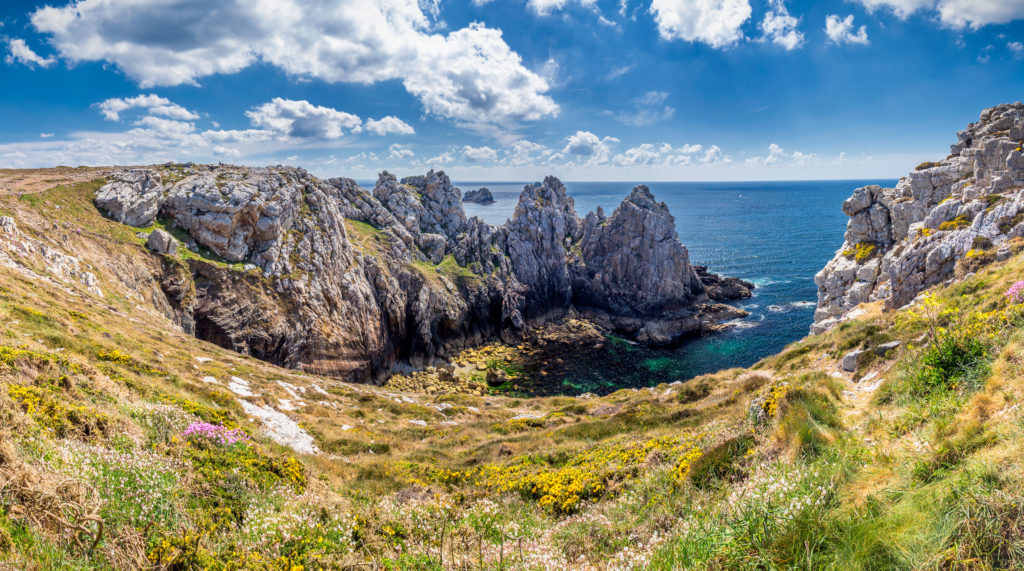
But even a week isn’t long enough. You could easily spend two weeks!
In Brittany, driving is slow along small country roads, and Brittany itself is surprisingly large and varied. Take your time to explore both the northern and the western/southern coasts of this spectacular peninsula.
Did you know that in Brittany, people consider themselves Bretons first, French second? You will occasionally see signs written in Breton–a language related to the Celtic languages of the British isles. After all, Brittany is not far from Cornwall in England.
Practical Tips for Your Visit to the Côte de Granit Rose
We always found delightful small hotels in Brittany. Another option is to rent a house for an extended stay. And while you’re in Brittany, make sure you sample plenty of galettes–the Breton crepes.
Towns to stay at in the area include Trégastel, Perros-Guirec, and Saint-Guirec.
Booking.com#3: Gavrinis, Gulf of Morbihan, Brittany
Known as the island of ancient stones, tiny Gavrinis is located in the Gulf of Morbihan, renowned as one of the largest and most beautiful bodies of water in France.
In an area brimming with ancient burial sites, stone alignments, and other Neolithic sites, the burial chamber at Gavrinis is considered one of the most interesting.
What is Special about Gavrinis as a Place to Visit in France?
The Neolithic structure on the island of Gavrinis consists of a tumulus (earth mound) that covers a cairn (stone mound) that in turn covers a dolmen within which is the stone burial chamber. We were told that at Winter Solstice, the sun shines down the passageway and hits the back wall.
How did Neolithic people figure out how to do that? I haven’t a clue, but I love visiting neolithic sites, like Carnac in Brittany and of course, the big kahuna, Stonehenge in England, to try and find out.
What makes Gavrinis unique are the swirling patterns and symbols cut deep into 23 of the 29 rock slabs that form the 24-meter passageway leading to the burial chamber. The designs were cut into the stone over 5,500 years ago (3,500 BC) by some very artistic and amazing people.

[CC BY-SA 4.0 (https://creativecommons.org/licenses/by-sa/4.0)]–Gavrinis passage. Replica in the “Musée des tumulus de Bougon” (Deux-Sèvres), France.
Who were they and why did they make the carvings? You’ll find out on the 90-minute guided tour (including the boat trip) required to view the burial chamber.
The carved patterns are startling in their modernity—zigzag lines, swirls, lozenges, and circles. Some of the shapes appear to be non-abstract objects, such as axes and horns.
Getting To Gavrinis

The island is accessible by a guided tour from the small town of Larmor-Baden. The boat trip across the sparkling waters of the Gulf of Morbihan makes the 90-minute tour especially enjoyable.
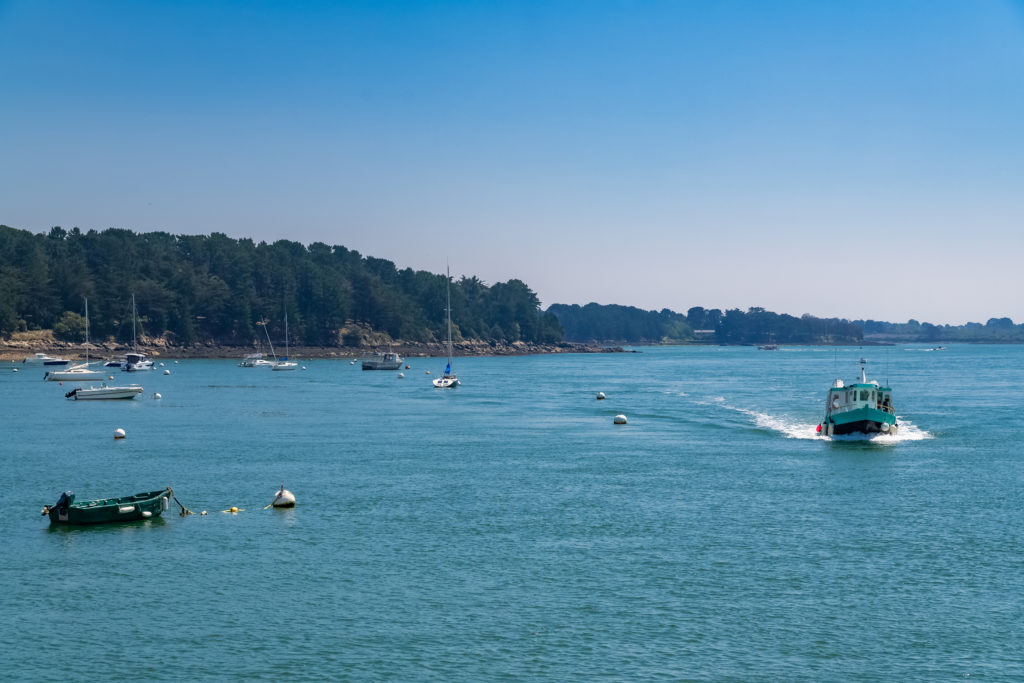
Check the Brittany Tourism site for more information about touring Gavrinis.
Practical Tips for Your Visit to Gavrinis
The Gulf of Morbihan area is worth several days of your time so you can explore dozens more Neolithic sites and enjoy the marine scenery.
The island of Gavrinis is uninhabited and the village of Larmor-Baden where you catch the boat to tour Gavrinis doesn’t have much in the way of accommodations. However, you’ll find plenty of small, family-run hotels in the area. Zoom out the map below to find some options.
Booking.com#4: Chenonceau, Loire Valley
The Loire Valley is famous for its beauty, its wine, and its châteaux. It’s definitely a must-visit place in France! Even if you don’t have a week to explore, consider taking a day trip from Paris to at least see the highlights.
Back in the days before the French Revolution, kings and dukes and marquises and your basic blue-blood types built their summer cottages in the Loire Valley.
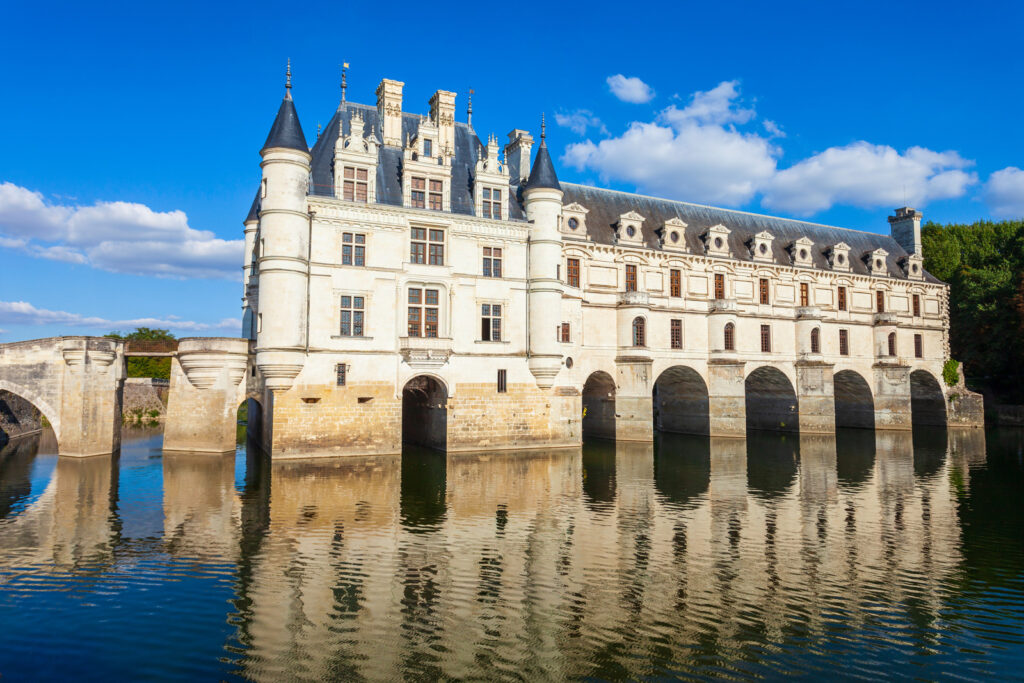
Okay, cottages is maybe a bit of a misnomer. The number, variety, size, and awesomeness of the châteaux in the Loire is astonishing. You won’t run out of architectural wonders to gawk at, ornamental gardens to wander through, and history to learn.
What is Special about Chenonceau as a Place to Visit in France?
The Château de Chenonceau is my favorite Loire Valley château.
A series of graceful arches supports the château across the river Cher. In World War II, Vichy France was on one side of the river and Free France was on the other. I wonder how many people used the château to escape to freedom.
The first château dated from the 12th and 13th centuries, of which only the dungeon remains: the Tour des Marques. The château in its current form was built between 1513 and 1517.
Women have played an outsized role in the development of Chenonceau. Henry II gave the château to his mistress, Diane de Poitiers, who, shortly after his death, was kicked out by his wife, Queen Catherine d’Medici. Catherine managed the Kingdom of France from her study, the Green Cabinet at Chenonceau.
In the 18th century, Louise Dupin, an exceptional woman who drafted a Code of Women’s Rights, entertained some of the biggest names of the Age of Enlightenment at Chenonceau.
During your visit through the sumptuous rooms, you’ll learn all about these remarkable women and a lot more. Also visit the formal gardens and imagine yourself in Renaissance dress taking your morning constitutional. There is even a maze!
If you had money back in those days, you sure had it made.
Getting to Chenonceau
Chenonceau is located on the Cher river 214 km west of Paris and 34 km east of Tours. If you don’t have time to stay in the Loire Valley, consider taking a tour from Paris. Here are some options.
Practical Tips for Your Visit to Chenonceau
Spend several days in the Loire Valley so you can visit more than one château, but limit yourself to two a day, at most. Château-visiting gets tiring after a while. Less is more.
To minimize driving, spend two or three days around Tours near Chenonceau and then another two or three days closer to Blois. You won’t run out of places to visit.
Another highlight of a visit to the Loire Valley and the area around Chenonceau is the opportunity to sample excellent wine and food. Of course, that’s true pretty much anywhere in France, but the Loire Valley is particularly blessed.
Zoom out the map below to find accommodation options in the Loire Valley.
For more information about visiting Chenonceau, check the website.
#5: Les Eyzies-de-Tayac-Sireuil, Dordogne, Aquitaine
I chose Les Eyzies-de-Tayac-Sireuil (Les Eyzies for short) because it’s smack in the middle of some of the Dordogne’s most compelling prehistory attractions.
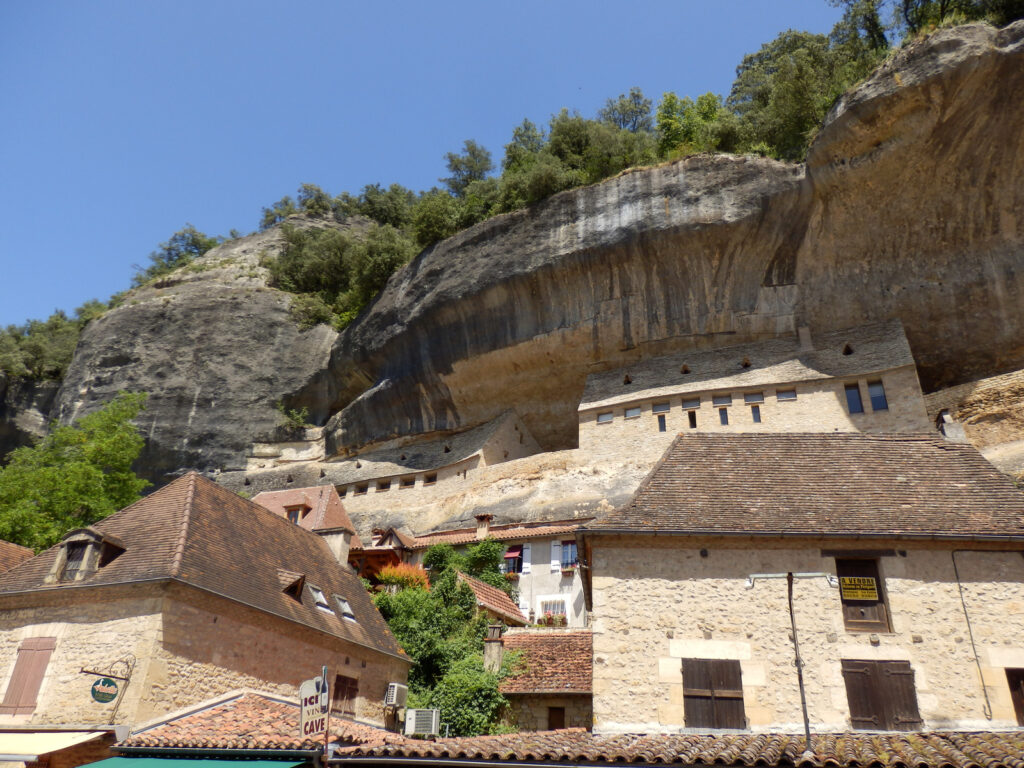
Gregg and I are suckers for prehistory–cave paintings, dolmens, megalithic monuments, archeological museums, the lot. If it’s really old, we like it. And if you are also that way inclined, head for this area of the Dordogne around Les Eyzies.
What is Special about Les Eyzies as a Place to Visit in France?
It’s small and charming and is the location of the wonderful Musée National de Préhistoire. Start your exploration here to discover the rich paleolithic heritage of the Vézère Valley, also known as the European “Valley of Man.”
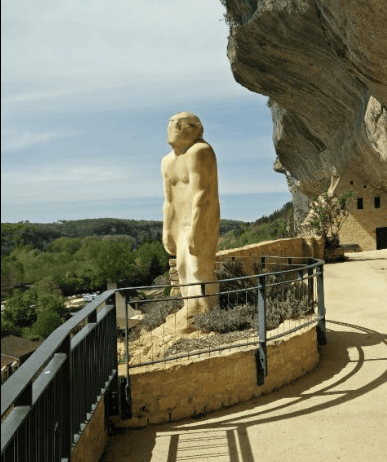
Not far from Les Eyzies is the Grotte de Font-de-Gaume where you can view over 800 engravings and drawings of prehistoric horses, bison, aurochs, lions, reindeer, and more.
The Font-de-Gaume is one of the few extensive prehistoric caves still open to the public. Check online for information and to buy tickets. Admission is limited so make sure you buy your tickets well in advance of your visit.
A virtual tour of the cave is also available.
You’ll find many more prehistoric sites in the area. Stay a few days around Les Eyzies and then drive about thirty minutes north to Montignac to visit Lascaux II. We thoroughly enjoyed our visit there and recommend it to anyone interested in prehistoric cave painting.
Yes, Lascaux II is a replica of 90% of the paintings found in the original cave, but it is still awe-inspiring. You must take the 40-minute guided tour. Check the website for information.
Getting to Les Eyzies
Les Eyzies is a two-hour drive east of Bordeaux in the Aquitaine region of southwest France. Consider staying for several days in the area. In addition to exploring prehistoric sites, châteaux. and super-charming villages, you will find many great restaurants.
We had one of the best meals we’ve enjoyed in France (and that’s saying something) at a restaurant overlooking a sleepy canal not far from Les Eyzies.


Practical Tips for Your Visit to Les Eyzies
You’ll find plenty of charming family-run places in the area. On one trip, we stayed in the tiny village of Thonac about halfway between Motignanc and Les Eyzies. The place was on the Vézère River, which we spent an afternoon canoeing down. Heavenly.
Zoom to see accommodation options in the Dordogne.
#6: Albi, Midi-Pyrénées
Albi in southwest France is a charmingly walkable city with a wonderful red brick cathedral and the world-class Musée Toulouse-Lautrec. If you’re on your way to the Pyrénées, take a day out for Albi.
What is Special about Albi as a Place to Visit in France?
It’s just so darned pretty with its red bricks glowing in the evening light, good restaurants, panoramas over the River Tarn, and laid-back atmosphere.
I also like that it’s steeped in the history of the Cathars–the enlightened sect that practiced a form of proto-Protestantism and refused to recognize the authority of the Catholic church. That didn’t go down too well with the Church (no surprise there) and led to the Cathars being cruelly wiped out in the Albigensian Crusade (1209-1229).
Dominating the ridge above the Tarn River, the cathedral was built a few decades after the conflict and looks more like a fortress than a church. It’s the only large gothic cathedral built out of bricks (pink ones at that) rather than stone.
Here’s a view of the cathedral from our bed-and-breakfast across the river.
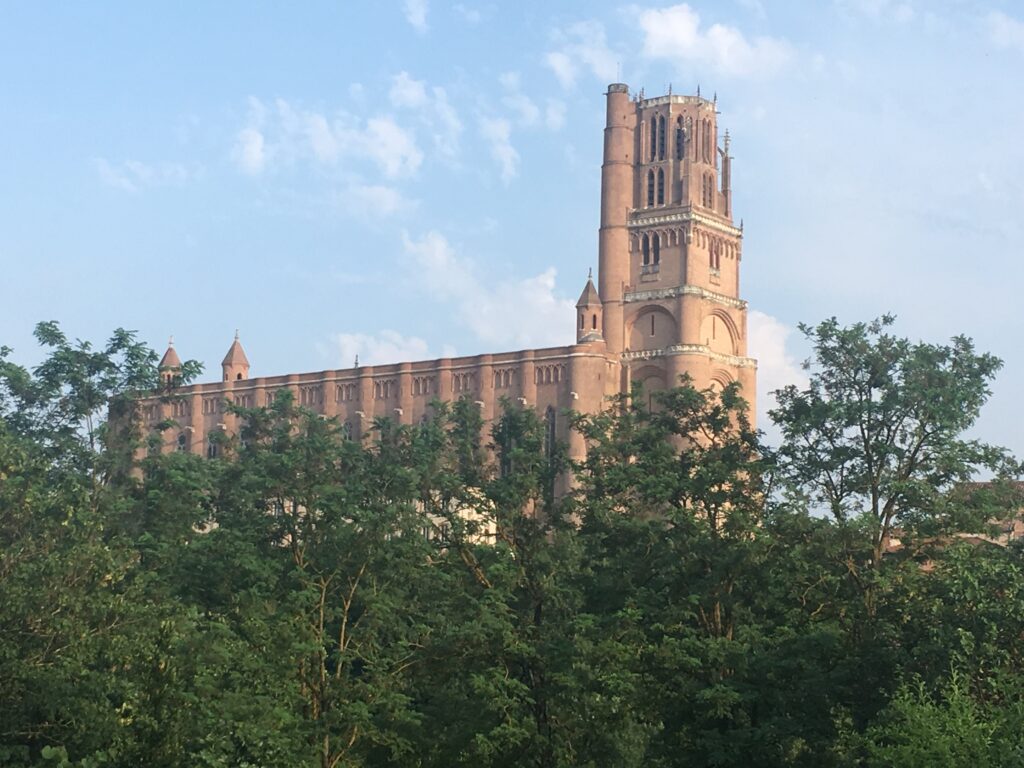
In addition to the cathedral, the big attraction in Albi is the Musée Toulouse-Lautrec located in the also-pink-bricked medieval Palais de la Berbie next to the cathedral.
I include the museum in my post about Seven Super Single-Artist Museums in Europe.
Getting to Albi
Albi is located 85 km northeast of Toulouse. I recommend staying the night so you can wander around the narrow cobbled streets in the evening and watch the sun as it sets over the cathedral.
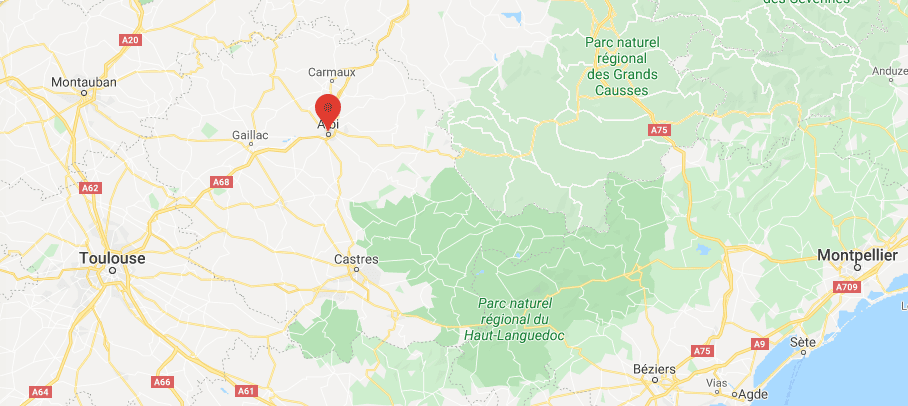
Practical Tips for Your Visit to Albi
Albi makes a good stop either on your way east from the Dordogne or on your way west toward the Pyrenees and Spain. It’s far enough off the beaten track to retain its provincial feel while still maintaining good tourist services.
Zoom to find accommodation options in Albi.
#7: Chaos of Montpellier-le-Vieux, Milau, Midi-Pyrénées
If you like weird rock formations, you must pay a visit to the Chaos of Montpellier-le-Vieux. Situated in the heart of the Grand Causses Regional Natural Park about 15 km from Milau and south of the Ardeche area of southwest France, the Chaos is far off the beaten path. You’ll need to plan a special trip.
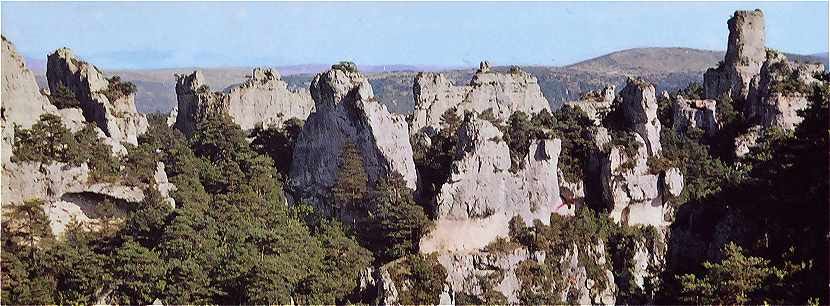
Photo Credit: La Cité de Pierres
What is Special about Chaos of Montpellier- le-Vieux as a Place to Visit in France?
The Chaos is nature’s art gallery–a maze of canyons bristling with tortured limestone formations. You’ll find over 30 natural works of art, the result of centuries of erosion, with fanciful names such as The Great Sphinx, L’Arc de Triomphe, The Crocodile, The Cathedral, and the Chair of the Devil.
The most accessible rock formations are contained within a 120-hectare area called La Cité de Pierres. On the website, you’ll find information and pictures about the geology, the 30 natural works of “roc-Art”, the 12 rock shelters showing evidence of human habitation from the Neolithic period to the Middle Ages, and some beautiful panoramas.
Getting to Chaos of Montpellier-le-Vieux
It’s pretty remote! We visited while enroute from the city of Montpellier on the Mediterranean northwest toward Albi.
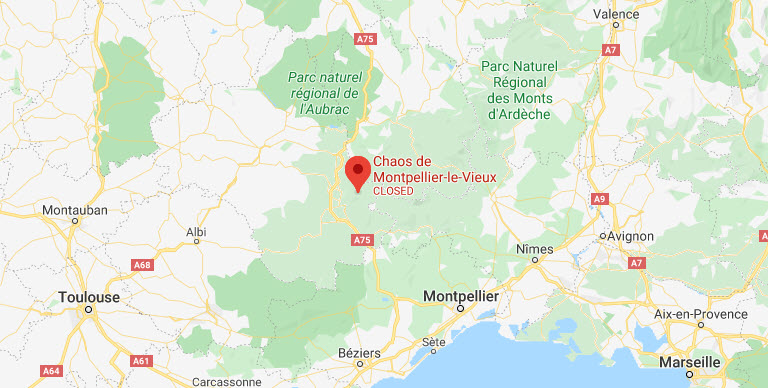
Practical Tips for Your Visit to Chaos of Montpellier-le-Vieux
The area is rugged with some of the most precipitous roads we’ve ever driven in Europe. Leave yourself plenty of time and consider staying the night in Milau.
#8: Camargue, Provence
South of Arles and bordering on the Mediterranean Sea is Europe’s largest river delta–the vast, flat, and wildlife-teeming Camargue. Every time we visit, we declare that we really need to stay longer to explore the lakes and marshlands.
The Parc naturel régional de Camargue protects the area and provides visitors with facilities such as observation towers, information boards, themed trails, and guided tours.
What is Special about the Camargue as a Place to Visit in France?
The wild and flat scenery is beautiful, but for me the big attraction of the Camargue is its wildlife–horses, bulls, and especially flamingos. I don’t know why, but it feels very exotic to come across flocks of flamingos in Europe. Even from the road, you can see them standing serenely in the marshes, looking pink and delightful. If you’re into birds, the Camargue is a must-see with more than 400 species of birds.
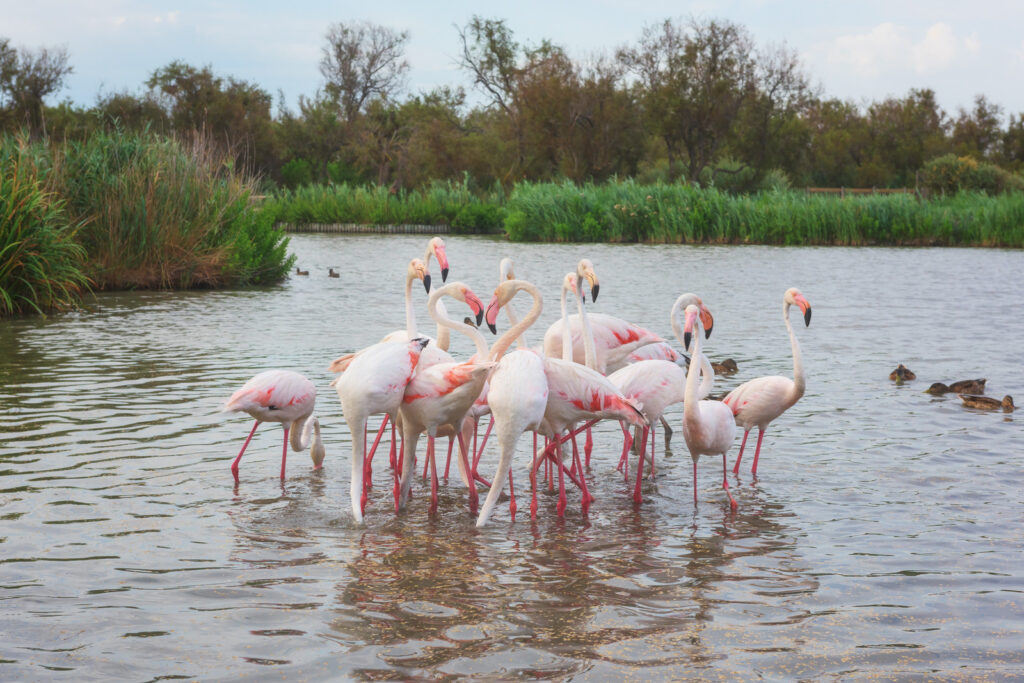
On one trip to the beach, we were surprised to look across the marsh from where we’d parked the car and see several very large, very horned grazing bulls. We stayed clear! Shortly after seeing the bulls, Gregg dove into a foot of water (he thought it was deeper) and smacked his head on the sea bottom. Fortunately, it was sand, but the bruise persisted for many days!

And of course, if you’re lucky, you’ll see the famous Camargue horses galloping freely, white manes flowing. Riding stables are scattered throughout the area if you harbor fantasies of riding a horse along the beach. Here’s a TripAdvisor list of horseback riding tours accessible from Saintes-Maries-de-la-Mer.

Getting to the Camargue
The Camargue is located between Montpellier in the west and Marseille in the east. Drive south from Arles and you’re in the Camargue.
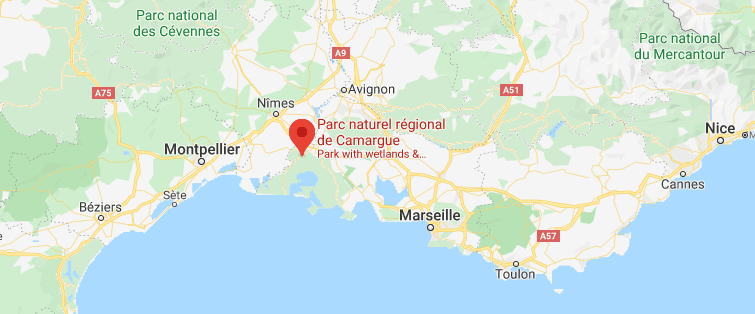
A good strategy for exploring the area in a few days is to home base in either Arles or Saintes-Marie-de-la-Mer. We like both places for different reasons. Arles has the Roman arena and, of course, its association with Vincent van Gogh. With its winding streets, good shopping, and outdoor cafes, it’s a very pleasant town to spend time in.
Saintes-Marie-de-la-Mer is, as its name suggests, on the Mediterranean Sea. Bristling with boats, cute shops, and cafes, the town is well worth a visit. When we were last there, it was mid-springtime, and the place was virtually deserted.
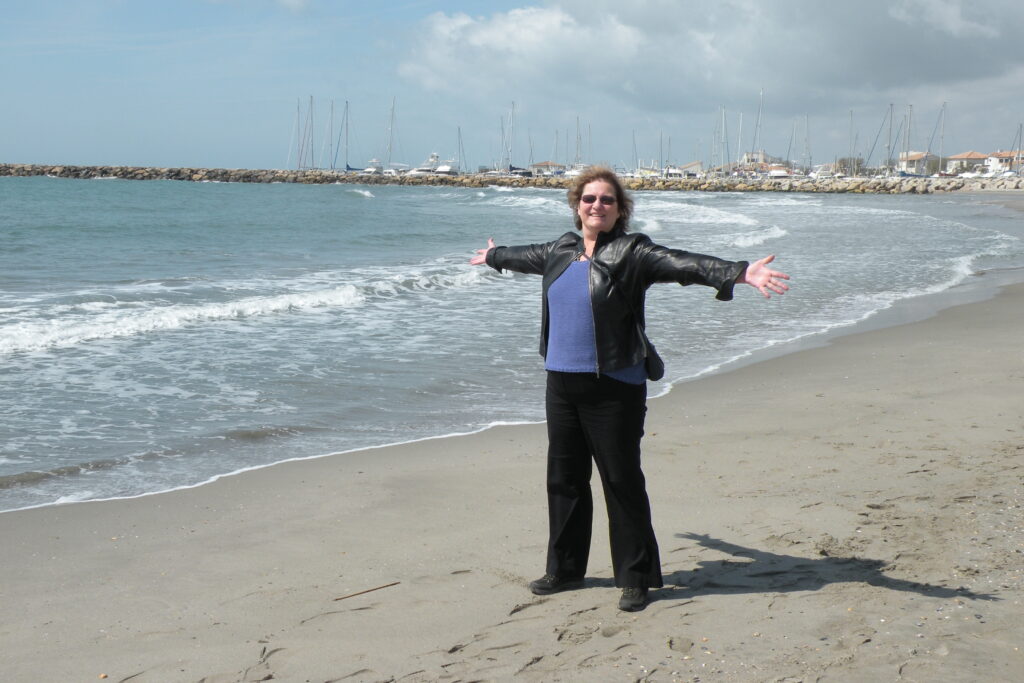
Practical Tips for Your Visit to the Camargue
Two words: mosquito repellent! We got caught without any while taking a stroll through the Camargue wetlands in mid-summer and oh, dear. It was not pretty. I tried counting how many mosquito bites I got and had to give up.
We discovered a brand of mosquito repellent in France called Le Camargue. That tells you something.
Below are accommodation options in the area.
#9: Carrières de Lumières, Les Baux-de-Provence
This relatively new attraction in a quarry near Les Baux-de-Provence brings you up close and personal with massive projections of artworks, particularly the art of Vincent van Gogh. Managed by CultureSpaces, the exhibition is a “digital immersive experience.”
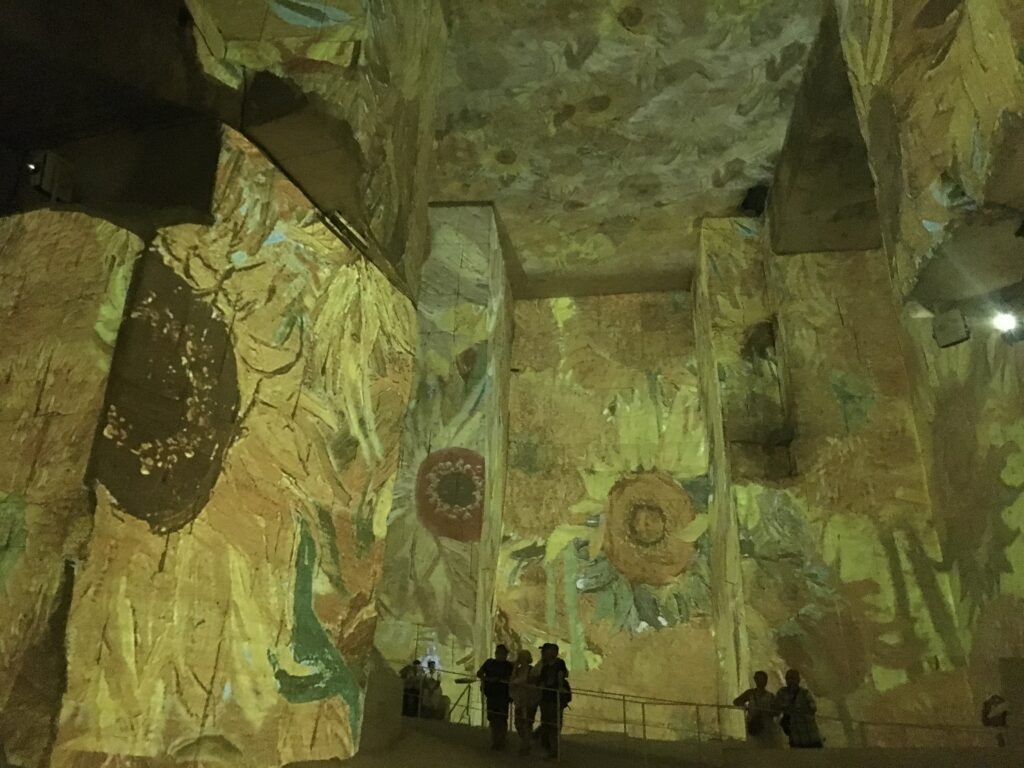
We visited in June 2019 and saw two “experiences”: Van Gogh and Japanese Prints. Both ran about 30 minutes and were accompanied by music.
What is Special about Carrières de Lumières as a Place to Visit in France?
Digital immersive experiences are definitely becoming a thing. The CultureSpaces website list three digital art centres in France: The Carrières de Lumières in Les-Baux-de-Provence, the Atelier des Lumières in Paris, and the Bassins de Lumières in Bordeaux.
In the enormous interior space that was once a rock quarry, artworks are projected and duplicated. You are literally walking into the art. The experience is truly remarkable.
Here’s a video I took of the van Gogh performance when the sunflower paintings were being projected. The venue is dark, but you can get some idea of the scale of the projections.
Getting to Carrières de Lumières
The Carrières de Lumières is located 800 m from the Château des Baux-de-Provence, 15 km north-east of Arles and 30 km south of Avignon.
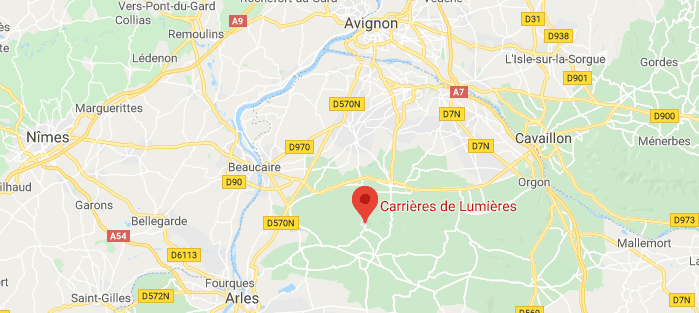
Practical Tips for Your Visit to Carrières de Lumières
Purchase your tickets in advance. Admission to the Carrières is strictly
limited so if you don’t have advance tickets, you may be out of luck. Parking
near the venue is also very limited. Check the website for details.
Once you’ve toured the Carrières de Lumières, spend some time exploring
Les Baux-de-Provence, preferably in the late afternoon or early evening when the bus tours have pulled out. From the ramparts at the top of the village, you get a panoramic view of the surrounding countryside.
Each time we’ve stayed near Les Baux-de-Provence, we’ve found wonderful
rural properties with pools. Here’s a video I shot on the grounds of the Domaine du Mas Foucray situated near the small town of Maussane-les-Alpilles and within sight of Les-Baux-de-Provence. Billed as an aparthotel, our one-bedroom suite included a kitchen and sitting area and a private terrace. In early July when we were there, we picked fresh apricots off the trees.
For more options, see the map below.
#10: Roussillon, Luberon, Provence
Roussillon has been a family favorite since we first discovered it 25 years ago. The red and ocher walls of the village houses distinguish it from other villages in the Luberon area.
The village itself is truly lovely in an area full of lovely villages, including Bonnieux, Ménerbes and Gordes. Pick any village in the Luberon and settle in for several days.
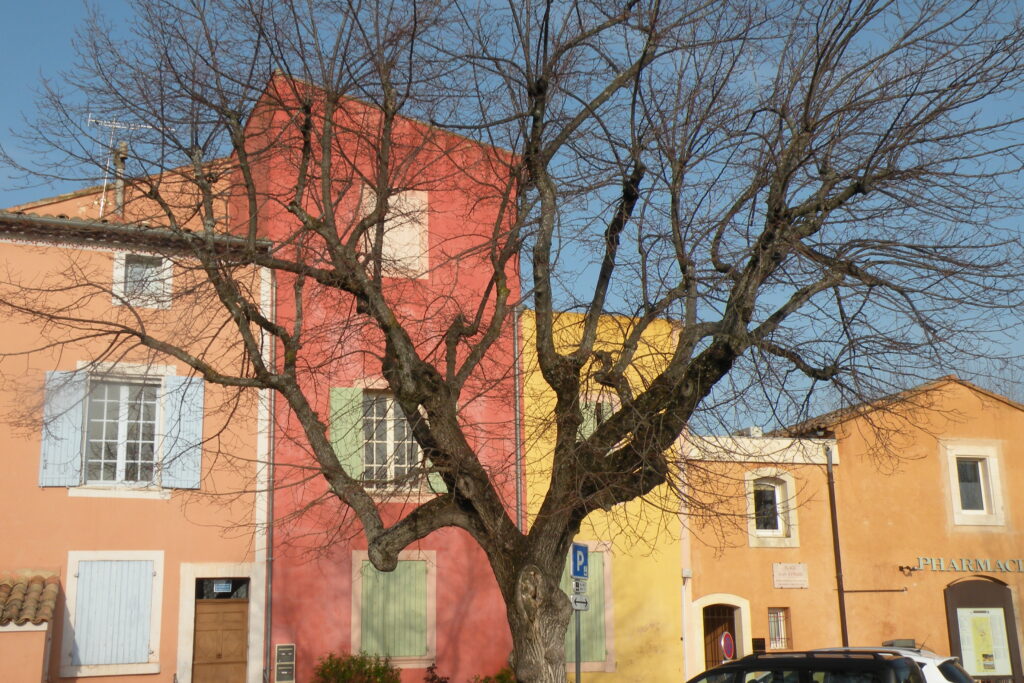
What is Special about Roussillon as a Place to Visit in France ?
What really distinguishes Roussillon are the ochre cliffs situated about 200 meters from the entrance to the village. Trails that make up the Le Sentier des Ocres wind through this magical area where the vivid oranges, yellows and reds of the ochre cliffs contrast with the green trees and brilliant blue Provençal sky.
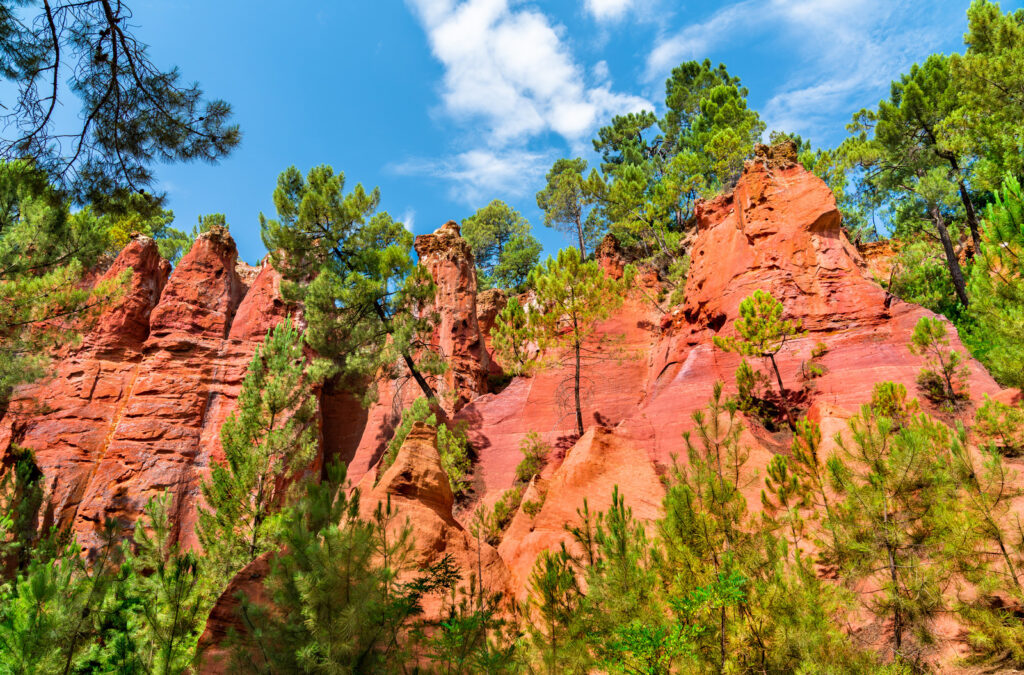
When you arrive in Roussillon, leave your car in the main parking area and walk to where Le Sentier des Ocres starts. Visit Roussillon late in the day, say, about an hour before the quarry closes. Then you can enjoy it relatively crowd-free and take spectacular photographs of the ochre cliffs in the afternoon sun. After your stroll through the quarry, wander around the village and have dinner at one of the local restaurants.
Several shops sell locally produced ceramics (I have a piece on my desk as I write) and other Provence-themed products. End the day by dining at one of the many restaurants in the village. Most have terraces and beautiful views.
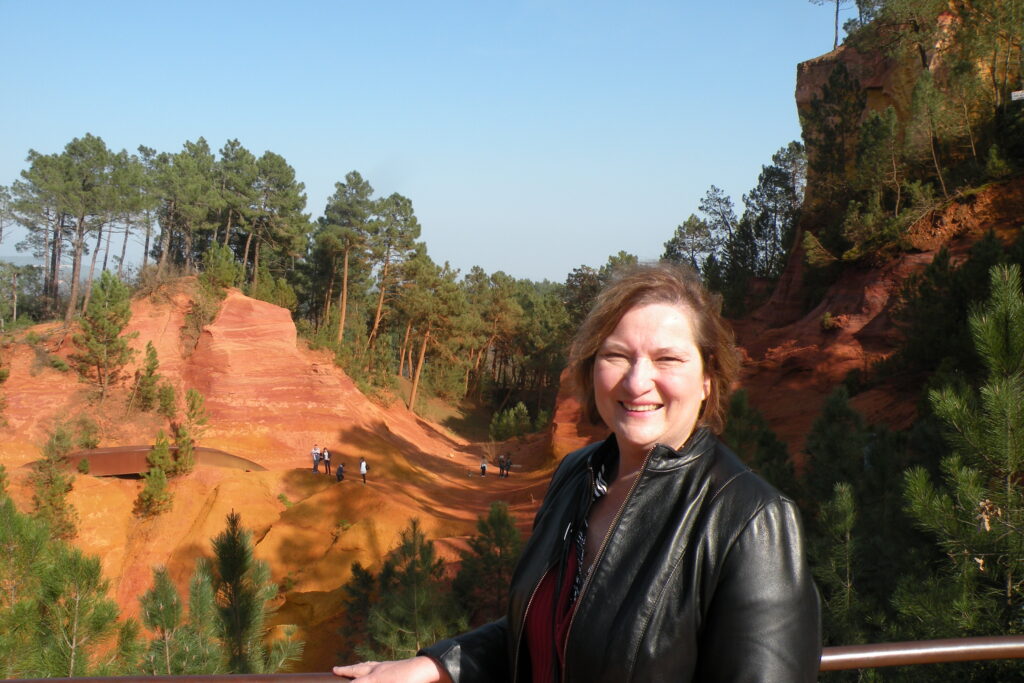
Getting to Roussillon
Roussillon is about an hour’s drive east of Avignon. The main villages–Gordes, Ménerbes, and Bonnieux– are close by. You need a car to enjoy the area.
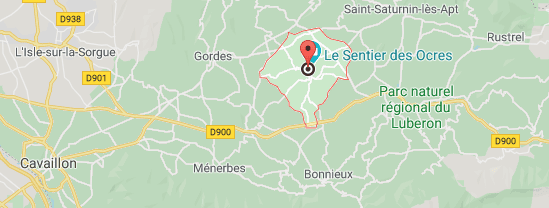
Practical Tips for Your Visit to Roussillon
Here are two highly recommended hotels in the Luberon, one in Roussillon and one in Gordes.
Les Sables d’Ocre – A 15-minute walk from the village of Roussillon, this place sets the bar for what a country-style, family-run, low-key, easy-on-the-budget place should be. Book a room that includes a terrace. You’ll have your own private outdoor space and be steps from the pool.
Domaine de l’Enclos – This place close to Gordes–one of the most beautiful hill towns in the area–is wonderful. We snagged a room with a terrace which Gregg made use of to do some drawing. The views from the garden over the Luberon are spectacular.
For more accommodation options, check the map below.
#11: Château La Coste, Aix-en-Provence
On a beautiful May day in 2018, we drove into the hills behind Aix-en-Provence with no particular destination in mind. The day was gorgeous–fluffy white clouds, not too hot, fresh breeze. Perfection!
We hoped to stumble across a nice side-of-the-road restaurant to enjoy a hearty Provençal lunch, preferably overlooking the landscape that had inspired Cézanne.
Rounding a bend in the twisty secondary road, I saw a sign to Château La Coste. I didn’t know anything about the place, but in the vague hope that it would have a café attached to it, I told Gregg to turn left and follow the signs.
And so we discovered lovely and luscious Château La Coste with its gourmet lunch and, best of all, its several hectares of modern outdoor sculptures.
What is Special about Château La Coste as a Place to Visit in France?
Château La Coste is a vineyard that also features a fabulous art walk populated with modern sculpture. Artists and architects from around the world were invited to visit the domaine and choose a place in the landscape on which to create a sculpture or installation.
The resulting Art Walk is an eclectic array of pieces, many which move with the wind and can be pushed, sat upon, and walked through. The Art Walk is extensive and includes hills, so put on your walking shoes and bring water.
Here’s a selection of pieces we explored.
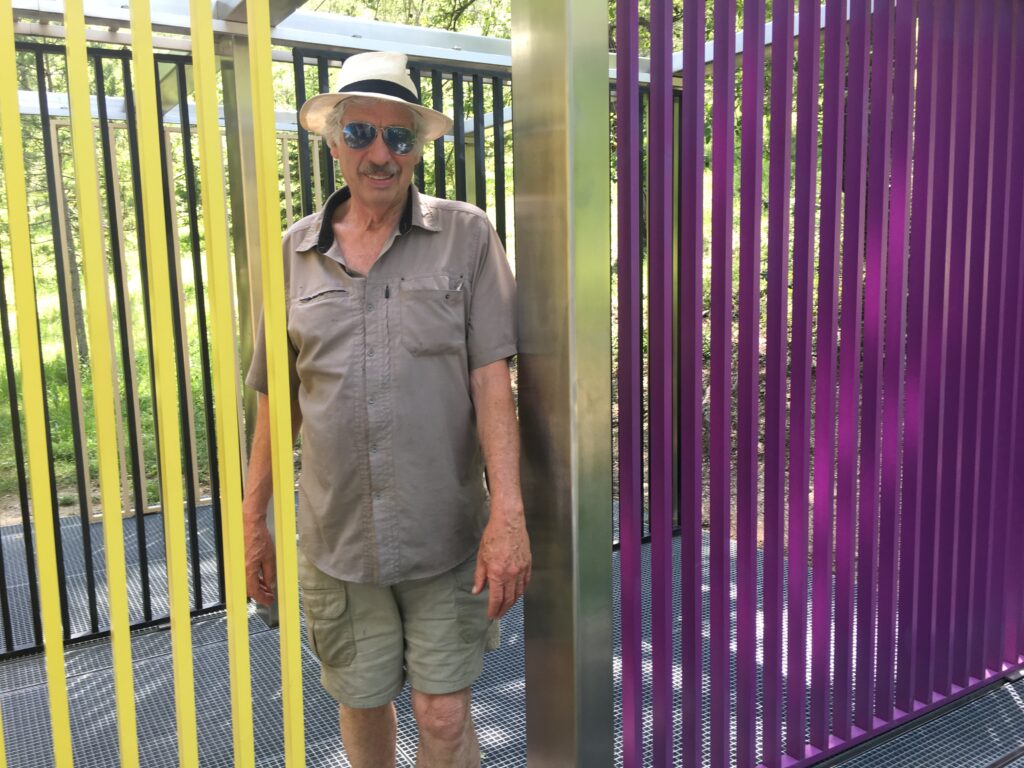
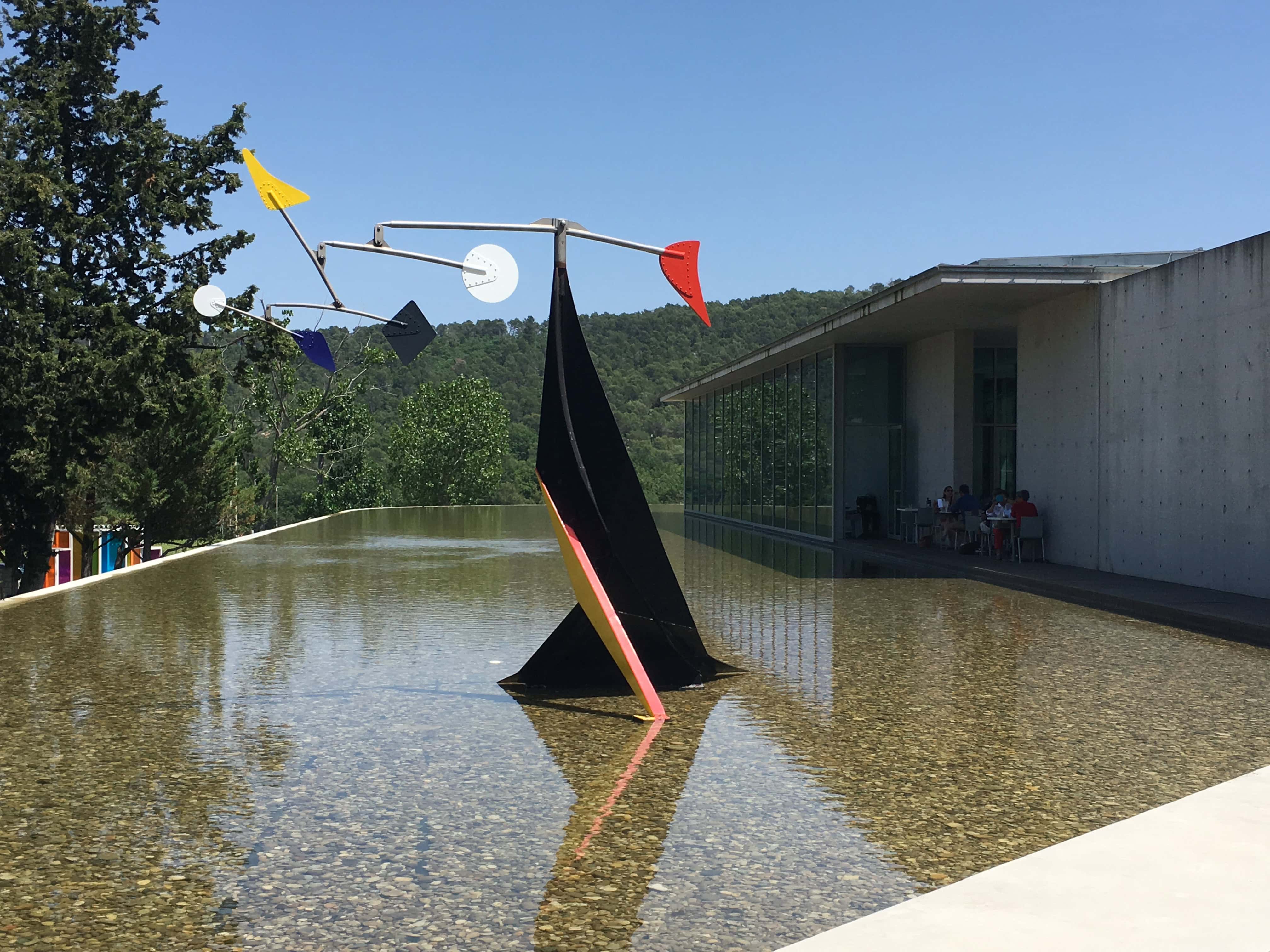
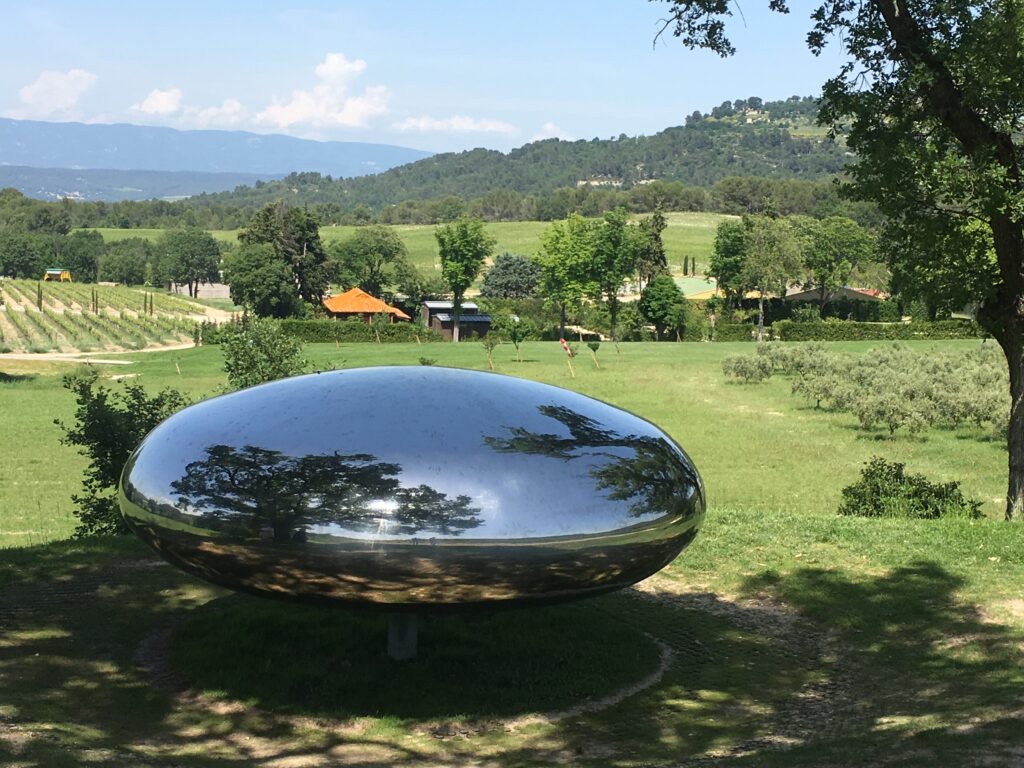
Getting to Château La Coste
Château La Coste is about 15 km north of Aix-en-Provence along a beautiful winding secondary road with gorgeous views over the countryside. Drop in for lunch (the food was fabulous!), pick up a few bottles of wine, and do the Art Walk. You can easily spend an entire afternoon there.
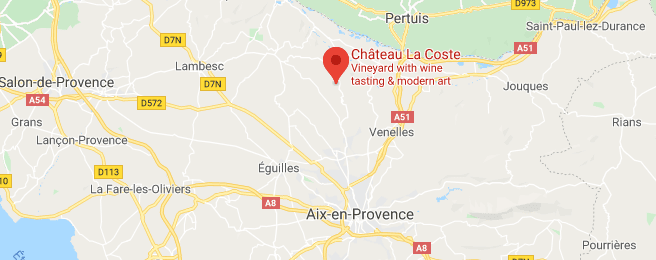
Practical Tips for Your Visit to Château La Coste
You can go all out and spend a night (or three) at the Villa La Coste, billed as a luxury hotel and spa. It’s way out of our price range, but wow – it looks amazing!
Here are other options in the area.
#12: Seillans, Var, Provence
When you drive into Seillans, a hill town in the Var region of Provence, you are greeted by a sign announcing Seillans as among the Plus Beaux Villages de France; that is, one of the most beautiful villages in France.
You see these signs all over France at the entrance to villages. On the official website, 159 villages are currently listed. Follow the link above to view them. The website is in French, but the site includes plenty of pictures and maps.
What is Special about Seillans as a Place to Visit in France?
We don’t love Seillans because it’s beautiful (and it really is). We love it because of its association with Gregg’s favorite surrealist artist—Max Ernst.
From 1964 until his death in 1976, Max Ernst lived in Seillans with his wife, Dorothea Tanning, another noted surrealist artist. View a selection of their lithographs at the Seillans tourist office located in the main square about 100 meters from the parking area.
Large black-and-white photographs of Ernst are posted on the stone wall lining the cobbled street leading down to the square.

Just past the square is the exhibition space—the Salle du Couvent (a former convent) in which Gregg has twice exhibited his work, most recently in June, 2019.
We spent two weeks in Seillans. While Gregg chatted with visitors to his exhibition, I wandered around Seillans, snapping pictures and communing with the ghosts of the centuries of humanity who made Seillans home.
Seillans was likely founded around 500 BC by the Saillens, a Celtic-Ligurian tribe. The village grew slowly with one of the oldest surviving structures, the castle from the 11th century, located at the top of the village.
You can only explore Seillans by foot. Drive up the steep road leading from the lower entrance to the village as far as you can go, then leave your car in the large and shady parking lot. From there, walk into the village to explore its quaint and shady streets.
Read more about The Fortified Hilltop Village of Seillans in the Var, Provence.
Getting To Seillans
Seillans is about a 30-minute drive from the A8 motorway that connects the Riviera with Aix-en-Provence, Marseille, and western France. You can choose to exit the motorway at two places. Coming from the west (Aix-en-Provence or Marseille), take Exit 36 and drive north toward Callas. You’ll pass gorgeous wineries sprawling across the rolling countryside.

Coming from the east (Nice or Cannes), take Exit 39 and drive alongside the stunning Lac de Saint-Cassien that is actually reservoir and accessible at several points for water sports.

Practical Tips for Your Visit to Seillans
Seillans is one of several appealing villages in the Var region of Provence. The region is perfect for a one-week stay to fully immerse yourself in the heat and beauty of this relatively under-touristed area. You are only about an hour from the glitz and galleries of the Cote d’Azur; about 40 minutes due south are Sainte-Raphael and Frejus where you can swim in the Mediterranean.

And if you go to Seillans even for a short visit, stay overnight in the area and have dinner at one of Seillans’ wonderful small restaurants. We enjoyed a marvelous meal at Chez Hugo which perches on the edge of Seillans overlooking the bucolic Var countryside.
You’ll find small B&B’s in the area along with several homestay options. We rented a house for two weeks through HomeAway. The house was about a 30-minute walk to the village of Seillans along a lovely country road.
To find other accommodation options in the area, zoom out on the map below.
Booking.com#13: Vence, Côte d’Azur
Over the years, we’ve stayed in a few towns in the hills above Cannes and Nice in the Côte d’Azur. Our favorite is still Vence. It’s big enough to feel like a real town and old and quaint enough to be enjoyable to stroll around.
Whenever we fantasize about living in the south of France, we inevitably agree that Vence would be the perfect location.
What is Special about Vence as a Place to Visit in France?
The town itself is the attraction. Perched high above the Mediterranean Sea, it feels a world away from the glitz and bustle of cities like Canne and Nice. The pedestrian-only medieval streets are quiet and relatively crowd-free, certainly compared to the towns bordering the sea.
Enjoy lunch or dinner in a café, do some shopping, and take in an art exhibition
A highlight of a trip to Vence is touring the Chapelle du Rosaire de Vence, otherwise known as the Matisse Chapel. The stained glass and murals are spare and modern. Matisse himself considered the chapel his masterpiece.
Getting to Vence
You need a car to really enjoy Vence and the surrounding areas. Drive farther north up the Col de Vence to enjoy stunning views of the countryside and the Mediterranean. Also visit Saint-Paul-de-Vence a few kilometers south. The Fondation Maeght is the big attraction there. Read about it in Top Ten Modern Art Museums in Europe.
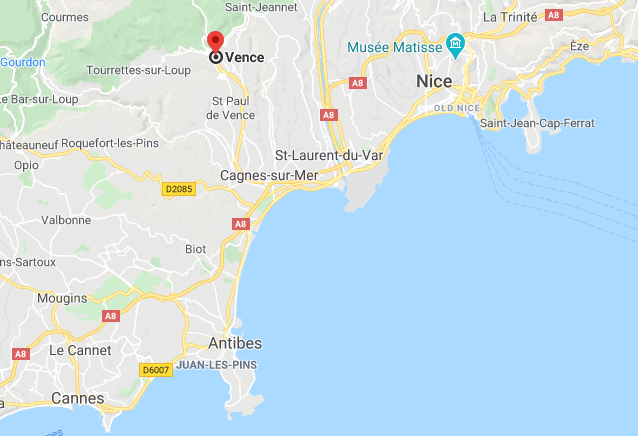
Practical Tips for Your Visit to Vence
In all the years we’ve been visiting the area, we’ve never not found great, family-run hotels to stay in. Here are some options.
#14: Monte Carlo, Côte d’Azur
The last time we visited Monte Carlo (which I know is technically not in France), we did so by mistake. The house we’d rented way up in the hills above Monaco turned out to not be available when we arrived, and we were obliged to find alternative accommodations.
We rolled down the very steep hills to the Mediterranean and for three nights stayed right on the harbor in Monte Carlo. To Gregg’s delight, our hotel overlooked not only the boats in the harbor but also part of the route of the Monaco Grand Prix. Preparations were underway for the 2018 race while we were there.
Our splurgeworthy 4-star hotel room would shoot from a relatively affordable 200 euros per night to 2000 euros per night on race days!
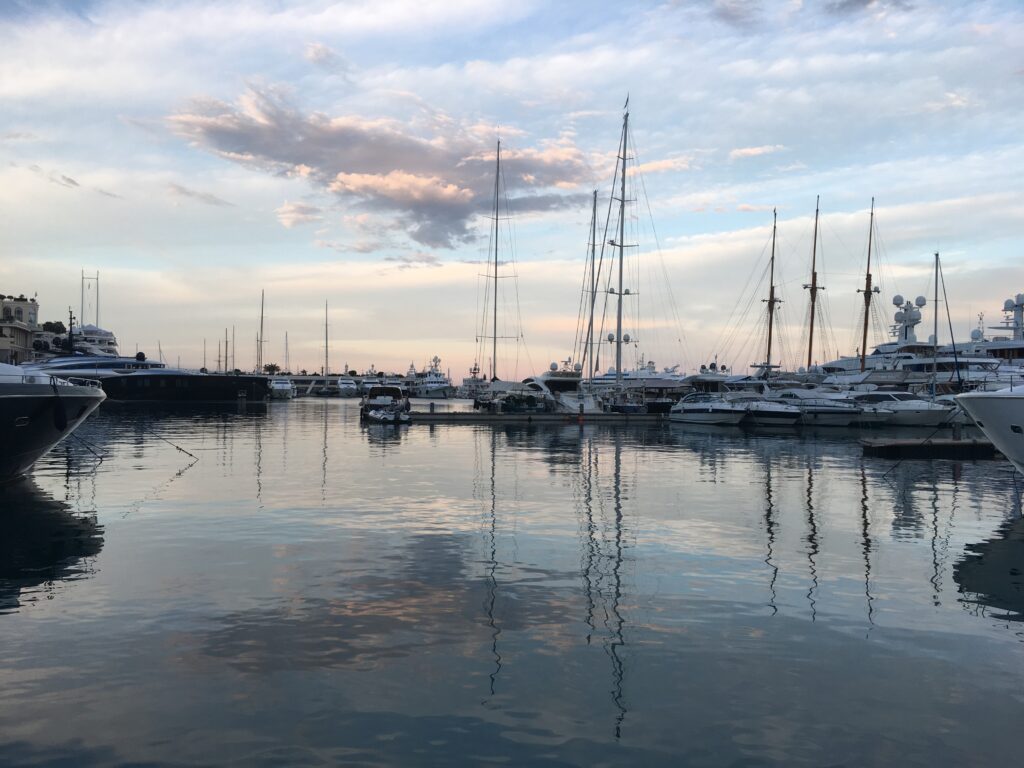
What is Special about Monte Carlo as a Place to Visit in France?
I never expected to like Monte Carlo so much. I’d visited before but only for a short time–just long enough to see where the casino was but not to go in since we were traveling with Julia.
Monte Carlo and Monaco (they kind of blend together) are compact and easy to walk around. Stay for a few days and just wander the narrow streets and quiet squares. Monaco’s old town up on a bluff overlooking the harbor includes the palace and plenty of charming little streets to get lost in.
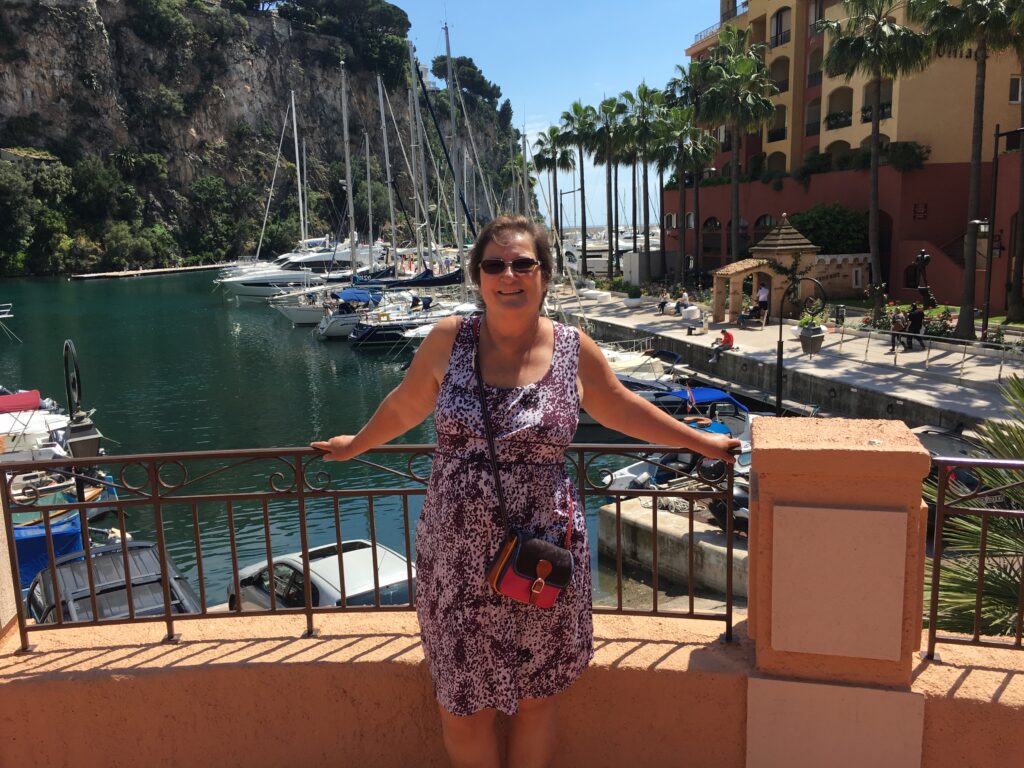
A highlight for us was the car museum, especially for Gregg who is a racing car enthusiast. While in Monte Carlo, he completed this piece as a homage to the Monaco Grand Prix.
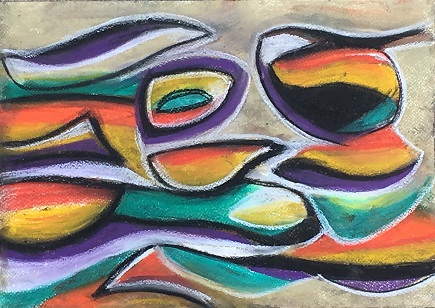
Getting to Monte Carlo
The area around Monaco is very, very tight. If you don’t have to drive, take the train from Nice. If you’re driving, get to your hotel, park the car, and then walk. On one of our days in Monte Carlo, we caught the train to Menton to visit friends, a much easier way to travel. The traffic on the Côte d’Azur is pretty much always dreadful.
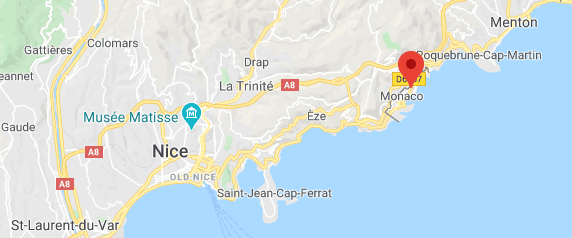
Practical Tips for Your Visit to Monte Carlo
We stayed in the fabulous Port Palace Hotel right on the harbor. It was a splurge but worth every penny. The staff were friendly and the room huge, with a view over the boats. Here are other options.
#15: Palais Idéal, Hauterives
In 1879, a postman named Ferdinand Cheval picked up a stone while on his rounds and over the next 33 years built a fantasy structure that can only be described as surreal. In fact, the surrealists led by André Breton consider postman Cheval’s Palais Idéal as the precursor of surrealistic architecture. Breton, along with other artists, including Max Ernst and Léonara Carington, visited and wrote about the Palais Idéal several times.
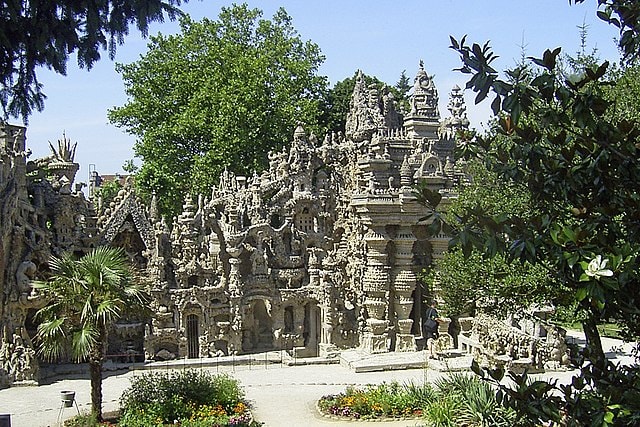
The Palais Idéal is also considered a premier example of Naïve art. Ferdinand Cheval, who had no training in art or architecture, is recognized as a pioneer of Naïve art.
The Palais Idéal may be off the beaten track for many tourists, but it is well known to French people. In fact, the day we visited, I wouldn’t be surprised if we were the only English speakers there. It was mobbed by French families eagerly enjoying the quirky melange of cement and rock.
What is Special about Palais Idéal as a Place to Visit in France?
The Palais Idéal is quite simply remarkable. It looks like a cross between Angkor Wat and a strangely ornate wedding cake. You really have to see it and wander through its passageways to admire the incredible details.
You are awestruck by Cheval’s dedication and imagination. If you’re feeling at all cynical about the power of one person’s commitment to fulfilling a dream, visit the Palais Idéal and have your faith in human ingenuity restored.
Getting to Palais Idéal
The Palais Idéal is located about an hour south of Lyon in the village of Hauterives in the Drôme Department of southeast France. Combine a trip to Palais Idéal with a drive through this beautiful area west of the Alps.
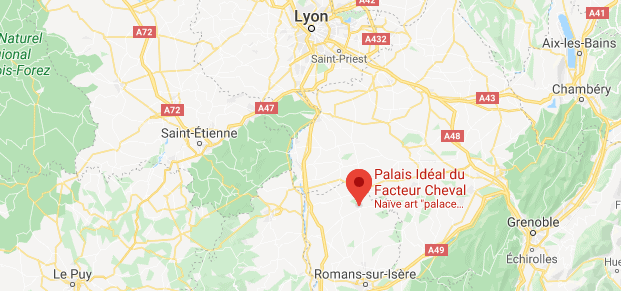
Practical Tips for Your Visit to Palais Idéal
Check the Palais Idéal website for detailed information about ticket prices and location.
Here are accommodation options in the area of Hauterives.
#16: Strasbourg
The city of Strasbourg is not really off the beaten track, but I include it because for us it was a surprise. The Petite France area is utterly charming, with its waterside cafés and Alsatian architecture.
As the chief city of Alsace and a major business center, Strasbourg is also the seat of a number of the European Parliament, the Council of Europe, and the European Court of Human Rights. It’s a hopping place.
What is Special about Strasbourg as a Place to Visit in France?
Strasbourg is the center of Alsatian culture–a unique combination of French and German reflecting a 2000-year history during which custody of Strasbourg frequently changed. The city is also drop-dead gorgeous, with its maze of narrow streets and a melange of architectural styles, including the distinctive half-timbered houses, lining the canals in the Petite France area.
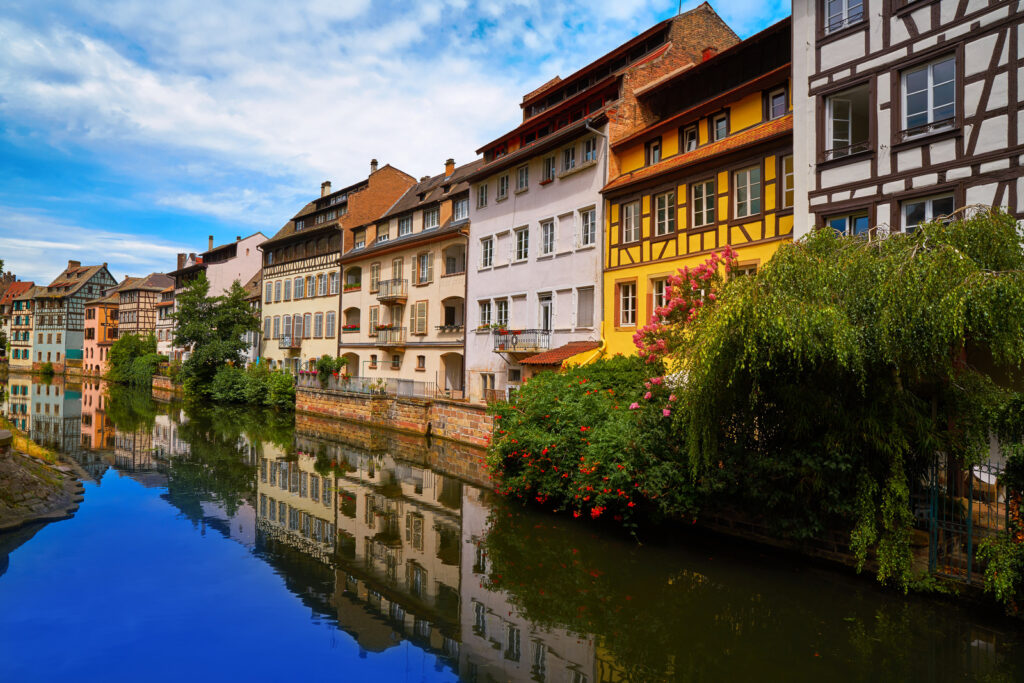
The center of Strasbourg is recognized as a UNESCO World Heritage Site.
Another great attraction of Strasbourg is, predictably, the food! Alsatian cuisine is a unique and hearty combination of French and German, all accompanied with glasses of wine. Strasbourg is close to the Alsatian Wine Trail known for producing Gewürztraminer, Pinot Noir, and Riesling wines.
Also don’t miss Strasbourg Cathedral with its ornate Gothic facade framing a delicately stunning rose window.
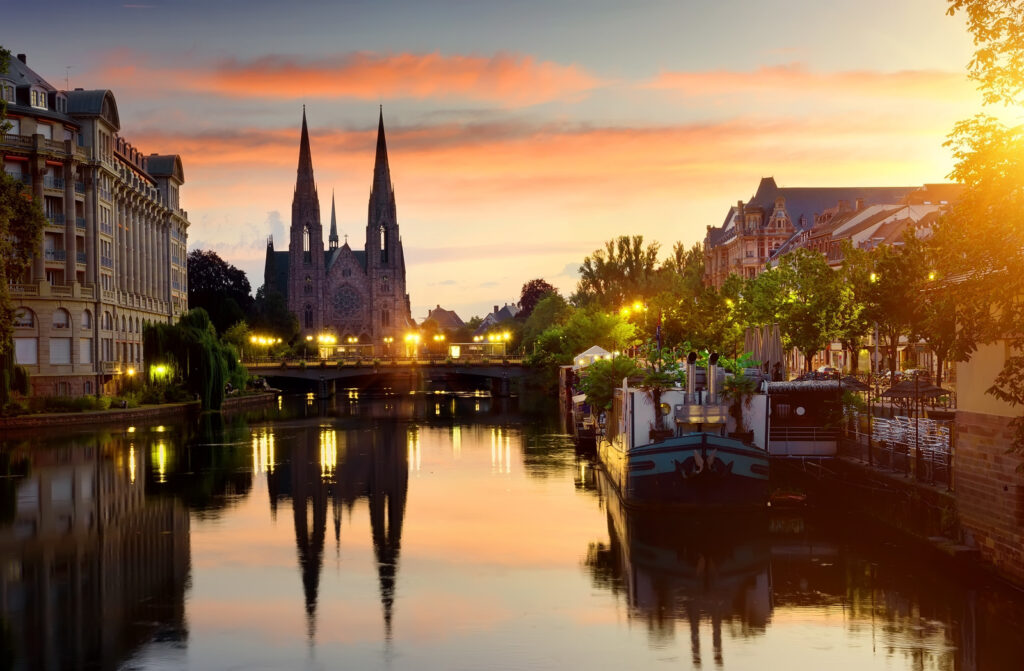
Getting to Strasbourg
If you’re coming from or going to Germany, stop a day or two in Strasbourg.
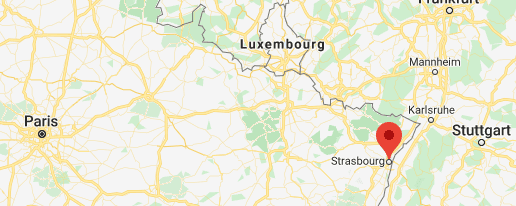
Practical Tips for Your Visit to Strasbourg
Strasbourg’s status as the location for the European Parliament means that it’s very well served by transportation, including an international airport and a TGV train that whisks you to Paris in under two hours.
Here are accommodation options.
#17: Fontainebleau Forest
The Forêt de Fontainebleau is an easy day trip from Paris, but do yourself a favor and settle in for at least one or two nights. That way, you’ll have time to explore both the Château of Fontainebleau and the vast forest, once the hunting grounds of the kings of France and the second-largest national forest in France.
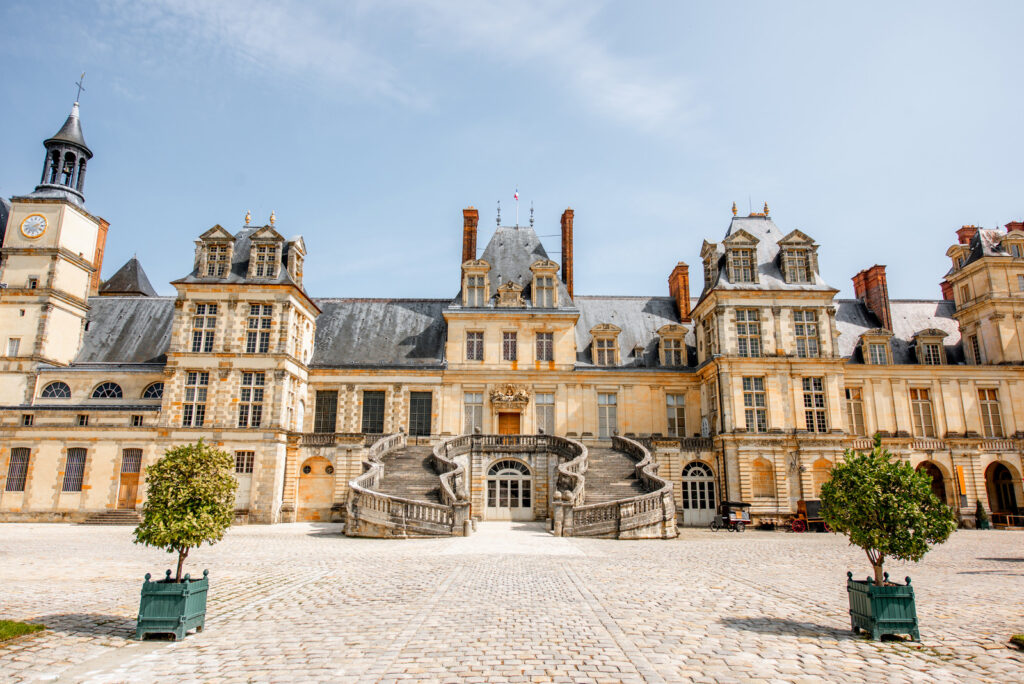
Kilometers of trails criss-cross the forest, taking you past sunlit glades and strange rock formations, many resembling animals, such as elephants, tortoises, and crocodiles.
What is Special about Fontainebleau Forest as a Place to Visit in France?
The Forêt de Fontainebleau has been a mecca for artists since the 19th century when it was the headquarters for the Barbizon group of painters. Gregg was in good company when he created his own series of paintings inspired by the strangely evocative forest. Here are two of his large canvases completed after our first visit to Fontainebleau.
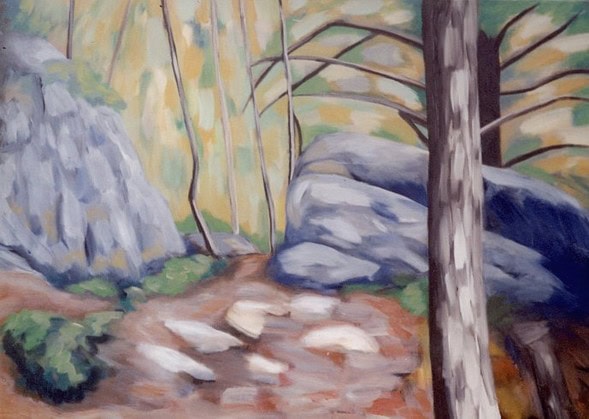
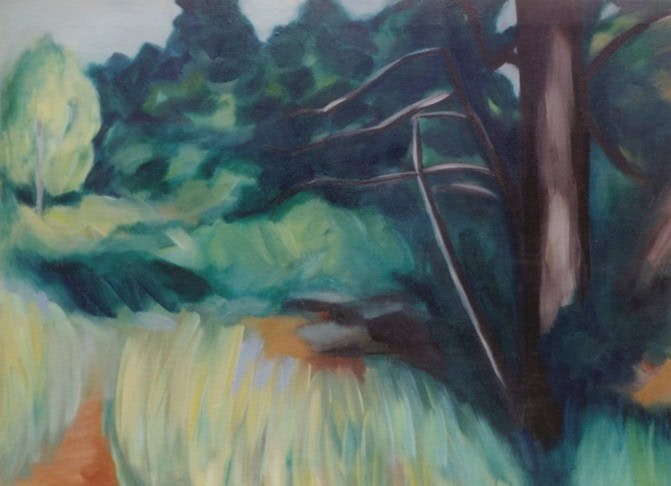
In addition to spending time in the forest, you can’t miss the Palace at Fontainebleau. We were fortunate to visit it just after it opened in the morning and so were the first people to walk through its sumptuous rooms.
I enjoyed our visit to the palace much more than Versailles, which is overcrowded and overpriced. I’m not suggesting you give Versailles a miss—it’s definitely worth seeing. However, if you have time for only one day trip from Paris and you want to see a royal palace, consider the much less touristy, more authentic-feeling Palais de Fontainebleau.
Getting to Fontainebleau Forest
The last time we visited Fontainebleau, we took a train from the Gare de Lyon train station in Paris and then picked up our rental car near the train station at our destination. It’s much less stressful to pick up a rental car in a small town like Fontainebleau than in the middle of Paris (I don’t recommend doing that!).
After spending a day tootling around the forest, we headed south to begin our trip around France.
Allow forty minutes to take the train or drive from Paris to Fontainebleau.
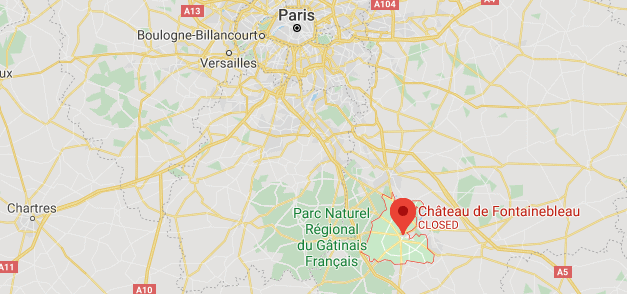
Practical Tips for Your Visit to Fontainebleau Forest
The charming town of Fontainebleau contains several of the type of small hotels we favor when traveling in France. Check options on the map below.
France Guides
Click the image below to discover lots more things to see and do in wonderful France.
Conclusion
Whew! That’s a lot of France! I hope you’ve discovered some new places to visit and re-acquainted yourself with some old favorites.
One of the many things I love about France is how incredibly diverse it is–from the rugged pink granite cliffs in Brittany to the pastoral, château-studded Loire Valley and south through the history-steeped Dordogne, the wild and wonderful chasms of the Cevennes and Ardeche, the rugged beauty of Provence and then back north alongside the Alps to the Germanic flavor of the Alsace, and finally to get royal in Fontainebleau.
I could easily write a post about another 17 awesome places, but these will do for now!
Have you visited any of the places featured in this post? Let other artsy travelers know about your experiences in the comments below.
Here are some more posts to read next to help you plan and enjoy your time in France:
